Our most advanced aluminum ever
Aluminum frames and components have been commonplace throughout the cycling industry for much of its history, but that doesn’t mean there aren’t extraordinary opportunities for advancement and perfection. With Alpha Aluminum, Trek has applied the most sophisticated concepts of metallurgy and stretched them to the absolute maximum—building frames that are strong, light, and provide a ride quality that rivals that of many of their carbon counterparts.


A lighter, more compliant ride
Over the years, aluminum frames have earned a reputation as being overly stiff and providing poor ride quality compared to their carbon brethren. The engineers at Trek have made it their mission to challenge this assumption, using methods that allow the material to retain its best characteristics—its lightness and strength—while simultaneously improving ride quality. Many cyclists enjoy the responsiveness that comes with stiffer aluminum frames. Unfortunately, what starts out as a snappy, fun ride can quickly become uncomfortable and fatiguing on long or rough outings, making aluminum a poor choice for endurance and adventure-minded riders. Alpha Aluminum was developed to build more compliant frames that retain the acceleration and affordability that have always made aluminum popular. By taking a comprehensive approach to frame design and construction, Trek is able to fine-tune frames to be stiff where necessary and compliant where possible. The result is a more enjoyable ride that expands the opportunities for you to comfortably enjoy your aluminum frame. With Alpha Aluminum you won’t have to think twice about hitting the gravel or signing up for a multiple-day tour. More than ever, an aluminum bike is the only bike you’ll need for recreation, touring, training, and competition.
From blueprint to reality
Metallic materials can’t be molded like composites. Creating the unique shapes that make for great ride characteristics requires forming, or an actual manipulation of the tube material to take on a desired shape. Holding a sincere belief that materials as difficult to work with as aluminum can in fact be manipulated into something exceptional, Trek has created unique Alpha Aluminum frame designs that are so much more than tubes of aluminum welded together. We go a step further in our willingness to experiment, and the difference is noticeable in performance, comfort, and aesthetics. By stretching aluminum alloy to its absolute capacity, Trek engineers are able to achieve a two-fold benefit: reduced weight and reduced stiffness in key areas that produce a harsh ride quality.
What is hydroforming?
Proven effective in the world of high-end performance automobiles, hydroforming is the process of injecting fluid into a cylindrical frame tube to manipulate it into a more beneficial shape. Hydroforming allows Trek engineers to bring complex aluminum frame designs, especially those with advanced aerodynamic properties, from the drawing board to the production line. Ask any engineer, and they’ll tell you the quintessential engineering shape is a circle. Alloy frame tubes begin as cylinders because this shape allows for an equal load distribution and stiffness that is uniform throughout the tube. Because circular shapes lack in aerodynamic properties, however, Trek employs hydroforming to manipulate the aluminum alloy tubes into performance shapes that retain strength while also adding to the frame’s aerodynamic properties and ride quality.
Seamless transitions
Trek’s advanced Alpha Aluminum frames feature Invisible Weld Technology, a revolutionary welding process that decreases weight and increases structural integrity, while also delivering finely tuned welds that are as aesthetically pleasing as they are strong. Let’s be honest: Looks matter. A premium road bike requires clean, esteemed aesthetics that are not blemished by sloppy, highly visible weld material at every joint. Invisible Weld Technology produces welds that are just that—invisible. By forming pressurized tube shapes that fit together perfectly, Trek’s engineers make it easier not only to weld tubes into frames, but dramatically reduce the amount of weld material required to do so. Less weld material allows for larger continuous surface areas on the frame, which increases strength and durability. Using less weld material also allows production engineers to control every gram of material that goes into the bike, which results in frames that are lighter than many carbon fiber alternatives. Trek’s lightweight, ultra-strong Alpha Aluminum frames with Invisible Weld Technology disrupt the notion that an aluminum bike can’t compete in ride quality or weight with a carbon bike.
A new era for aluminum
The amazing innovations of Alpha Aluminum have produced bikes that stand up against the highest performing road machines made of composite materials. Trek’s engineers have shown this material may never be obsolete, but that a willingness to experiment can lead to amazing results. Feel the difference of our most advanced aluminum ever today.
Best aluminium road bikes: Lower-priced performance bikes
Here's our pick of the best aluminium road bikes available this year - a bike doesn't need to be carbon to go fast

How to choose an aluminium road bike
The best aluminium road bikes can offer the performance of a carbon bike, but usually at a lower price. Many have frame weights that are similar to or lower than comparably priced carbon fibre bike frames as well, making them some of the best road bikes for their price.
It's been over 25 years since aluminium supplanted steel as the material of choice for performance bikes. Although it was quickly superseded by carbon fibre for the highest spec bikes, brands have continued to develop aluminium bike frames, with the result that the best aluminium road bikes available today are lightweight, comfortable and even include aero features.
Aluminium frames are cheaper to produce than carbon ones as well, so the majority of the best budget road bikes are also made of the metal. Given that the framesets tend to be cheaper, it's often easier to balance the cost of a bike overall.
Here's our pick of the best aluminium road bikes for performance that are available and below that is a buyer's guide for how to choose the best aluminium road bike for your needs.

The Allez Sprint isn't like other Allez models and is much more like an alloy Tarmac. As such it's a great option for racing, with aggressive geometry and tough enough to handle crits.
Read more below
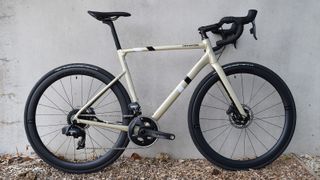
Another alloy bike that borrows features from its carbon sibling, in this case the SuperSix Evo, the CAAD13 has aero tube profiles, but is still comfortable to ride.
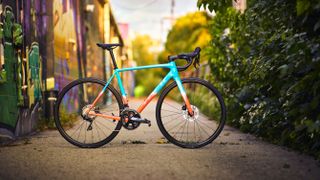
Trek launched an updated Emonda in 2023, with integrated cabling and aero tube profiles, making it even more like the carbon bike, along with new, brighter colours.
Best aluminium road bikes you can buy today
You can trust Cyclingnews Our experts spend countless hours testing cycling tech and will always share honest, unbiased advice to help you choose. Find out more about how we test.
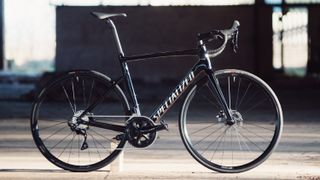
1. Specialized Allez Sprint Comp
Specifications, reasons to buy, reasons to avoid.
While the previous iteration of the Allez Sprint modelled itself on the now-extinct Specialized Venge, focussing on fast and hard crit racing, the current model has mellowed and matured into a more all-around bicycle.
The geometry is based on the Tarmac SL7 (it's identical), rather than the Venge, so the handling is sublime but never twitchy. The new integrated downtube and bottom bracket make for an exceptionally efficient pedalling platform, and the Shimano 105 groupset is spot-on for the money.
With a few componentry swaps the frameset provides a tempting platform for making the bike your own. Why not try some bigger tyres for endurance rides, or aero wheels for race day?
Interested? Our Specialized Allez Sprint Comp first ride review can give you more info.
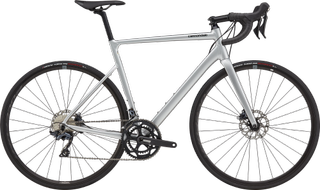
2. Cannondale CAAD13 Ultegra
Cannondale's CAAD frames have long been considered the gold standard in aluminium race bikes, and the latest iteration the CAAD13 builds on that legacy.
The geometry matches the SuperSix Evo, and the CAAD13 retains the light steering and crisp response to pedal input. Dropped chainstays and a D-shaped seatpost greatly improve comfort, and Cannondale has used hydroforming to incorporate truncated aerofoils to help the frame slice through the wind.
The American outfit is now only offering the CAAD13 in disc builds, either with Shimano 105, or Ultegra, but there is a women's spec bike.
Check out our first look at the Cannondale CAAD13 Ultegra for more details.
3. Trek Emonda ALR 5
When you think Emonda, the first thing that comes to mind is the feathery light carbon frame that even gets lightweight paint in the name of shaving grams. While the ALR version is pudgier than its carbon companion, the bike is no slouch when it comes to performance.
Trek's latest update of the Emonda ALR sees the bike get hidden cabling and aero tube profiles, making it even more like the WorldTour-level carbon version of the bike.
The Emonda ALR is one of those bikes that show alloy bikes don't have to be uncomfortable, and for the price, the performance is hard to beat. The new model gets Trek's racier H1.5 geometry as seen on the pros' Gen 7 Trek Madone aero bike.

4. Giant Contend SL 1
Giant has scaled back its alloy offerings, yet the Contend is one of the few survivors. Categorised as an 'all-rounder' the Contend occupies the entry-level of Giant's drop bar range.
With an upright geometry, Giant has used some of its manufacturing wizardry, and the D-Fuse seatpost to produce a surprisingly compliant frame. It's not a race bike, but the compact rear end gives it a snappy engaging feel, while the handling is manageable, even for inexperienced riders; the Contend could serve as both a commuter and weekend rider for those who need multi-purpose affordability.
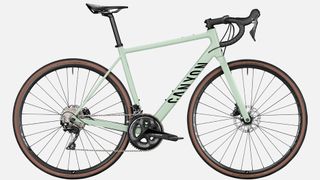
5. Canyon Endurace AL
By selling direct to the consumer, Canyon can offer prices that other brands struggle to match, without sacrificing an ounce of quality. With a full Shimano 105 drivetrain and hydraulic brakes (if you opt for discs) on the top-spec build, the Endurace rolls on DT Swiss E1850 wheels, with Canyon providing the rest of the finishing kit.
The Endurace features steep head and seat angles, however, the stack and reach plant the rider in a neutral riding position; making for a roadie that's agile and responsive, but won't leave your lower back and neck requiring attention from a physio.
The disc version has ample room for fat tyres, and the lack of a brake bridge also allows the chainstays to flex more freely. Both versions are noticeably devoid of fender mounts, so it might not slot in well if you live in a wet climate.
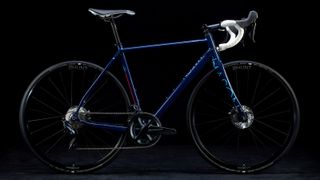
6. Mason Definition 2
Niche UK brand Mason has been making waves for a few years now, offering high-quality frames with all-round geometries that don't break the bank.
For the second generation of the Definition, Mason updated the frame to take 12mm thru-axles and flat-mount disc brake calipers. This involved a complete redesign of the rear end for a new dropout that didn't add weight or change the ride quality. The frame itself is made from quality Dedacciai alloy tubing and is finished with the brand's Aperture 2 carbon fork.
Available in a range of 1x and 2x drivetrains, each Definition comes with Hunt 4Season V2 Disc wheels, a Deda cockpit and a Fabric saddle, although you can customise the build to your heart's content.
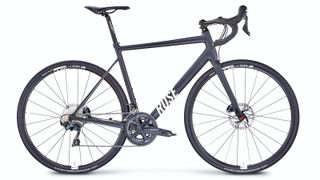
7. Rose Pro SL Disc
Another consumer-direct brand, Rose, offers serious value for money with the Pro SL Disc. The frame itself is made from 7005 T6 alloy and features triple-butted, hydroformed tubing throughout. The brake-bridge-free lowered seat stays afford the tubing oodles of vertical flex, while the carbon fork at the front does well to eat up vibration coming through the bars.
Labelled as a marathon bike, the Rose Pro SL disc offers steep angles and a relatively compact rear end for precise steering, while a few mm of stack is added in the front to relieve the pressure on your lower back and neck.
For the money, you get a full Shimano Ultegra drivetrain, DT Swiss P1800 Spline wheels and a Ritchey finishing kit. Rose stopped importing to the UK after Brexit though.
The considerations when choosing the best aluminium road bike for your needs are similar to those for a road bike made of any other material, so take a look at our buyer's guide to the best road bikes for more, if you're not sure what type of bike you need.
Here, though, are a few considerations that are specific to aluminium road bikes.
Are aluminum bikes as good as carbon?
Whilst an aluminium frame may not offer quite the same ride as a top end or premium carbon fibre frame. The best aluminium road bikes will offer lower end carbon machines a run for their money. Most will be engaging, stiff and fun bikes to ride. The CN tech team have owned a few aluminum road bikes between us and not by chance.
What sort of bike to I need?
Alloy road bikes are a microcosm of bikes in general, as every genre of bike has at least one model made of aluminium. As such the same decisions that you'd make when choosing one of the best carbon road bikes , or best steel road bikes , apply here.
If you're planning on racing then go for something race-focused; longer, lower, and with steeper angles. For longer days in the saddle then you might be better off with an endurance-focused option, where a more upright position and more relaxed handling combined with wider tyres will allow you to pedal on for hours and hours in comfort.
If you're unsure then there are plenty of options which don't categorise themselves as one or the other, and fill a more 'general purpose' niche. Think of these as a choose-your-own-adventure option.
Are all carbon forks the same?
Most alloy road bikes will come with a carbon fork. Fork blades flex more than the frame, and the fatigue life of aluminium isn't sufficient to allow safe alloy forks without them being utterly unforgiving.
Carbon forks allow flex, and also save a few grams in the process. Higher spec models will also have a carbon steerer, while lower tier models will have a metal one. The only real difference here is weight, as the steerer itself provides no additional flex.
Should I get disc brakes or rim brakes?
The industry is moving towards discs being the standard with an inevitability that makes rim brakes harder to recommend from a future-proofing standpoint.
Disc brakes provide better stopping power and modulation, especially in the wet. However, it's not totally black and white. Rim brakes are significantly easier to maintain yourself, and likely cheaper too. They've worked perfectly well for decades, so if you are a budding home mechanic then perhaps they're the right choice for you.
Rim brakes will however limit the width of the tyre you can use, so for endurance bikes, you're unlikely to have a decent rim brake offering nowadays.
Thru-axles or quick release?
For disc brake equipped bikes a thru-axle will always be the superior choice as it positions the wheel, and therefore the disc rotor, in precisely the same place each time, reducing the risk of developing brake rub.
For rim brake aficionados the choice is less imperative. Thru-axles will be stiffer, and more future-proof, but the tolerances built into a rim brake system aren't so fine and so quick release is perfectly adequate if budget is a concern. The majority of rim brake bikes still use the quick release system.
Get The Leadout Newsletter
The latest race content, interviews, features, reviews and expert buying guides, direct to your inbox!

Will joined the Cyclingnews team as a reviews writer in 2022, having previously written for Cyclist, BikeRadar and Advntr. There are very few types of cycling he's not dabbled in, and he has a particular affection for older bikes and long lasting components. Road riding was his first love, before graduating to racing CX in Yorkshire. He's been touring on a vintage tandem all the way through to fixed gear gravel riding and MTB too. When he's not out riding one of his many bikes he can usually be found in the garage tinkering with another of them, or getting obsessive about tyres. Also, as he doesn't use Zwift, he's our go-to guy for bad weather testing... bless him.
Rides: Custom Zetland Audax, Bowman Palace:R, Peugeot Grand Tourisme Tandem, Falcon Explorer Tracklocross, Fairlight Secan & Strael
- Paul Norman
Mike's Bikes launches 'mega sale' with discounts on everything sitewide
Best cycling trousers of 2024: Six options so you can ride to work and not get changed
POC Aspire cycling glasses review: A sturdy and stylish modern classic
Most Popular
Gear-obsessed editors choose every product we review. We may earn commission if you buy from a link. How we test gear.

Trek’s Latest Émonda ALR Is as Good as Aluminum Road Bikes Get
Dialed geometry, smooth welds, and an excellent ride feel add up to make the latest aluminum Émonda ALR a great alternative to pricier carbon bikes.
The Takeaway: The updated Trek Émonda ALR is thoroughly modern, yet simple and fully upgradable. Just the way an aluminum road bike should be.
Trek Émonda ALR 5
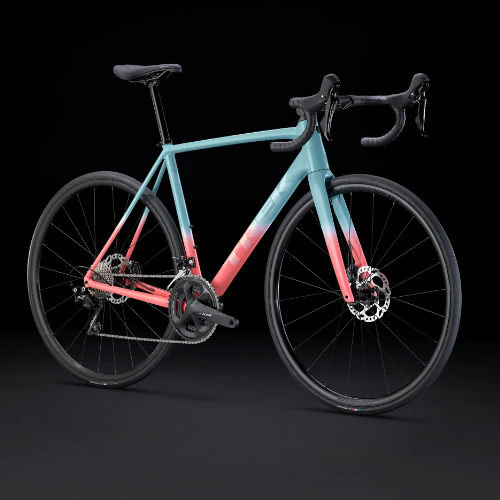
The Émonda ALR borrows its geometry (down to the millimeter) from its much pricier (and lighter weight) carbon fiber version of the Émonda. This means riders get the same, proven, race-winning geometry of the much pricier carbon model for around one thousand dollars less.
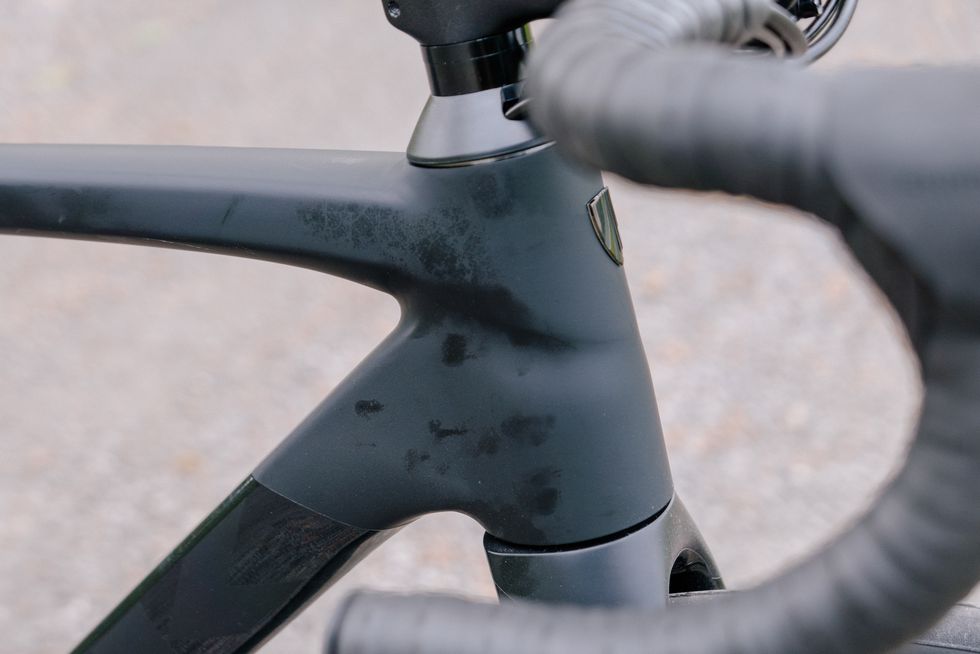
While the cost savings might be the most enticing feature of the ALR for many riders, the updated aluminum frame is the showstopper here. Much like its carbon version, the Émonda ALR features a mix of aerofoil (Kammtail) shaped tubes along with more traditional round profiles. Trek uses its 300 Series Alpha aluminum for the frame, which weighs in at 1,257 grams (claimed), for a painted size 56cm. It’s combined with a full carbon fork that adds 406g to the total package. This is impressive—weighing a mere 34g more than Trek’s carbon Émonda SL variant of the frame (which sells for $1,000 more than the ALR).
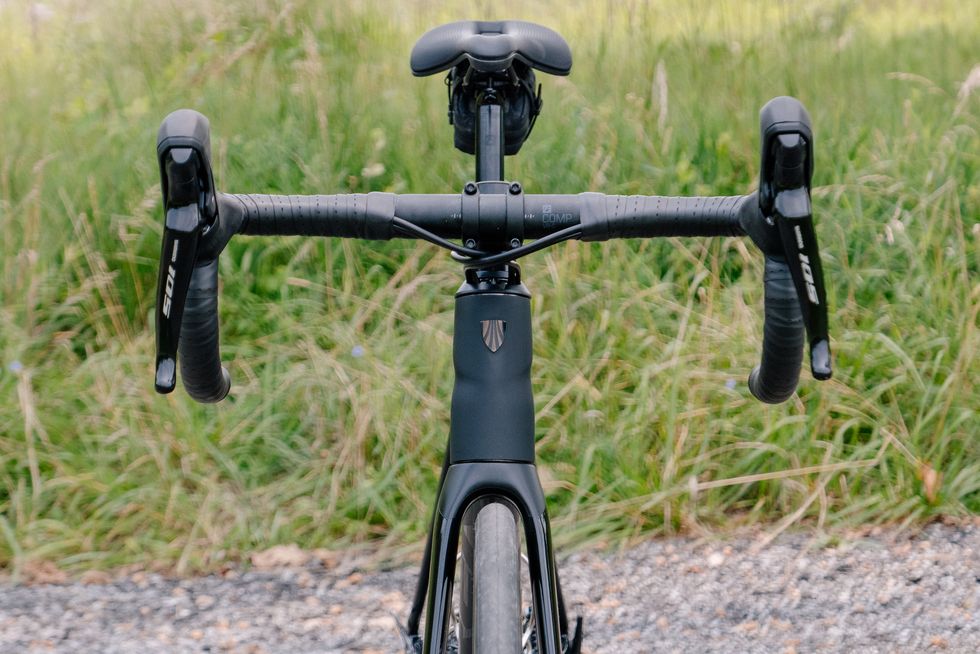
The Émonda ALR frame is also refreshingly free from proprietary standards. The bike uses a T47 threaded bottom bracket, a round 27.2mm diameter seatpost, and a completely normal handlebar and stem combination using a 31.8 bar clamp and 1-⅛ steer tube. All of these things make the Émonda ALR an easy-to-live-with bike that can be upgraded and customized as riders see fit.
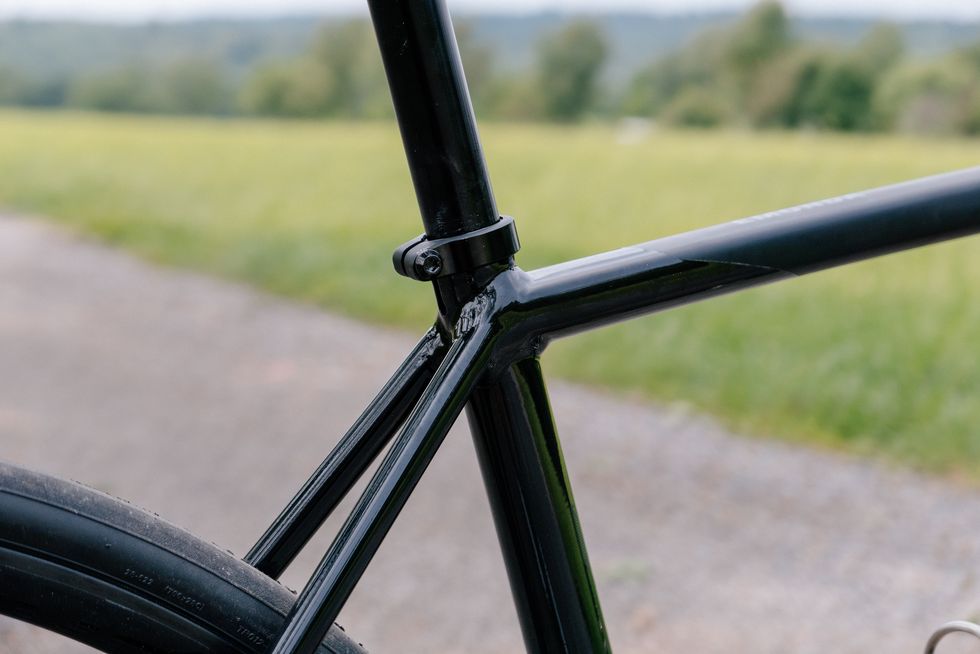
Alloy-frame aficionados have divided opinions about the appearance of welds. Some prefer to see the handy work of the welder and how tidy they can make the welds, while others prefer not to see the welds at all. Fans of chunky welds will be disappointed as Trek employed its Invisible Weld Technology on the Émonda ALR. This technique creates an incredibly seamless look to the frame. At arm's length (and particularly with the black frame), riders can easily mistake the Émonda ALR for a pricier carbon bike.
Another big change is at the Émonda’s front end. Trek implemented an integrated cable routing setup that’s very similar to the style used on the Allez Sprint. This setup sees the cable housing and brake hoses run externally along the bar and stem and then enter the frame through the top headset bearing. This kind of integration has the advantage of allowing riders to easily swap stem lengths or handlebars while still achieving a rather clean-looking cockpit. While Trek avoids the major headaches of cockpit customization with this cable routing solution, like many other recent road and gravel bikes, it suffers the added complexity and expense of routine service (such as replacing cables and housing or servicing headset bearings).
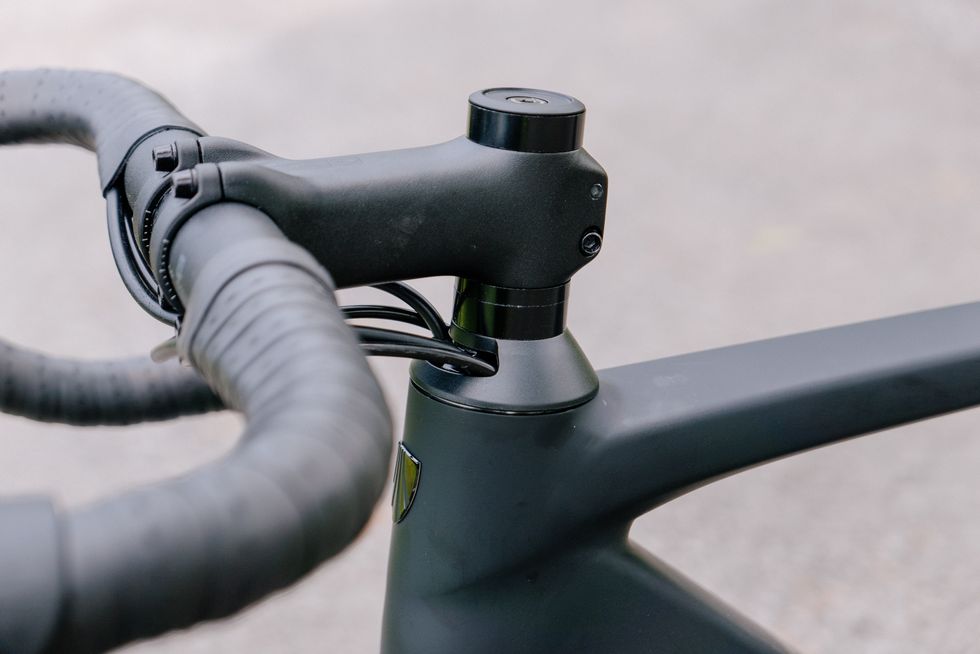
Unlike high-end bikes with electronic shifting—since the Émonda ALR is only sold with mechanical shifting—there are double the cables routing through the headset. Bikes with similar routing often face more rapid deterioration in shift performance (compared to bikes where things are routed externally) due to the tight bends the derailleur housing must make to fit into the space. It makes replacing cables and housing a major headache and costly if you’re not doing it yourself.
According to Cadence Cycling Center in Philadelphia, Pennsylvania, replacing a single-shift cable on a bike with through the headset routing can cost as much as $200 in labor. This is because shops tend to charge for this work by the hour and the time it takes to complete this service varies based on how complicated fishing the housing and cable is through the frame. To perform the same repair on a bike with externally routed cables, I was quoted a flat $25 labor charge.
Fit and Geometry
The Émonda ALR features the same H1.5 geometry that Trek uses on its Émonda and Madone carbon models. This geometry splits the difference between the aggressive H1 fit and the more relaxed H2 version. Meaning that a majority of riders should be able to find a good riding position regardless of whether they want to be long and low or more upright.
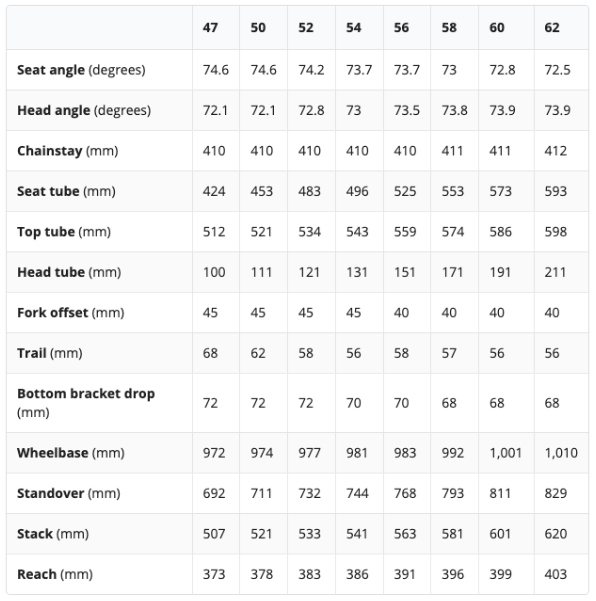
Additionally, Trek offers the Émonda ALR in a whopping eight sizes. The smallest size 47cm frame should be good for riders as short as 5’0”, and the largest size 62cm fits riders up to 6’5”, according to Trek.
The ALR Build
Trek currently offers only one complete bike Émonda ALR build. It features Shimano’s excellent 105 11-speed mechanical groupset, along with a Bontrager alloy bar, stem, and seatpost. Rounding things out is a pair of Bontrager alloy Paradigm SL wheels, which are very traditional with round J-bend spokes laced 2x but feature a 21mm internal width and are tubeless-ready. However, riders need to purchase the necessary items to turn them into tubeless wheels (including tubeless-specific tires, valves, and sealant).
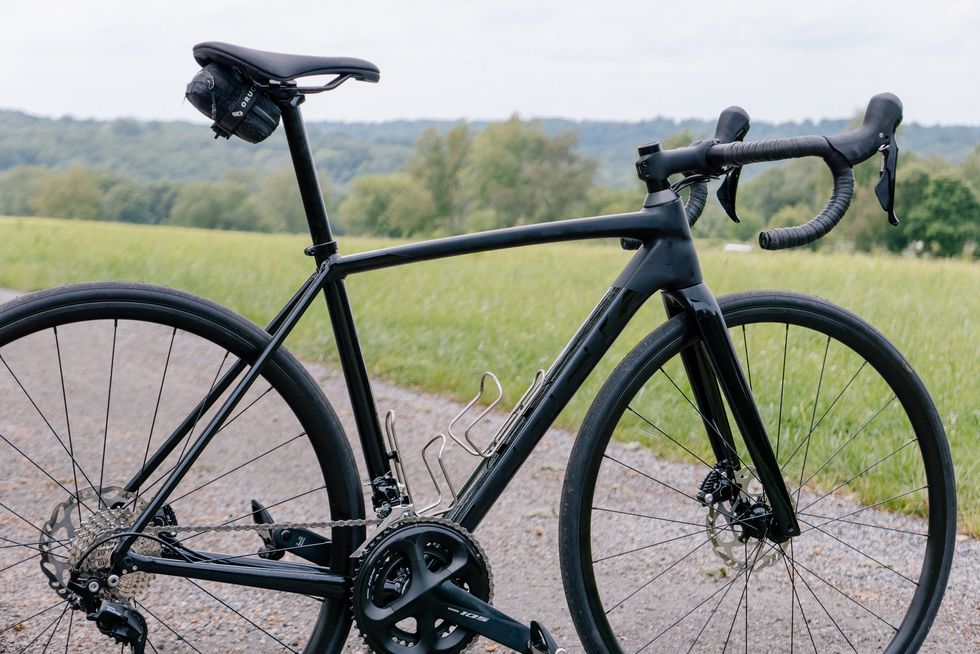
Trek prices the Émonda ALR at $2,300 for the complete bike and $1,200 for the frameset.
Trek confirmed that the Émonda ALR will receive an update to 12-speed 105 in the near future. Unfortunately, Trek representatives have not told us how much it will cost or the complete specification list. (But for reference, a 12-speed 105-equipped Domane AL 5 sells for $2,000)
Ride Impressions
Aluminum road bikes often have a reputation for being overly stiff, harsh, and cheap (in a bad way). However, these traits are generally not found on modern and well-engineered aluminum frames. (And it’s such a pervasive stereotype that my colleague Matt Phillips wrote a whole column about it .)
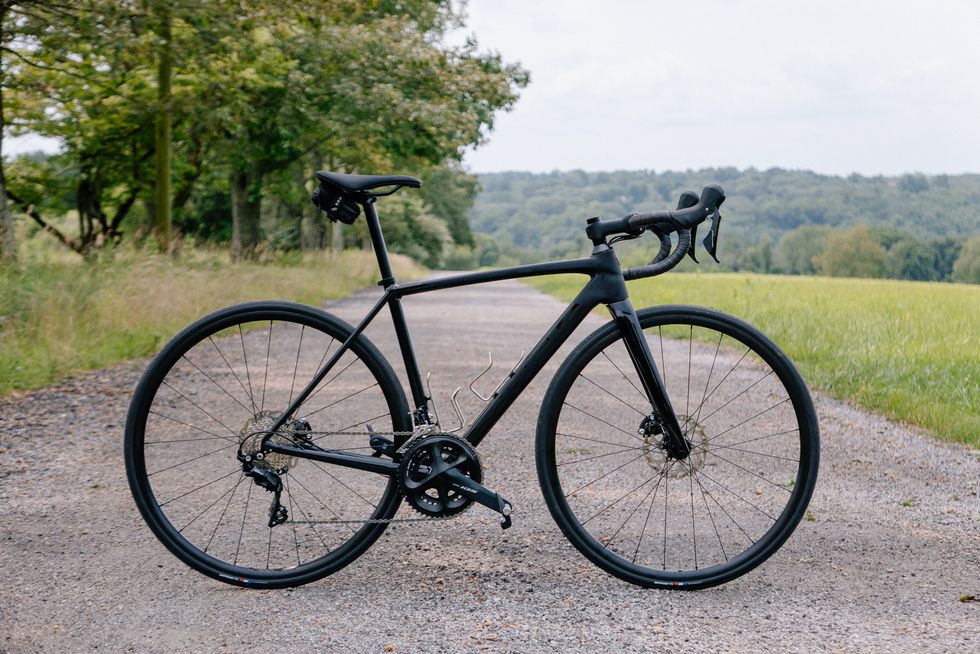
While some bikes lean into aspects of that reputation (the Allez Sprint is an unapologetically stiff-as-hell criterium racing machine), the Émonda ALR takes a slightly different approach. Since it’s modeled after the carbon Émonda (a bike largely intended to win mountain stages in Grand Tour races), the ALR is designed with all-day comfort in mind. This makes the overall ride more relaxed and comfortable compared to the Allez Sprint and should be a plus for many riders.
Even if some might consider 11-speed 105 outdated (due to the recent launch of the 12-speed 105 R7100 components ), Shimano’s 105 R7000-series drivetrain is an excellent and well-proven groupset. The 11-speed group has precise and crisp shifting front and rear and also impresses with powerful braking at the wheels and excellent control of the levers.
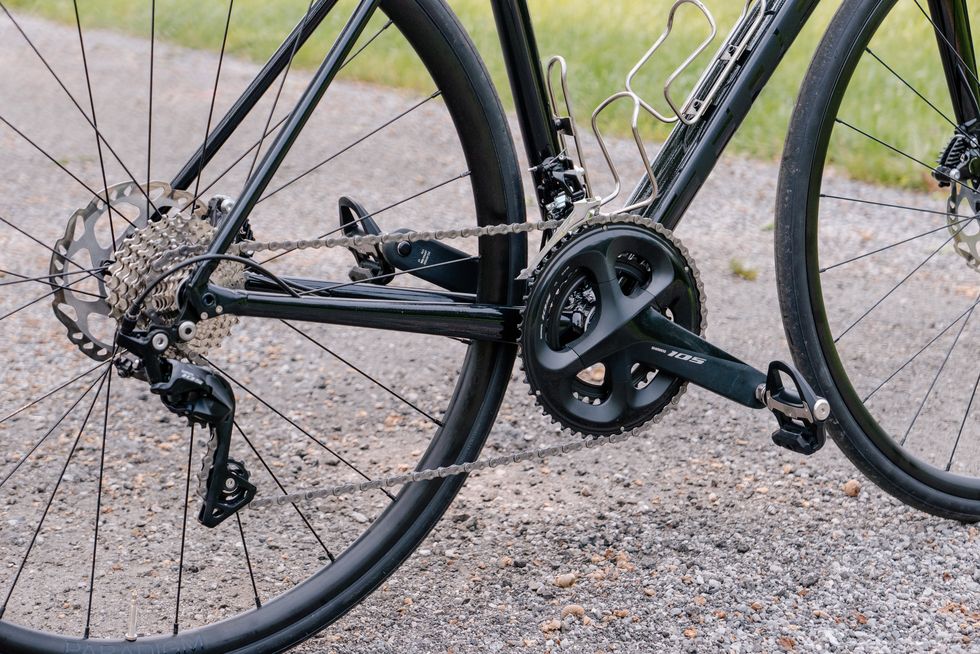
In contrast, the most disappointing part of the Émonda ALR’s build kit is its tires. Which would be the absolute first thing I upgrade. The Bontrager R1 wire-bead road tires weigh 360g per tire and are very much included to help meet the Émonda’s price point. They make the bike feel sluggish in a straight line while also not helping to foster any cornering confidence. A swap to even a mid-range tire from any of the major tire brands will probably drop around 30-40g of rotating weight per wheel and dramatically improve the ride quality of the bike.
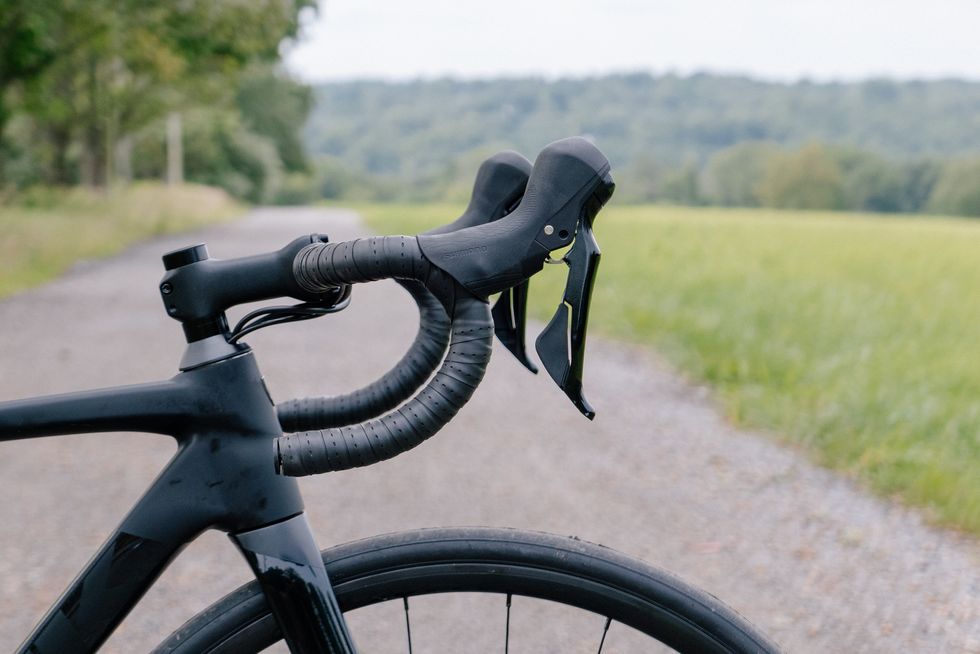
I found the rest of the ALR’s Bontrager finishing kit perfectly serviceable. The seatpost, stem, and saddle were nothing flashy but did the job. The handlebar has a rather classic feeling bend, drop, and reach. Best of all, if any of these stock items don’t work for you, it’s simple to swap any of them out for a preferred version.
Out of the box, I found the Émonda’s ride quality quite good but perhaps a bit on the firm side. Lowering the tire pressure to around 68-72 psi range greatly improved the comfort. And once I swapped to a set of Continental GP5000 tires, the Émonda ALR really began to shine on the road.
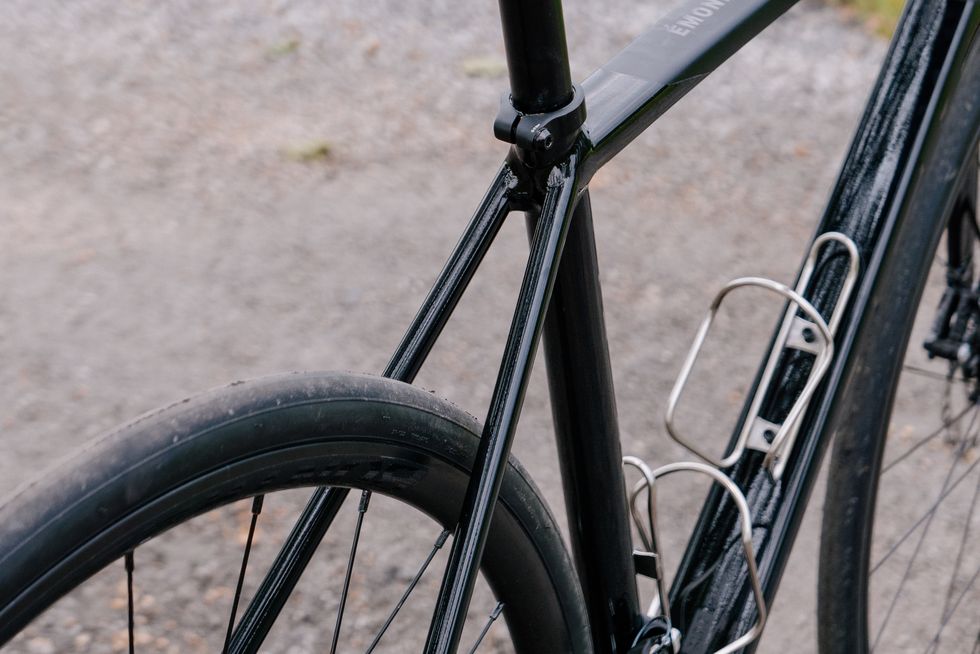
There’s nothing gimmicky about the Émonda ALR. It’s a classic road bike in the simplest sense of the term. Riding it for the first time felt familiar and reassuring. The geometry didn’t require me to adjust to the bike—I could just get on and go. Even on that first ride, I felt like I could dive into corners with the assurance of knowing what the Émonda ALR would do when I leaned in. The geometry was a perfect mix of stability and responsiveness with a dash of that springiness that good metal bikes have.
On flat and rolling terrain, the Émonda ALR is right up there with almost any non-aero road bike of the last few years. Its dialed geometry makes it a pleasure to descend on, and the frame has the right snap to be a truly wonderful climber.
What holds the ALR back on the uphills, though, are the stock wheels. At 1,800 grams, they’re not as heavy as some wheels on bikes in this price range, but they just feel soft and unresponsive. After upgrading the tires, a new set of wheels would be my next purchase for the Émonda ALR.
One aspect of the Émonda ALR that feels a bit dated for a road bike made in 2023: Trek caps the bike’s maximum tire clearance at 28mm. In practice, there is enough room to comfortably run 30 or even 32mm tires (depending on the tire and rim combination). Still, I would feel better with a bit more official wiggle room, especially as it’s gotten harder to predict the measured width of various tire and rim combinations.
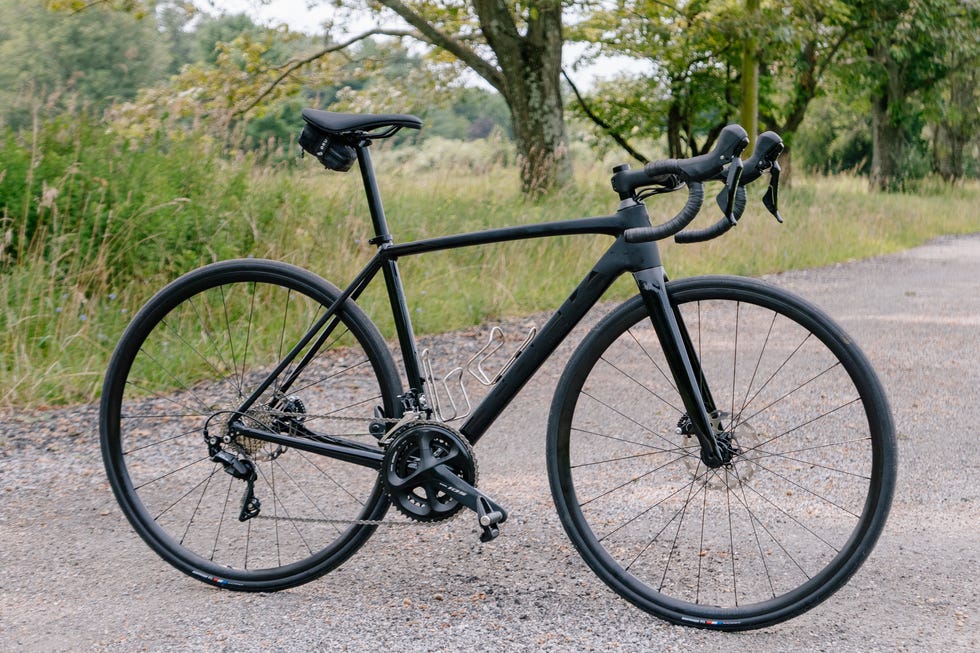
Overall, the Émonda ALR gets way more things right than it does wrong. While it's easy to nitpick things like its tires and wheels, Trek uses these parts to get the Émonda ALR to its modest price. And the ALR is up there with some of the best aluminum race bikes. It’s an impeccably finished and thoroughly well-designed aluminum bike that’s only a few grams heavier than its mid-tier carbon version. Plus, the Émonda ALR shares geometry with its pricier siblings and uses no proprietary standards or parts. With the ALR, Trek made a bike that nails all the things that have always made me love aluminum race bikes.
Test Editor Dan Chabanov got his start in cycling as a New York City bike messenger but quickly found his way into road and cyclocross racing, competing in professional cyclocross races from 2009 to 2019 and winning a Master’s National Championship title in 2018. Prior to joining Bicycling in 2021, Dan worked as part of the race organization for the Red Hook Crit, as a coach with EnduranceWERX, as well as a freelance writer and photographer.

.css-1t6om3g:before{width:1.75rem;height:1.75rem;margin:0 0.625rem -0.125rem 0;content:'';display:inline-block;-webkit-background-size:1.25rem;background-size:1.25rem;background-color:#F8D811;color:#000;background-repeat:no-repeat;-webkit-background-position:center;background-position:center;}.loaded .css-1t6om3g:before{background-image:url(/_assets/design-tokens/bicycling/static/images/chevron-design-element.c42d609.svg);} Member Exclusive

Build a Strong Core With V-Ups
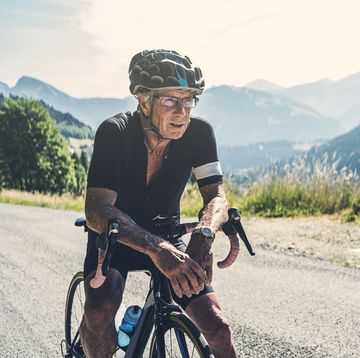
7 Expert Tips for Lowering Your Cholesterol
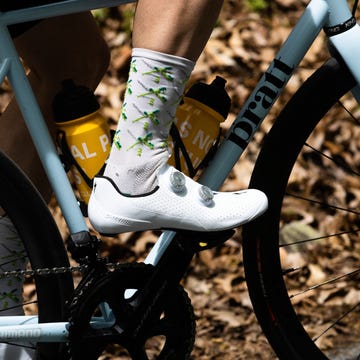
How to Improve Your Ankle Mobility
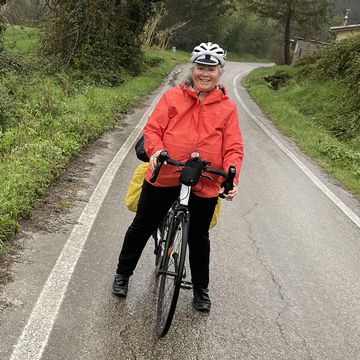
She’s Been Bike Touring Most of Her Life
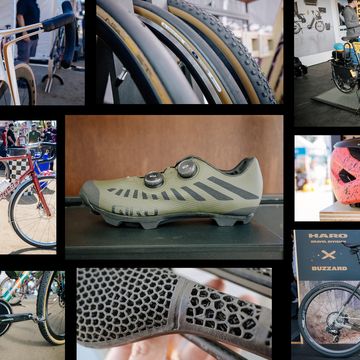
The Hottest Road and Gravel Bikes for Spring

How Pros Tackle Recovery During Tour de France

Allergies Ruining Your Ride? Here’s What to Do.
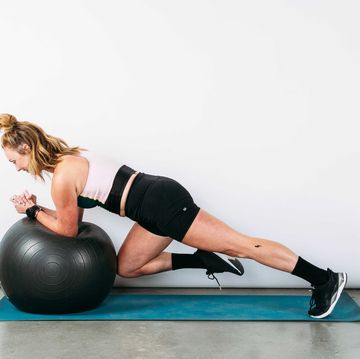
20-Minute Exercise Ball Workout
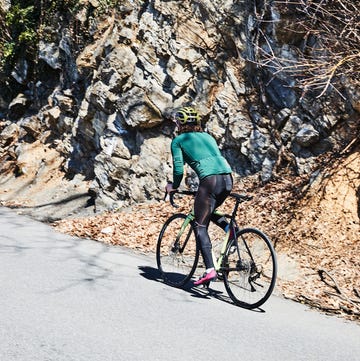
How to Calculate Your Power-To-Weight Ratio

The Best Exercises to Increase Mitochondria

How This Crit Racer Fuels Her Performances
- MAGAZINE OFFERS
- BIKE INSURANCE
- Best Products
- Maintenance
- Accessories
- Long-Term Reviews
- BikeRadar Podcast
- First Look Friday
- Bike of the Week
- Tech Features
- Routes and Rides
- Bike Galleries
- BikeRadar Bargains
- Buyer's Guides
- Fitness & Training
- Sizing & Fit
- Mountain Biking UK
- Cycling Plus
The best aluminium road bikes 2024: top-rated alloy bikes
Our favourite alloy road bikes, as rated by BikeRadar's expert testers
Robyn Furtado / BikeRadar
Stan Portus
The best aluminium road bikes can rival bikes with carbon frames; aluminium remains a great material for making bicycle frames.
At the entry-level end of the road bike market, aluminium frames are almost ubiquitous. That's because, generally speaking, aluminium frames combine a desirable stiffness level with low overall weight and relatively cheap production costs.
Bikes such as the Triban RC120 and Vitus Razor Claris prove that a quality road bike can still be had for less than £500 . Bikes such as the Triban RC520 show that road bikes under £1,000 can compete with pricier machines, too, with great specs and features such as disc brakes , which are available on more and more budget bikes.
Spend a little more and the prevalence of aluminium thins out in favour of cheaper carbon fibre bikes.
However, aluminium bikes at this price point – roughly between £1,000 and £2,500 – still regularly offer considerably better value , and sometimes a better ride, than similarly priced carbon models.
Fans of the pro peloton may have seen alloy come and go as the material of choice for the world’s fastest racers, but that doesn't mean alloy frames have plateaued in terms of development.
Spend well into four figures and you'll get access to the likes of Cannondale's CAAD13 – a showcase for the latest aluminium tech and a bike that can fight it out with all but the absolute best carbon fibre machines.
That's enough of the background, now let's crack on with our pick of the best aluminium road bikes, from budget bargains to alloy superbikes.
Every bike here has been tested and reviewed by our team and, in order to be included in this list, a bike must have scored at least 4 out of 5 stars in our testing.
Best aluminium road bikes in 2024, as rated by our expert testers
Triban rc120.
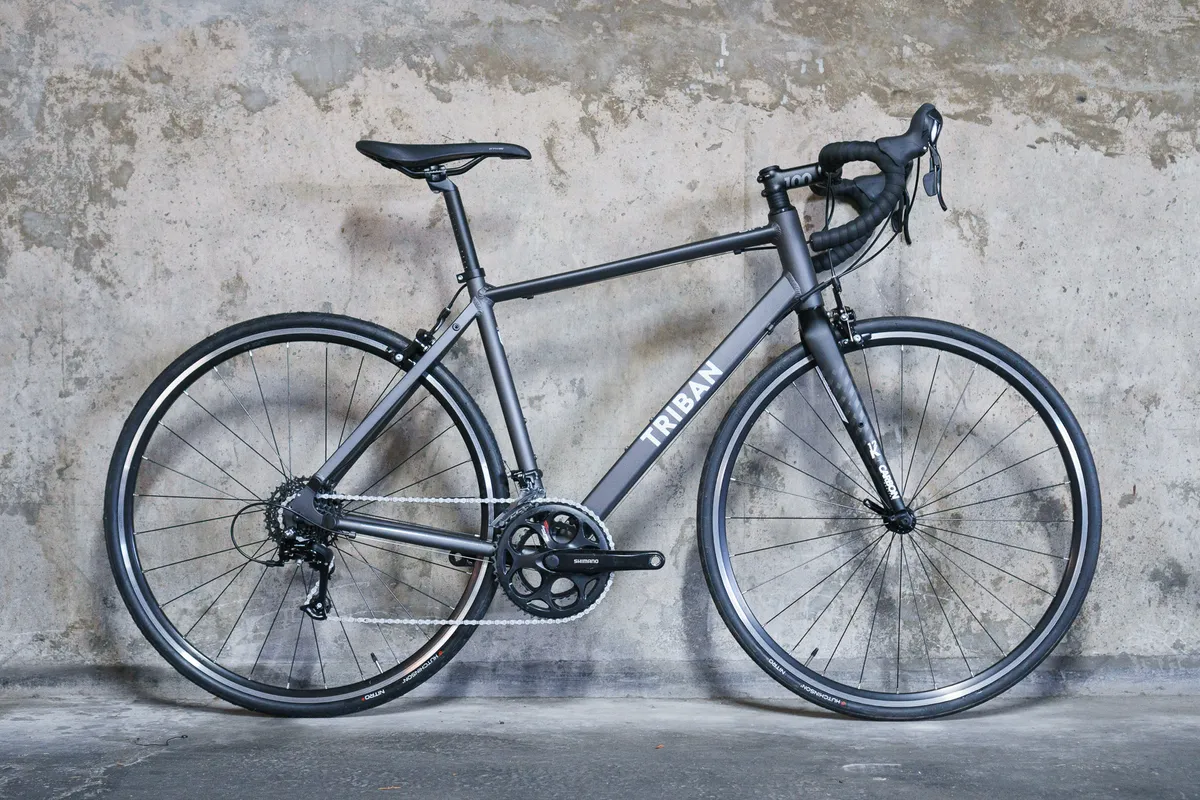
- £399.99/$499/€450/AU$599 as tested
- Our favourite entry-level road bike
- Capable as a fast commuter
The Triban RC120 is the cheapest bike in this list and yet it is one that is fully deserving of its five-star rating.
The RC120 should be the go-to bike for roadies with a modest budget thanks to its superbly considered kit and impressive ride.
Whether you're looking for a companion on long days out or an urban commuter that can accept a rack and mudguards , the RC120 will do it without difficulty.
- Read our full Triban RC120 review
Cannondale CAAD13 Disc 105
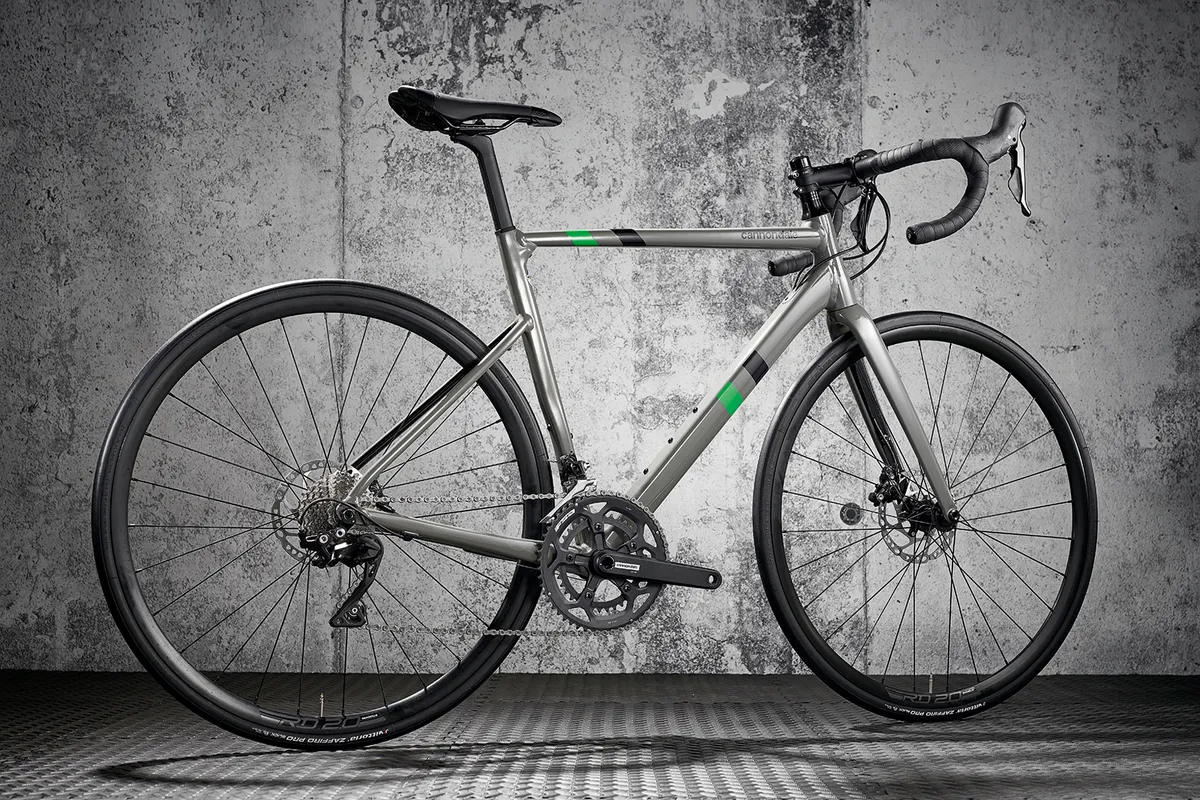
- £2,250/$2,300/€2,299/AU$3,499 as tested
- Exciting ride quality
The Cannondale CAAD13 was released in 2019, with the brand revamping the previous CAAD12 to embody new trends, such as dropped seatstays, wider tyres and aerodynamics.
The bike comes equipped with a full Shimano 105 groupset (apart from Cannondale's own cranks), Cannondale finishing kit and wheels.
For the price, it isn't the best value, nor is it the lightest, but once you start riding it, all of that is swept away. It has accurate handling, a remarkably smooth ride and is a brilliant all-round performer. In fact, it gives many carbon bikes a run for their money.
- Read our full Cannondale CAAD13 Disc 105 review
Canyon Endurace AL Disc
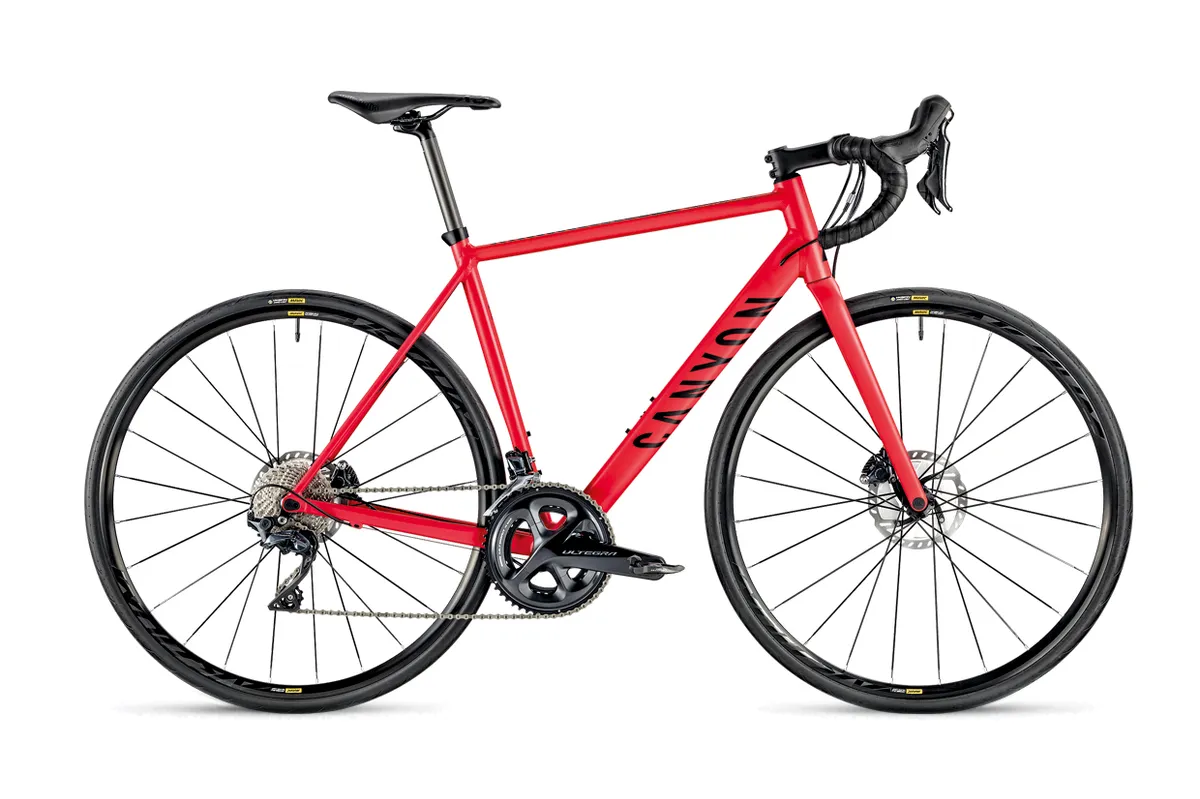
- £1,649 as tested for Canyon Endurace AL 8.0 (closest model now Endurace 7, priced at £1,649)
- Great specification
- Powerful, all-weather braking
If you’re after an endurance road bike , the chances are you will already be aware of Canyon’s superb Endurace range, and this particular alloy model with disc brakes hits a real sweet spot in terms of value.
The complete Shimano disc groupset, tubeless-ready wheels and sorted own-brand finishing kit make for an enviable spec sheet, but it’s the composed comfort and ride characteristics that make this one of the best aluminium road bikes.
The 8.0 model with Ultegra we tested has been discontinued, but the £1,649 AL 7.0 model with 105 is very nearly as good – although it sees no cost-saving due to price rises.
- Read our full Canyon Endurace AL 8.0 Disc review
Canyon Endurace AL 7.0
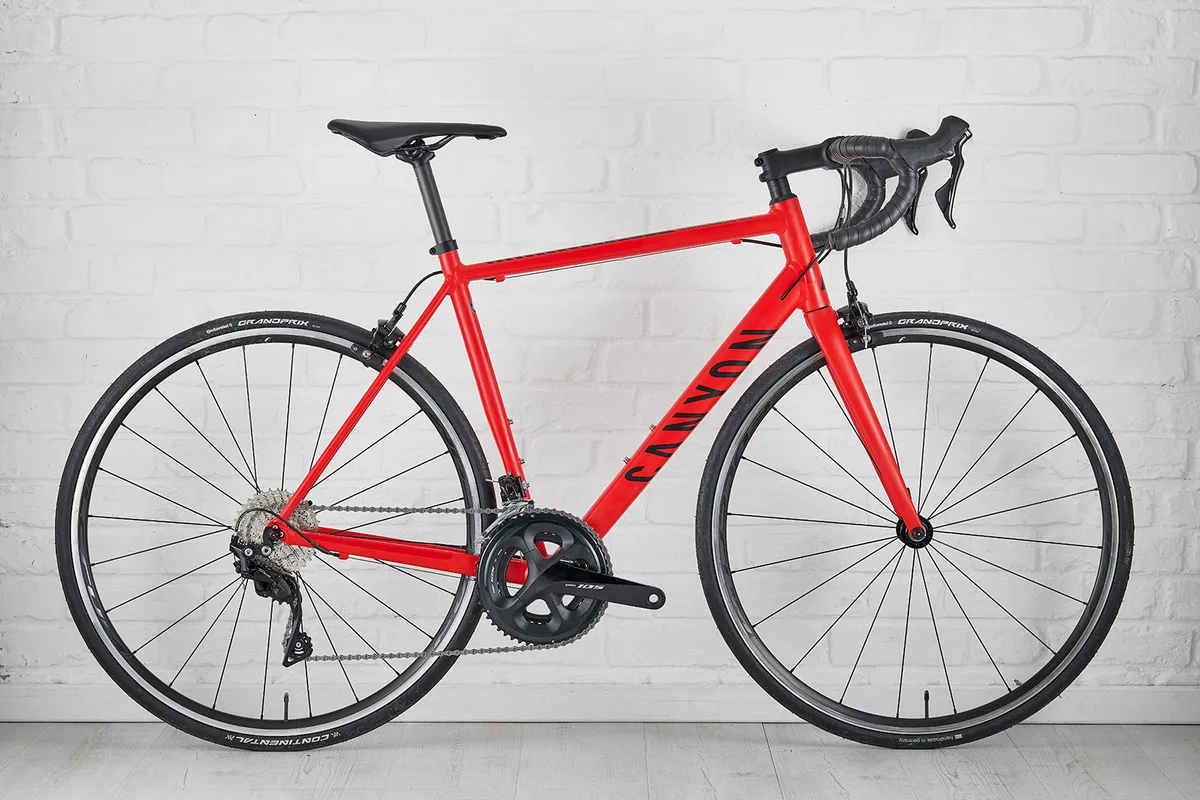
- £999/€1,100/AU$1,750 as tested
- Class-leading spec sheet
- Efficient yet comfortable frame
The second Endurace in this list is once again here thanks to its outstanding value and ride quality. It’s light at 8.4kg for a size medium and has the most impressive spec sheet in its class, although recent price increases mean it's not quite the bargain it used to be.
Component highlights include Shimano’s superb R7000 105 groupset and Fulcrum wheels (a change from last year's Mavics) with quality Continental tyres.
We had to dig pretty deep in order to criticise this rim-brake model, but not everyone will appreciate its understated looks.
- Read our full Canyon Endurace AL 7.0 review
Giant Contend 1

- £999/€1,150 as tested
- Great quality frameset that's comfortable and handles well
- Comfy 28mm tubeless-ready tyres
The Giant Contend impressed us a lot during testing and we rated its rewarding ride and slick components package. The aluminium frame is neatly welded and there's an all-carbon fork and Giant's D-shaped seatpost, which is claimed to reduce road vibration transmitted to the saddle.
The Contend 1 is fitted out with Shimano Sora 9-speed groupset, with ratios down to 1:1. Tektro rim brakes. Tubeless-ready Giant wheels and 28mm tyres are other spec highlights.
The front and rear mudguard fittings and rack compatibility make this ideal as a commuter bike too.
We've also reviewed the 2020 Giant Contend SL1 , with a lighter SL version of the Contend frameset.
- Read our full Giant Contend 1 review
Rose Pro SL Disc 105
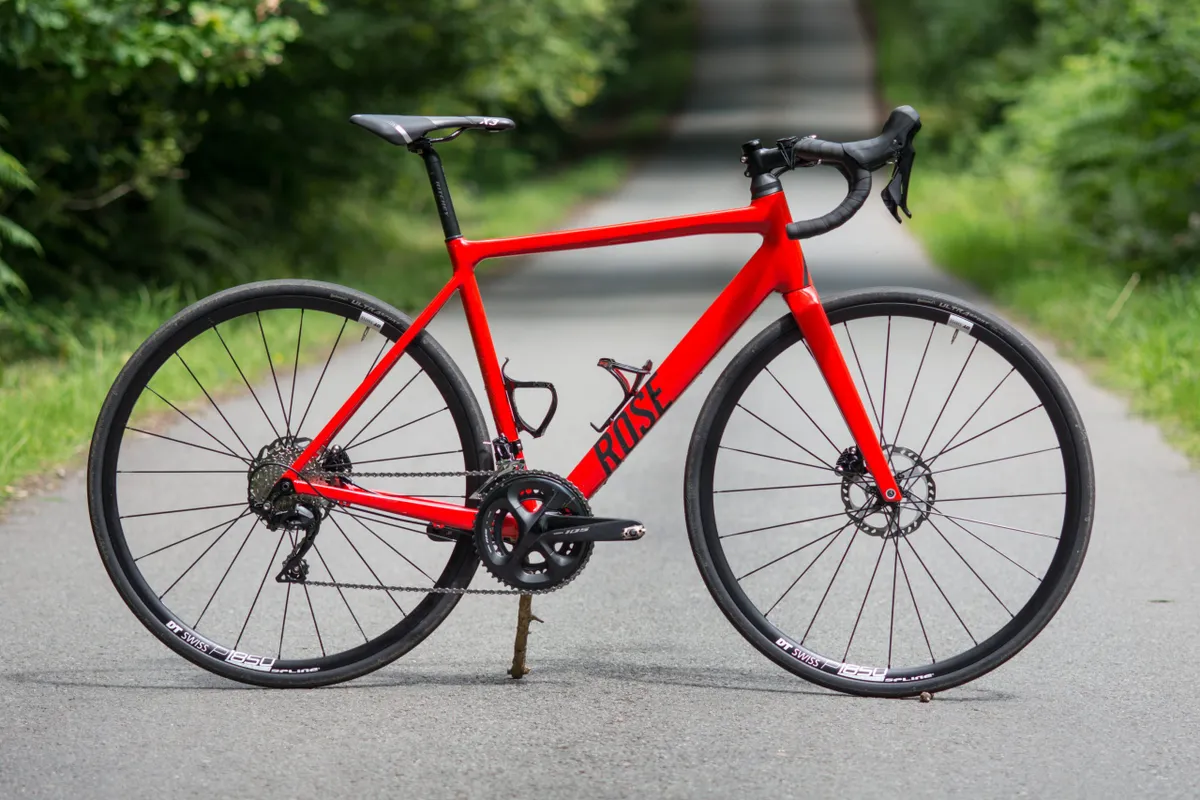
- €1,749 (not currently available in UK)
- Updated version of one of our favourite all-rounders
- Lovely frameset and great spec for the money
Rose's affordable alloy all-rounder received an update in 2020, with a move to integrated cabling and tweaks to the frame and fork that include a very tidy new seat clamp.
Although prices have crept up slightly, it remains a top choice, with a really solid Shimano 105 spec and a thoroughly likeable ride quality.
Unfortunately, Rose has withdrawn from the UK market for the moment , but the bike is available elsewhere in the world.
- Read our full Rose Pro SL Disc 105 review
Triban RC120 Disc
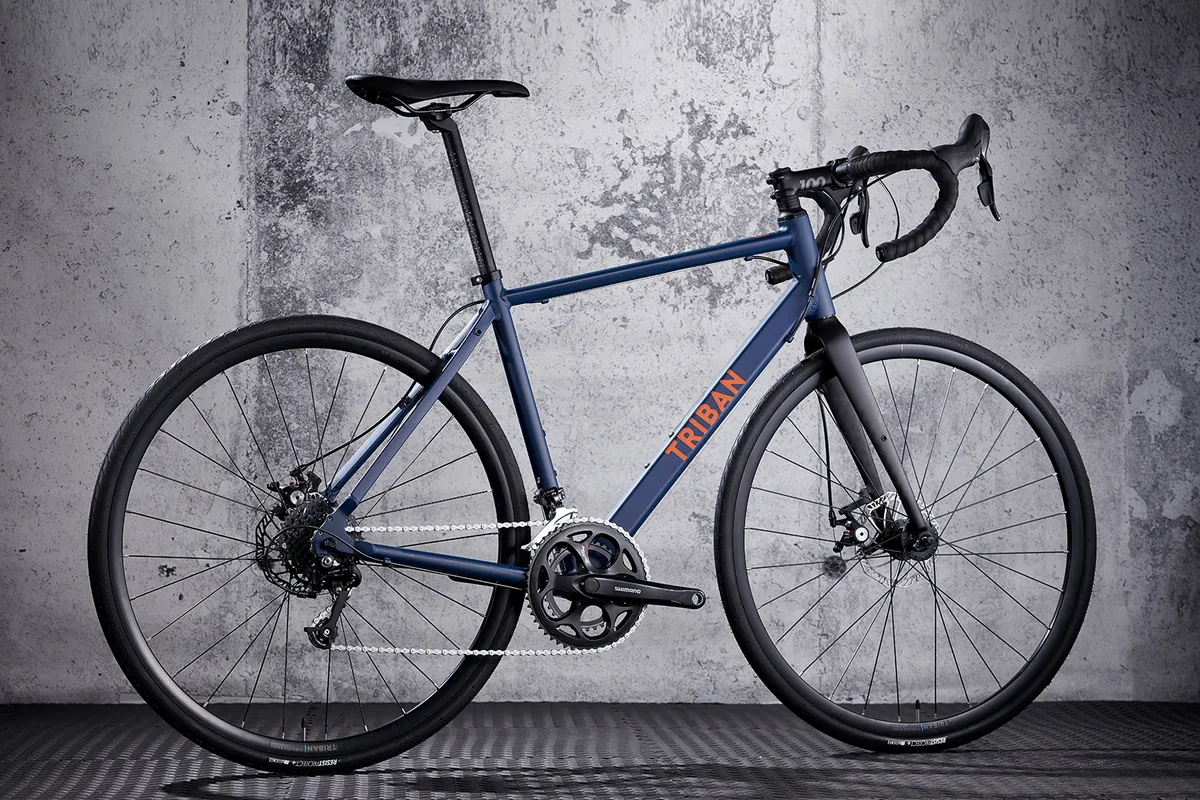
- £400/€500 as tested
- Great for longer rides
- A little on the hefty side
Just five years ago, it would have been difficult to fathom that a bicycle as well equipped as this Triban RC120 Disc would be available for such a modest outlay. The geometry of the alloy frame sides towards endurance, making this a great choice for longer rides.
Spec highlights include a carbon fork, tubeless-ready wheels with 28mm tyres, and mechanical disc brakes – it really is superb value for money.
Don’t worry about the Microshift gears either, we were pleasantly surprised by them. The compromise comes in the form of weight, with a size medium example weighing a portly 11.3kg.
- Read our full Triban RC120 Disc review
Triban RC520 Disc

- Exceptionally well equipped
- For those who favour comfort over speed
The RC520 Disc astonishes in terms of value with its carbon fork, mostly Shimano 105 drivetrain and TRP's mechanically actuated hydraulic disc brakes.
The geometry is noticeably more relaxed than the likes of Specialized's Allez, meaning this is no racer, but it's an excellent choice for commuting, training or even as a touring bike .
The standard-fit 28mm rubber already makes for a plush ride, though there's room for up to 36mm tyres and the stock rims are also tubeless-ready should you want to open up gravel capabilities .
- Read our full Triban RC520 review
Carbon vs aluminium
There’s a temptation when reviewing premium alloy bikes to suggest they’re particularly good ‘for a metal bike’, the subtext being that we all know carbon is inherently better.
Carbon makes sense for high-performance bikes because it’s infinitely tunable. It lets designers target stiffness, strength and flexibility exactly where they want it by using different types and arrangements of fibres and clever layup methods.
Metal, by contrast, can be manipulated to a high degree, with elaborate butting, forming and heat-treatment techniques, but you can’t fundamentally alter the mechanical properties of the material with such ease, because it’s not a composite.
The latest premium aluminium bikes challenge conventionally held assumptions about working with metal, offering performance and specs that go head-to-head with similarly priced carbon.
While politics and the pandemic have conspired to ensure nothing feels as good value as it did a couple of years ago , the variety and sophistication of aluminium road bikes have never been better.
Boardman SLR 8.6
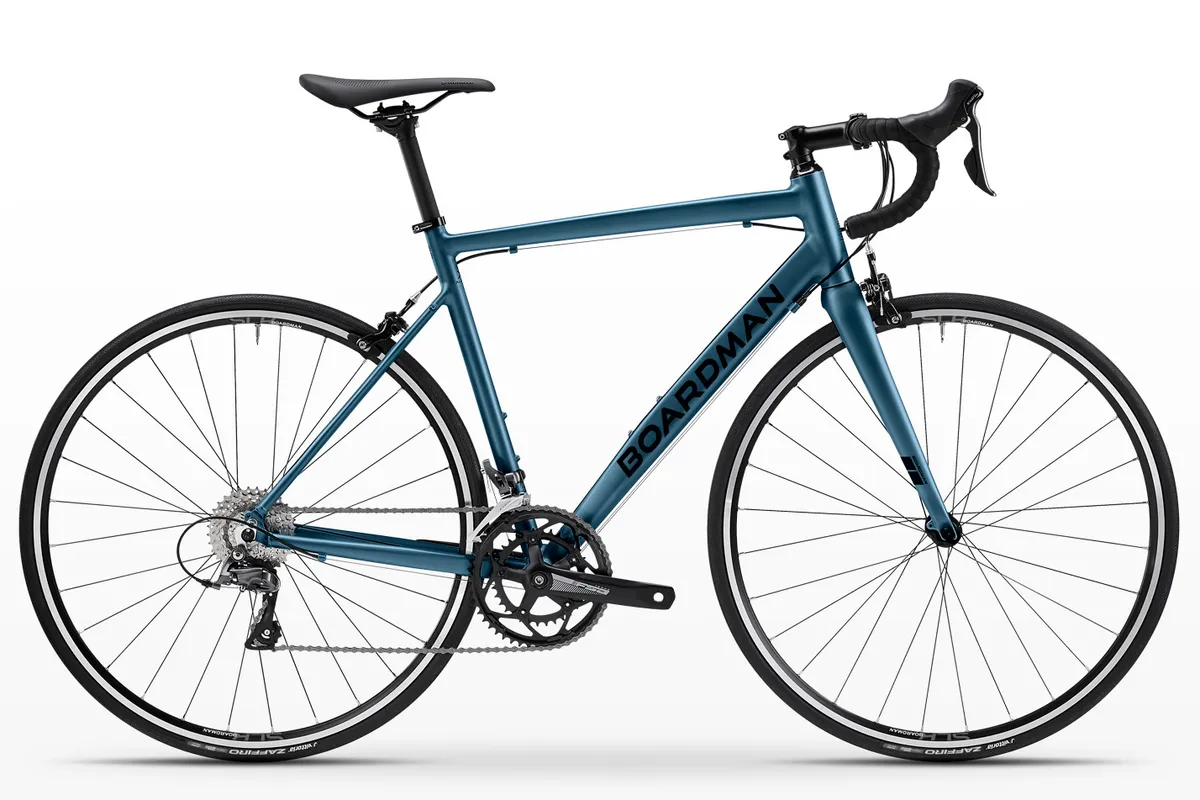
- £550 as tested
- Tubeless-ready wheels
- Plenty of comfort
We recognise Boardman’s SLR 8.6 as one of the best budget road bikes out there due to its lovely all-round ride and general practicality.
A notable spec highlight and something that’s still rare at this price point is the tubeless-ready wheelset. The gearing is taller than some of its competitors though, so you may find yourself out of the saddle sooner on the climbs.
The frame is easily good enough to justify significant component upgrades, making this a bike that can really develop with you. It's received some subtle updates and a new paintjob this year, as well as a slight drop in price.
- Read our full Boardman SLR 8.6 review
Cannondale CAAD Optimo 1

- £1,300/$1,305/€1,499 as tested
- Reasonable weight
- Well balanced
Despite originating from Cannondale's entry-level road bike range, the Optimo 1 is worthy of the CAAD designation, associated more closely with the brand's more illustrious models.
The classy alloy frameset is the highlight of the build, made up of mostly Shimano 105 components.
The Vittoria Zaffiro tyres feel fast-rolling and there are fittings for mudguards and a rear rack. Its rim braking works well, but restricts you to 25mm tyres.
- Read our full Cannondale CAAD Optimo 1 review
Cube Axial WS Race
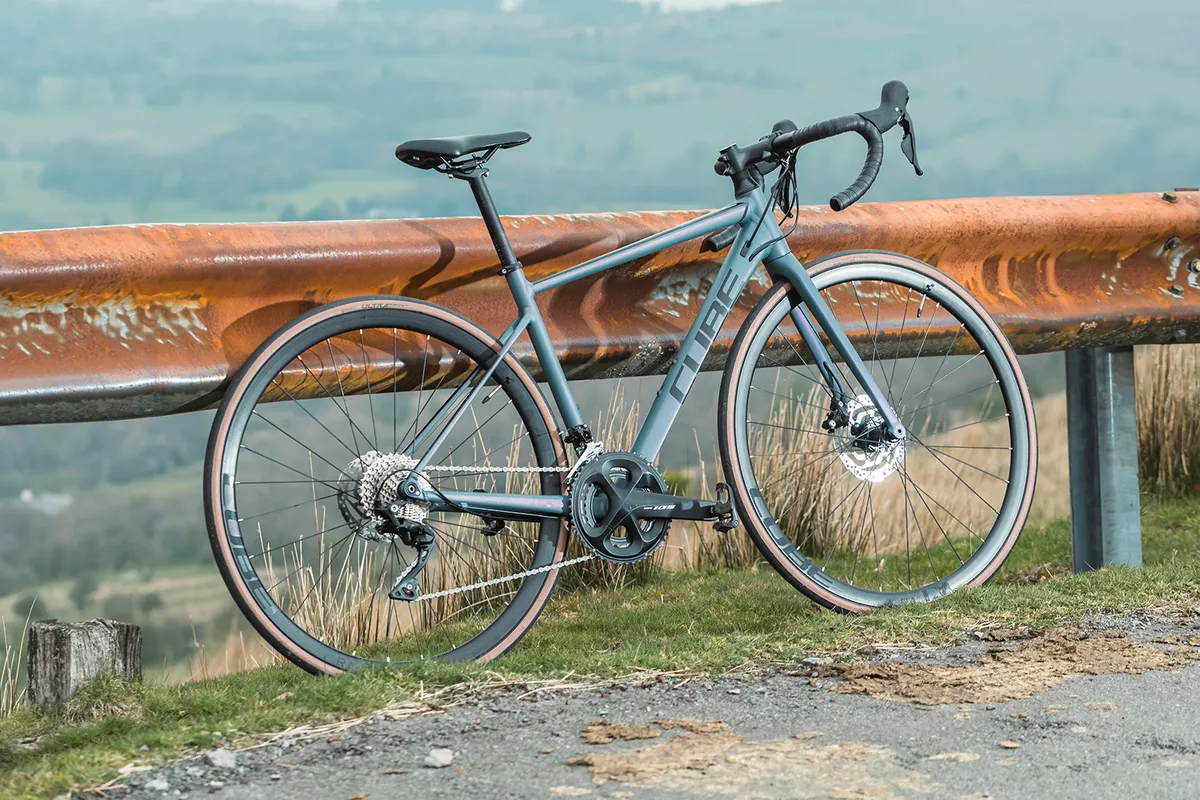
- £1,749/€1,649 as tested
- Quality Shimano 105 spec with hydraulic brakes
- Lots of low gear range for hillier terrain
The Cube Axial is the women's version of the gender-neutral Attain, with Cube branding its Axial frame HPA, for High Performance Alloy.
The frame includes thru-axles for more precise wheel placement than quick releases. There are mudguard mounts and Cube sells mudguards designed specifically for the bike.
The spec includes a full Shimano 105 11-speed groupset, complete with its powerful hydraulic disc brakes, but the Axial range starts at around £1,000 for the lowest spec, fitted with Shimano Claris 8-speed.
The 28mm tyres measure up around 30mm although the Axial's tyre clearance isn't as generous as on some frames.
Despite the "Race" in the name, this is an endurance-focused aluminium road bike, with a more upright ride position.
- Read our full Cube Axial WS Race review
Forme Monyash 2
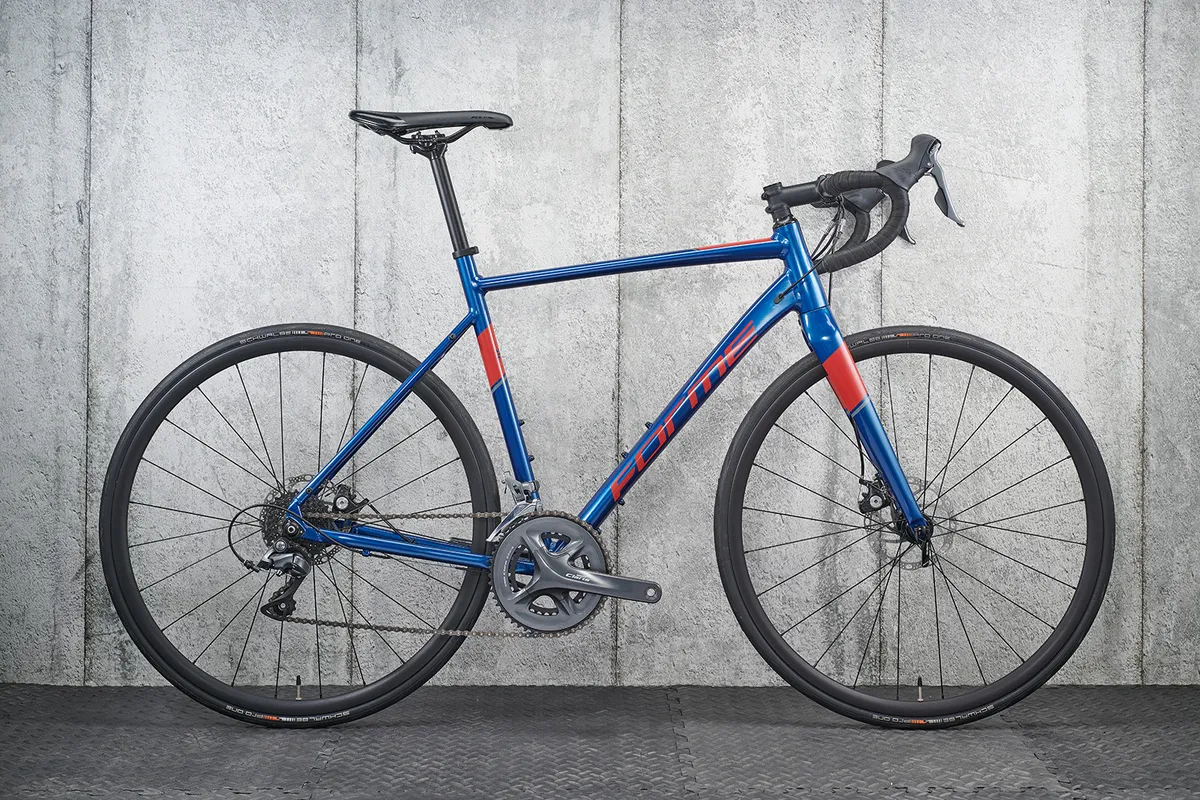
- £1,000 as tested
- Great ride quality despite modest spec
- Quality wheels and tyres on thru-axle hubs
Forme says the Monyash is designed for tarmac, light gravel and year-round endurance riding. It's kitted out with disc brakes on its thru-axle wheels, with space for 35mm tyres to support that versatility. Plus, you get three sets of bottle bosses as well as mudguard and rack mounts.
The 2 spec of the Monyash comes with a Shimano Claris 8-speed groupset and we rated the wheels, shod with quality Schwalbe One tyres, although we'd up their 25mm width for extra grip and comfort.
We enjoyed the Forme's smooth, confident and controlled ride over a variety of not-so-good road surfaces.
- Read our full Forme Monyash 2 review
Kinesis 4S Disc
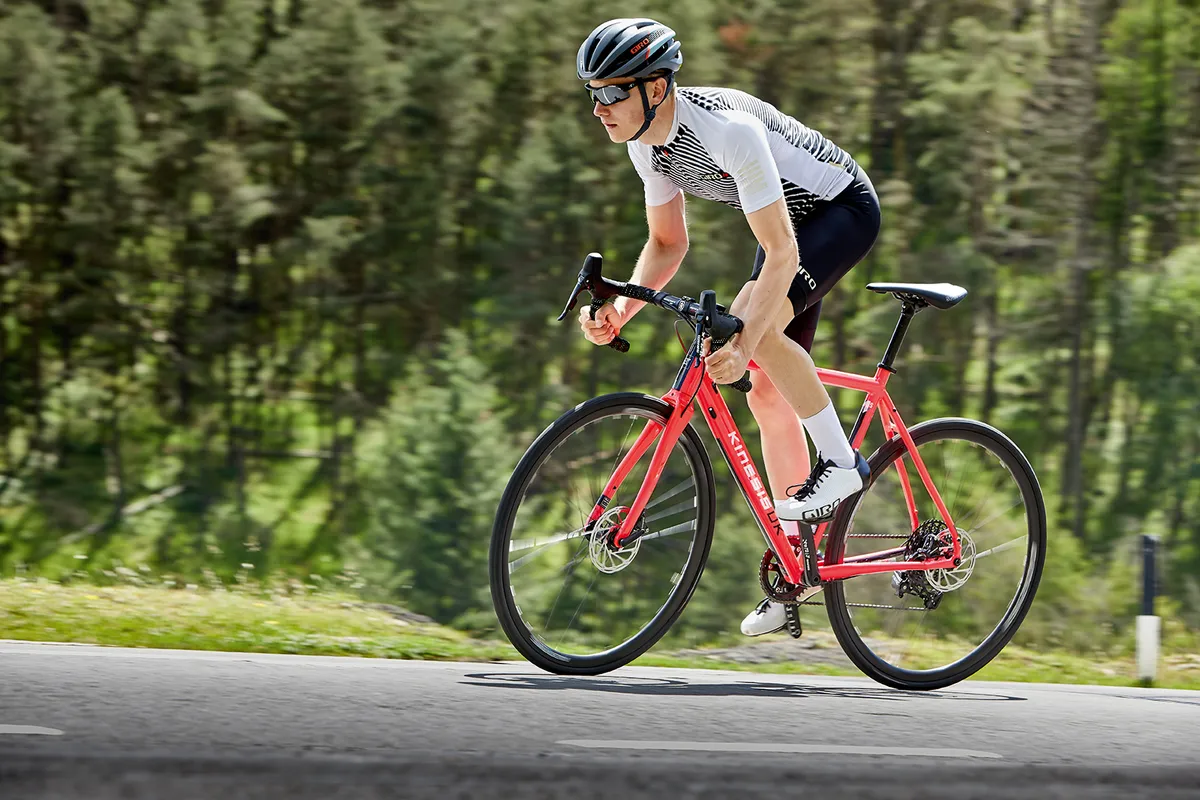
- £1,850 as tested
- A bike for all occasions
- Supremely versatile
The 4S Disc from Kinesis does a great job of being a bike for all occasions, so if you’re willing to snub the n 1 phenomenon then this could be the buy for you.
Available in road and gravel build options, the road-going version we tested goes without the flared handlebar and wider tyres of its sibling.
Despite this, the 4S Disc is loads of fun and is incredibly versatile, and we know it can work for year-round commuting, training, touring or bikepacking . If you’re not feeling quite so pink, there’s a more subtle blue colour available.
- Read our full Kinesis 4S Disc review
Kinesis Aithein Disc
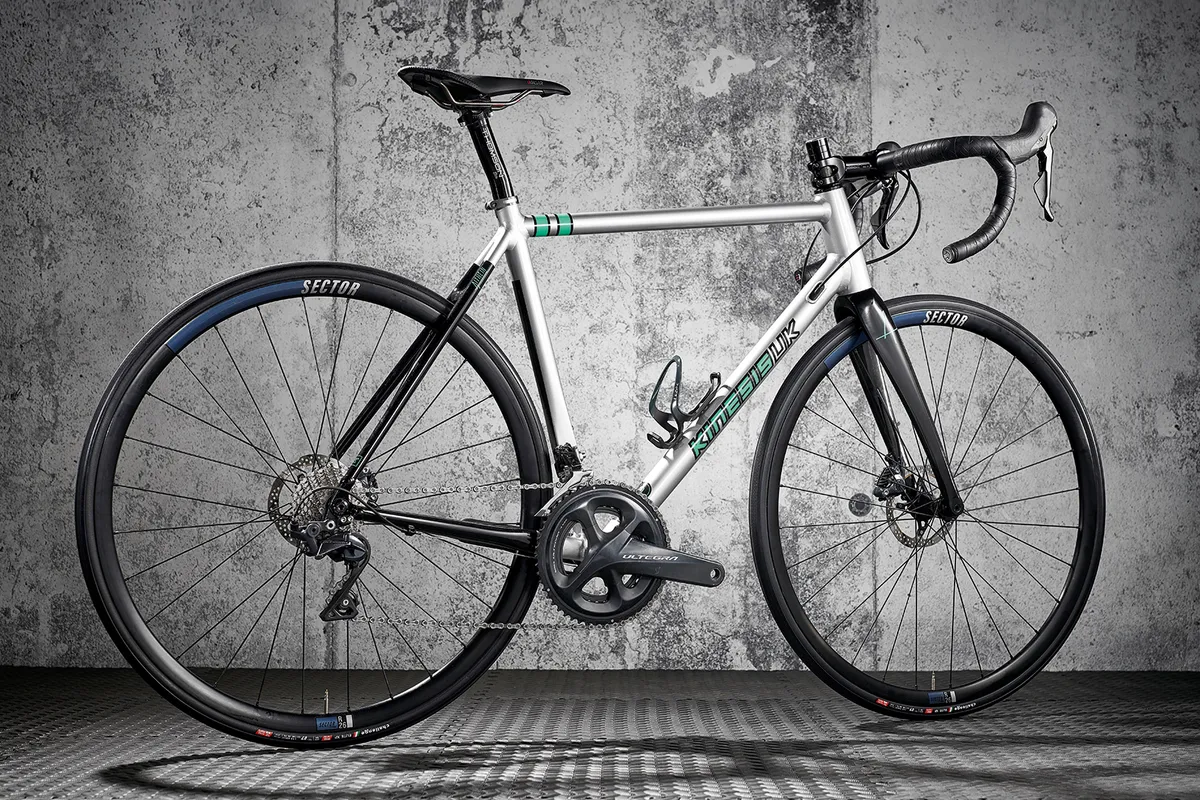
- £2,680 build as tested
- Super-stiff frame
- Great price
The Kinesis Aithein Disc is an uncomplicated aluminium road bike that uses only standard parts. This is something quite refreshing in a world of proprietary headsets, aerofoils and dropped seatstays.
Racy intentions are at the heart of the Aithein. Reflective of that is a pretty familiar race bike geometry , maximum tyre width of 28mm and no mounts for mudguards or accessories.
Out on the road, the bike's stiff frame means it is great at climbing and descending. The ride is reasonably smooth but certainly firm. If you're feeling strong, the Aithein will deliver an engaging ride that's undeniably fun.
Kinesis offers the Aithein as a frameset, but the build we tested with fitted Shimano Ultegra presented good value.
- Read our full Kinesis Aithein Disc review
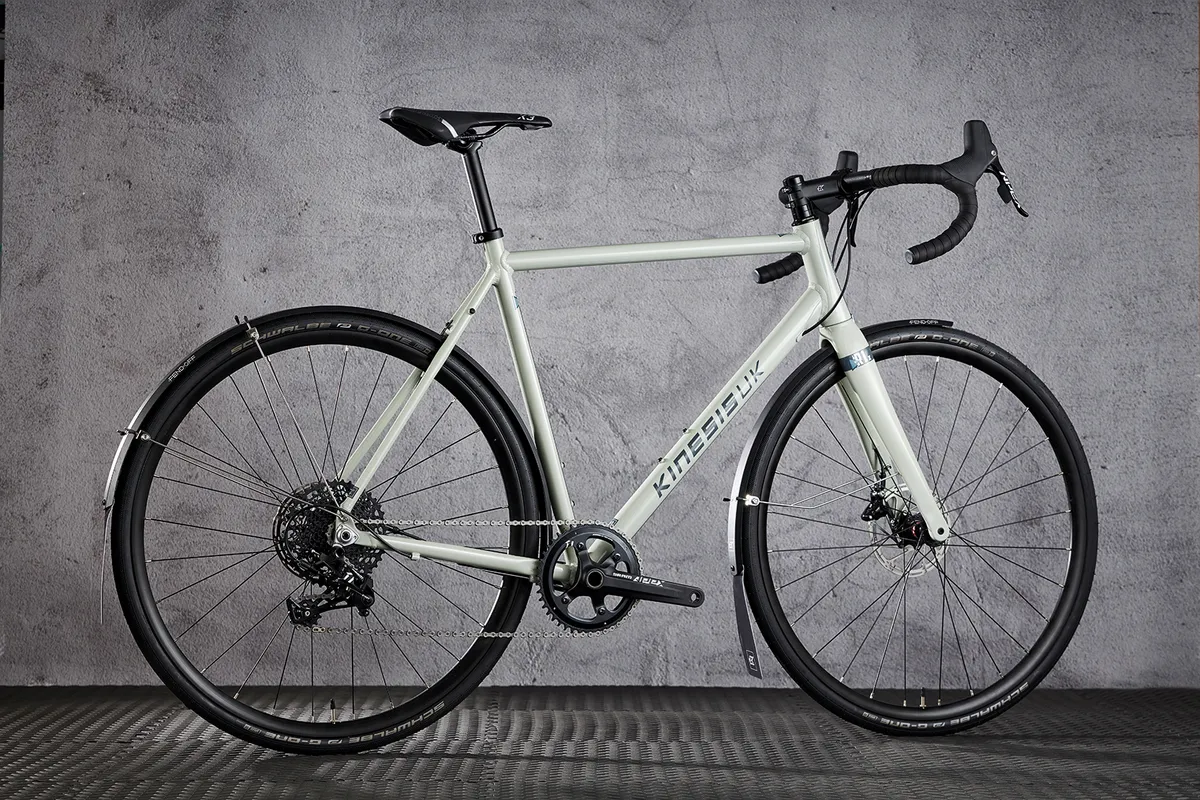
- £1,500 as tested
- Versatile aluminium road bike designed for a 1× drivetrain
- SRAM Apex drivetrain and optional mudguards
1× drivetrains haven't really caught on for the road, but their simplicity is appealing for a practical, all-weather bike.
The R1 is designed with 1× in mind and comes specced with SRAM Apex components. Thanks to an 11-42 cassette, the gear range is not lacking.
The R1 is a likeable and engaging ride that's well suited to putting in winter miles, particularly if you opt for the full mudguards upgrade.
- Read our full Kinesis R1 review
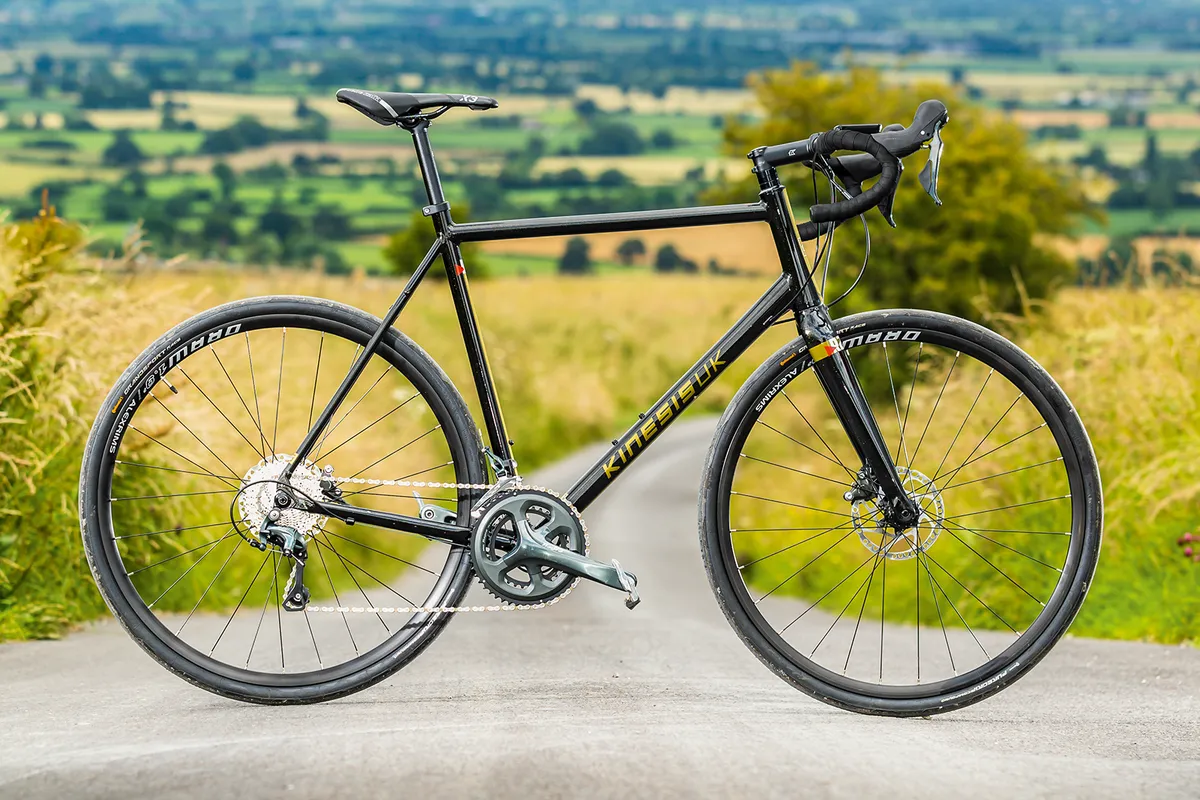
- £1,680 as tested
- Good to look at and ride
- Dependable build
In making the R2, Kinesis hasn't tweaked much from its predecessor, the R1, except for adding another chainring on the front.
Even with a 2x drivetrain, the R2 is adept across most terrain, including light gravel, thanks to 32mm tyres and Alex rims, which are designed for cyclocross .
Weighing 10kg, the R2 is never going to fly up climbs. But with mounts for racks and mudguards, plus hydraulic disc brakes, it'll make an agile winter bike and it's zippy enough to ride all year round.
- Read our full Kinesis R2 review
Specialized Allez Sprint Comp
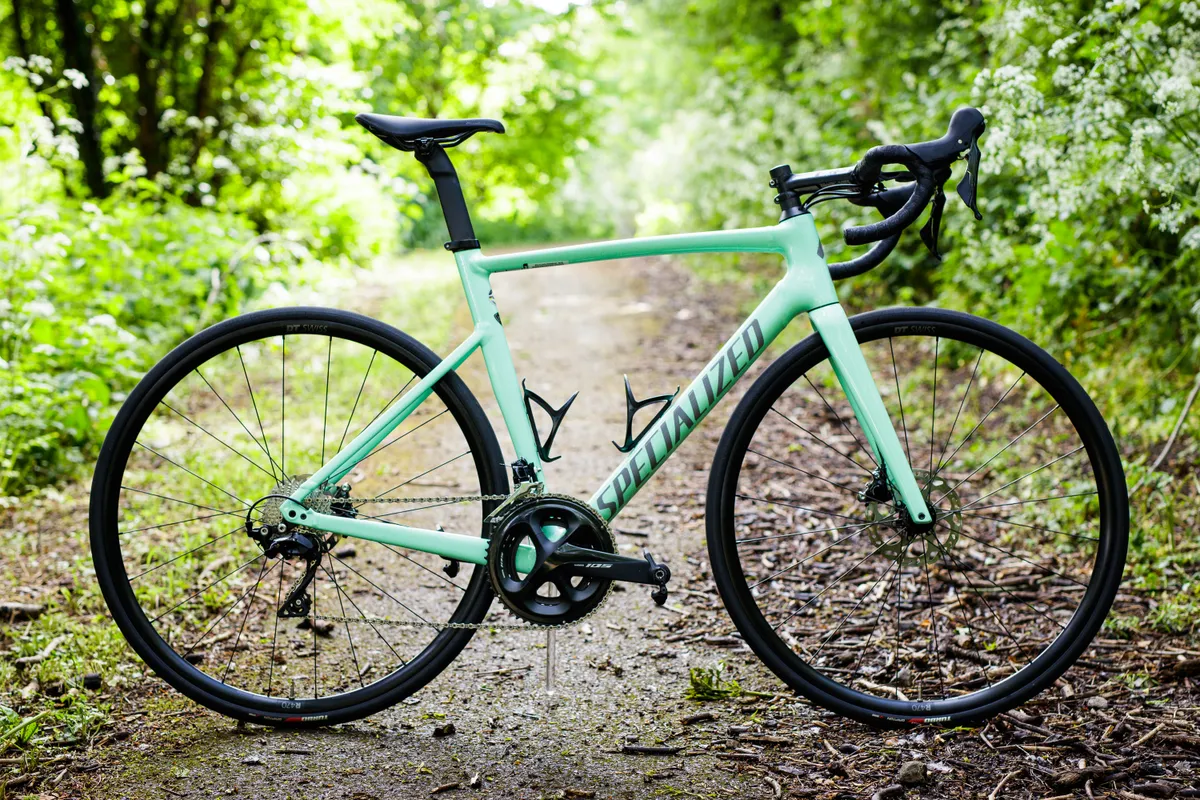
- £2,650/$3,000/€3,500/AU$4,200 as tested
- Stiff frame with exemplary response
- Ripe for a wheel and tyre upgrade
The Allez Sprint Comp borrows from Specialized's pro-level Tarmac SL7 , with the same geometry and aero tube profiles. Specialized also claims similar ride characteristics and it's a bike that you'd be hard-pressed to tell from a carbon frame.
The ride is a great mix of stiffness when pedalling with smoothness and there's a fast, exciting feel. It comes stock with 26mm tyres, but there's room in the frame for 32mm rubber.
The groupset is Shimano 105 with hydraulic disc brakes and a 52/36t chainset with 11-28t cassette, but you could fit a wider-range cassette if you preferred. The Allez Sprint Comp would benefit from a wheel and tyre upgrade though, and its weight isn't competitive with similarly priced carbon bikes.
- Read our full Specialized Allez Sprint Comp review
Specialized Allez Sport
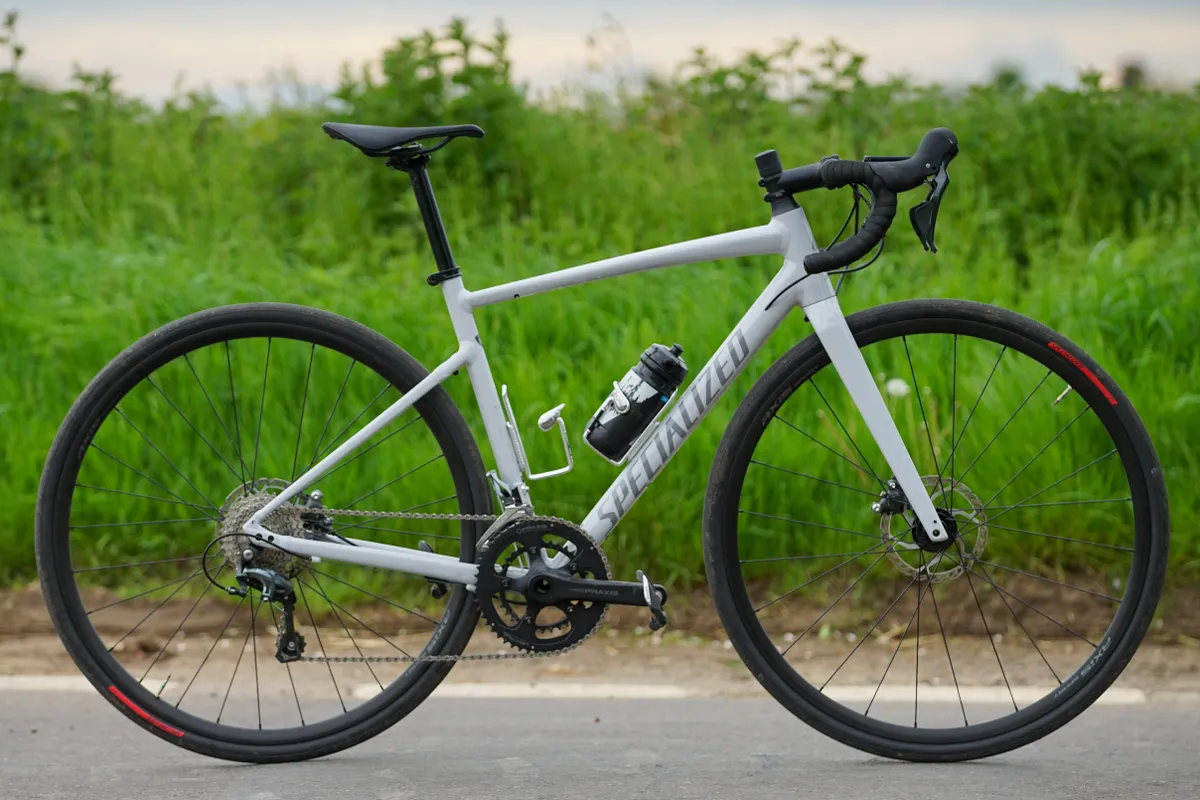
- £1,600/$1,800/€1,750/AU$2,500
- Commuter-friendly
- Nimble handling
Dispensing with rim brakes on the Allez Sport has enabled Specialized to increase tyre clearance to an impressive 35mm. When rolling on wider rubber, the Allez Sport remains comfortable on iffy surfaces.
Clearance decreases to 32mm with mudguards, for which it has mounts. You can also fit a rear rack, which makes the Allez Sport a great commuter or winter bike.
The endurance geometry puts you in a fairly relaxed riding position, but that's not to say the Allez Sport isn't fun to ride.
- Read our full Specialized Allez Sport review
Trek Domane AL 2
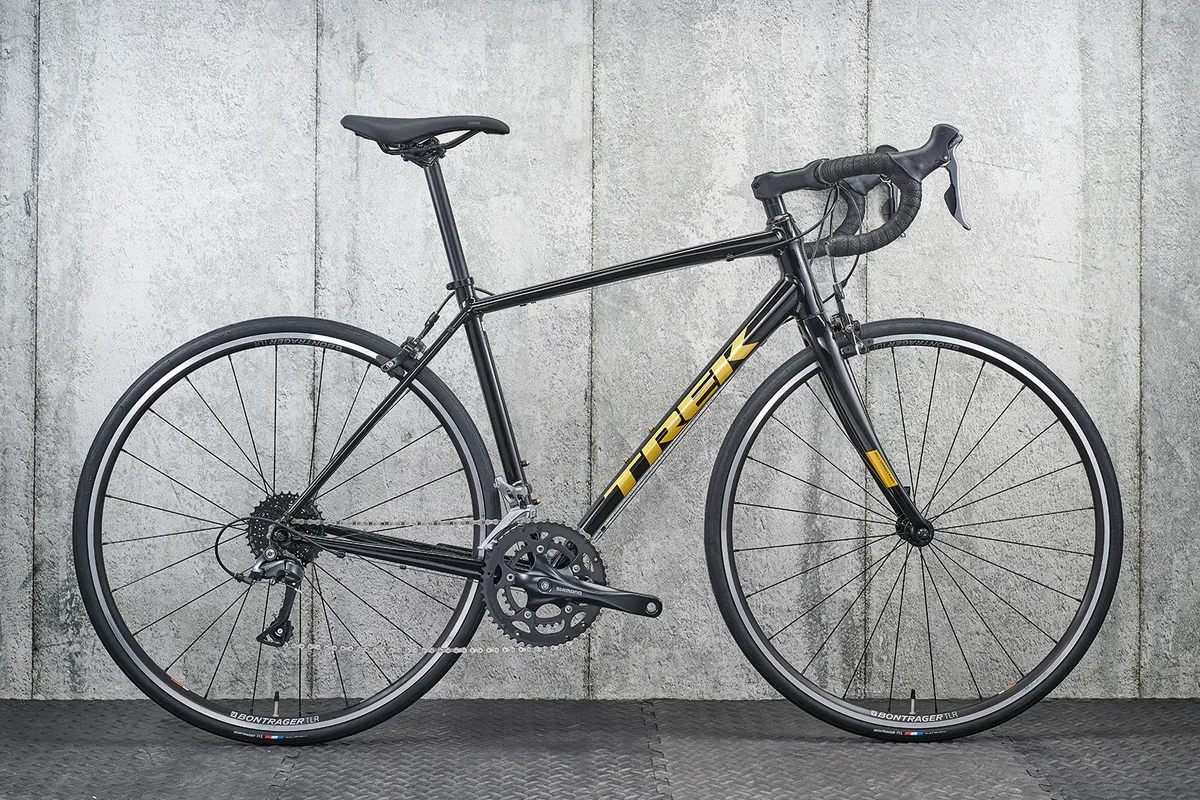
- £775/$1,100/€792/AU$1,600 as tested
- Impressive handling and spec for an entry-level bike
- Generously specced
Although it's an entry-level aluminium road bike, you still get a carbon fork with front-end IsoSpeed on the trek Domane AL 2, a feature designed to increase bar comfort found on much more expensive Trek bikes.
There's external cabling: good for maintenance, less so for consistent shifting once it gets dirty.
Spec-wise, there's 8-speed Shimano Claris with a non-series chainset and no-name brakes, which proved fairly ineffective, even in the dry.
We were really impressed by the smooth ride and handling of the Domane, even on its 25mm tyres, although the wheels felt a little heavy. But with its mudguard and rack mounts, we reckon the Domane would make a great winter bike or commuter.
- Read our full Trek Domane AL 2 review
Trek Émonda ALR 5

- £2,325/$2,300/€2,499/AU$3,500 as tested
- Up-to-date spec
The Trek Émonda ALR 5 proves that performance road bikes don't have to be made from carbon. In fact, the frameset weighs in only a fraction heavier than the carbon version, the Trek Émonda SL 5 Disc .
A compliant ride, trusty steering and the quality Shimano 105 R7000 groupset ensure the alloy Émonda is competitively priced.
However, sluggish tyres and leaden wheels take the gloss off the Émonda's performance.
- Read our full Trek Émonda ALR review
Triban RC 500 Disc

- £530 as tested
- Confident all-weather stopping
The RC 500 Disc is one of the best sub-£600 disc-brake road bikes that we've tested. Naturally, the RC 500 carries a weight penalty over a rim-brake bike at this price, but the Shimano Sora transmission components it uses are still commonplace on bikes costing a lot more.
It provides an engaging, comfortable and reassuring ride that's ideal for commuting or general road riding.
- Read our full Triban RC 500 Disc review
Vitus Razor Claris
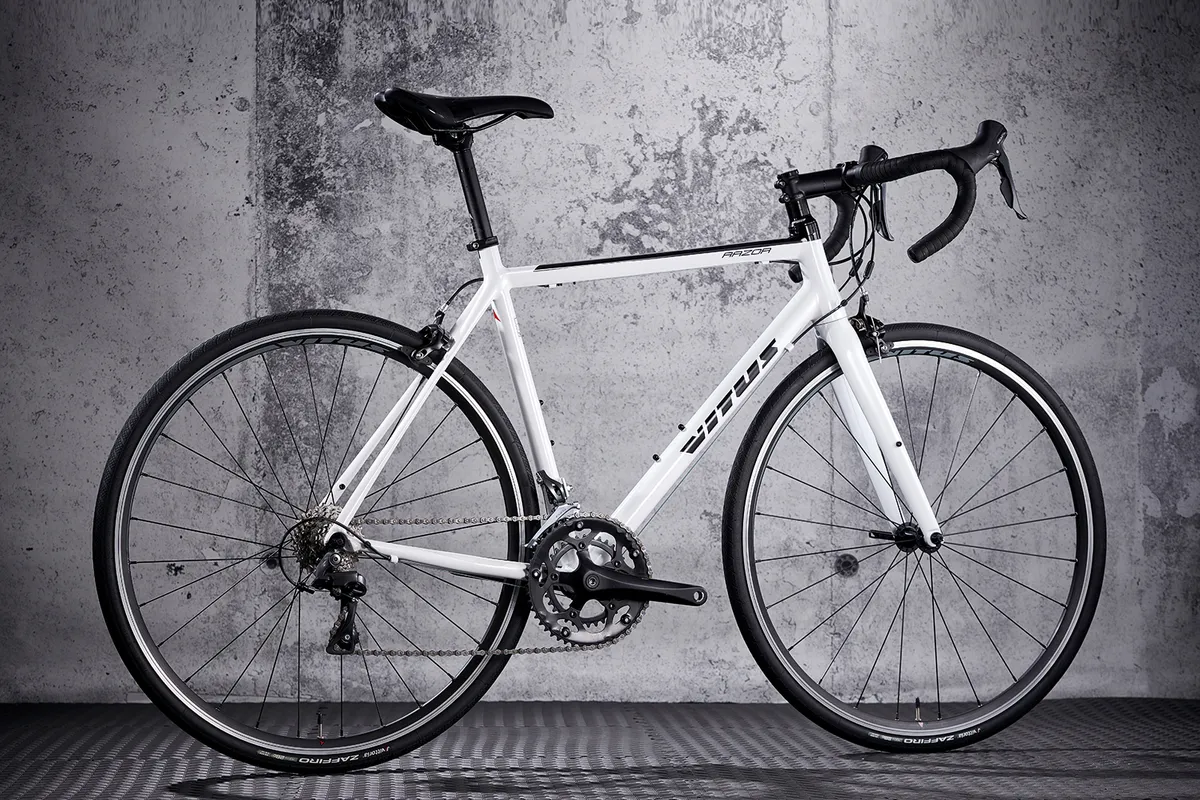
- £500 as tested
- Comfortable 28mm tyres
- Proven geometry
The Razor Claris from Chain Reaction Cycles’ own brand Vitus is a top value-first aluminium road bike or year-round training tool. Simplicity is key at this price point and Vitus didn’t stray from what it knows works well.
The alloy frame of the Razor inherited its dialled geometry from more expensive bikes in the Vitus line-up and the 28mm tyres it’s fitted with mean plenty of comfort.
The frame and carbon fork are ready to accept mudguards but not racks. Like other bikes at this price, it’s pretty weighty, but that’s par for the course.
- Read our full Vitus Razor Claris review
Common misconceptions that surround aluminium/alloy bikes
Aluminium or alloy.
It can be misleading to call an aluminium alloy bike frame ‘alloy’. After all, steel, titanium and aluminium-frame bikes will be made from metals that are alloys.
Despite this, calling a bike with an aluminium frame an alloy bike is still considered the norm.
"Aluminium bikes are excessively stiff"
One common misconception that surrounds aluminium alloy frames is that they provide a ride character that is excessively stiff.
It's true that some early aluminium frames were brutally stiff, but those days of experimentation have long since passed.
In truth, a frame’s stiffness is dictated by far more than just the material it is made from, with sizing, tube shapes and material grade being some of the many other crucial variables.
Share this article

Content editor

- Terms & Conditions
- Subscribe to our magazines
- Manage preferences


- ALL (67 Forums)
- WHEELS & TIRES
- SPECIALIZED
- CYCLOCROSS BIKES
- TIRES & WHEELS
Trek 1000 Road Bike

Frame Material: aluminum Frame Angles: Unspecified Sizes: 43cm, 50cm, 52cm, 54cm, 56cm, 58cm, 60cm, 63cm Colors: Brushed, White/Blue Fork: Trek Rear Shock: Not applicable Brake Levers: Shimano Sora STI Dual Control Handlebar: Bontrager Ergo Stem: aluminum Headset: 1 1/8" threadless Aheadset Front Der: Shimano Sora Triple Crankset: Bontrager Sport, 30/42/52 teeth Rear Der: Shimano Sora GS Pedals: aluminum cage w/clips & straps Tires: 700 x 25c Bontrager Select
- USER REVIEWS
Comfortable seat. Comfortable handlebar position, nice retro styling. Easy to pedal. Great commuter bicycle. My last bike was a Walmart piece of junk bike and this bike is leaps and bounds way better. Responsive and effective brakes. Bakersfield Pro Concrete Pumping
Can't find any.
The frame is superb! Geometry are great, solid, no flexing, fits perfect, rather light weight. I am highly satisfied. Carlsbad Concrete And Masonry
None so far.
This was my brother's first training bike when he began racing. It was handed off to me and I used it as a commuter class in Syracuse NY, commuting every day of the winter, snow and all. The chain regularly dripped rust when it thawed inside my apartment despite my best efforts to keep it lubed. Headset bearings totally rusted out twice and replaced. It then turned into my off road bike with 30mm knobby tires, getting battered over rough roads in Colorado like Engineer pass. This bike can handle anything and I love it. Original derailers, shifters, and brakes are still working like a charm and I can't remember the last time I adjusted anything! Orange paint scheme is a classic.
Not going to win any bike races as it's a cheaper aluminum frame.
Not a light weight performance bike, but it is a solid bike. I've had mine for over 25 years and who knows how many miles. I've taken it out of town on centuries and ridden the mountains with it. It doesn't have the original components anymore having been upgraded about 20 years ago from Sun Tour to Shimano RSX. I'm on my 4th saddle and probably my 3rd set of wheels. The frame is still rolling though. I would rate it and the Specialized Allez as the 2 best bikes for those starting out in road cycling.
The components are not top of the line or even close and the bike is heavy. You're not going to be doing many races on this bike. But I bought this bike for under $400 new so I didn't expect a bike that would be used in the Tour de France.
Great bike. Come to Nairobi and look for Brent Aviation and they can take you to the safari country with your bike for testing. www.brentaviation.co.ke for more details. You will not be disappointed
None that come to mind as compared to others
I am the 3rd owner. Bought after 10 years of use. It's been a year with me and I love it!
Not yet known
It is nice and light! I bought it used but it's lighter than my Cannondale.
I don't like the where the shifters are located. I'd rather have them by the handlebars.
I really like it though and think I will get used to the shifters.
Amazing frameset - strong and durable, still competitive with new tech alu bikes
A little heavy (8.3 kg with Easton EC90 cockpit, Quattros and 6800 Ultegra)
(I am Polish so sorry for my mistakes) I had many carbon bikes but i still got this one since 2007. In 2009 i equipped this frame with 7700 Dura Ace groupset and mavic wheels. Right now i still ride this bike but with Fulcrum Quattro LG and 6800 Ultegra. The geometry is amazing. Frame is stiff so still the bike is competitive in sprints in local races. The ride quality is OK, but mostly due to my upgrades (Easton EC90 handlebar, steam and seatpost and 25mm tires on wide rims) After all this years i decided to sell all other (newer and lighter) carbon road bikes, because this is The ONE :D Tottaly worth its price back then.
First Road Bike, bought in 2005. Still going strong, 2014... Just routine maintenance. Left a review here years ago.
Wheelset, changed out to supergo years ago and been fine ever since. Great first road bike.
I believe the model now is a Trek 1.1...Great buy, reliable. No its not carbon, hence you don't have to baby it...
frame and geometry are great, solid, no flexing, fits perfect, rather light weight. The group on it was Sora Tiegra. I took it all off and put Shimano 105 group, 9 speed, triple, Campanolo Record chain, upgraded the rims to Rigida racing 2000, with 105 hubs, Union - BMW spokes. The bike rides like a dream. I like riding it better than my Carbon Trek 5200, but the 5200 has Campanolo Chorus Gruppo, which is flawless- like a Mercedes compared to the 105, which is like a sewing machine. This is an excellent frame and fork, the the Crane Creek headset on mine is outstanding
Not as light as carbon. Low cost of this bike makes it unlikely to get high end components. Trek seems to provide better than average frames and lower than average (for the money) components, so more than likely you will want to upgrade as much as possible.
Great bike for the money. Solid, dependable, great to ride long distances, I ride 50 miles each Sunday.
Get the latest road bike reviews, news, race results, and much more by signing up for the Roadbikereview Newsletter
Hot Deals See All Hot Deals >>
Get the latest roadbike reviews, news, race results, and much more by signing up for the Roadbikereview Newsletter
- EDITORIAL REVIEWS
- CLASSIFIEDS
ABOUT ROADBIKEREVIEW
- TERMS OF USE
- PRIVACY POLICY
- ADVERTISING
VISIT US AT
© Copyright 2024 VerticalScope Inc. All rights reserved.
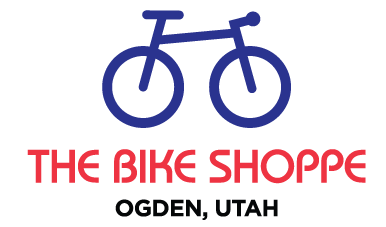
Join our Email List
Subscribe to our mailing list.
Oversize Charges
Some of our large and/or heavy items are subject to additional oversize charges that are separate from standard shipping costs. Most Bikes are subject to this fee. Learn More

OPEN: Mon, Sat 10-5; Tues - Fri 10-6; CLOSED: Sun
- Account Account
- Stores Stores
- Subtotal : $ 0.00 Checkout Cart
- 15.5-inch 1
- 21.5-inch 1
- Medium/Large 17
- Show More Sizes
- Show Fewer Sizes
- $200 to $499.99 1
- $500 to $749.99 1
- $750 to $999.99 1
- $1000 to $1999.99 8
- $2000 to $3499.99 10
- $3500 to $5999.99 12
Trek MTB Frames
- Bicycling Catalog
- Mountain Frames
A custom bike build is a great way to make a bike uniquely yours. Tested millions of times over, tried and true, Trek mountain bike frames are built to last and backed with a lifetime warranty. Since 1976.
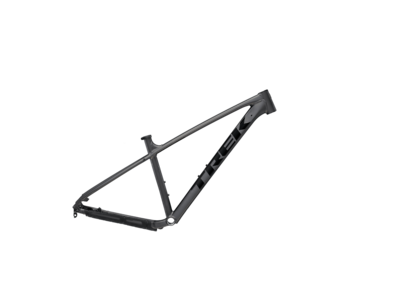
Shop in-store for even more deals!
Shop in store for even more deals we can't advertise!
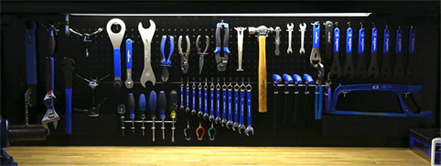
Mountain Bike Suspension Service
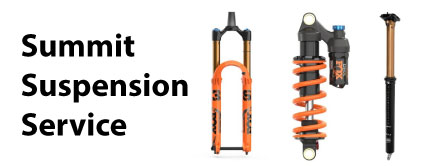
Trade In Your Bike

- Base Layers
- Mountain Bike Shorts
- Bibs, Tights + Knickers
- Mountain Bike Shoes
SAFETY GEAR
- Adult Helmets
- Youth Helmets
- Road Helmets
- Casual Wear
- Road Bike Shorts
- Bibs, Tights & Knickers
- Road Bike Shoes
- Accessories/Parts
Safety Gear
- Women's Helmets
- Road Bike Helmets
- Mountain Bike Helmets
WHEELS & TIRES
- Road Wheels
- Mountain Bike Wheels
- Mountain Bike Tires
- Wheels Accessories and Parts
- Derailleurs
- Chains & Cassettes
- Cranks and Chainrings
- Bottom Brackets
- Cables and Housing
- Power Meters
BRAKES & PEDALS
- Clipless Pedals
- Flat Pedals
- Mountain Bike Brake Sets
- Mountain Bike Brake Pads
- Road Bike Brakes and Pads
- All Brakes/Levers/Pads
Forks & Cockpit
- Grips and Bar Tape
- Rigid Forks
- Suspension Forks
Accessories
- Car Rack Accessories
- Electronics
- Front Lights
- Tail Lights
- Locks/Security
- Media/Resources
- Bicycle Mounted Racks
- Pumps/Inflation
- Tools/Maintenance
- Trailers/Strollers
- Trainers/Rollers
- Travel/Storage
- Water Bottles & Cages
Brand Guides
Bike buyer's guides, gear guides, new bike releases, summit bicycles online (855) 245-3663 [email protected] email, burlingame (650) 343-8483 [email protected] email, summit outfitters (408) 878-3252 [email protected] email, los gatos (408) 399-9142 [email protected] email, san jose (408) 264-2453 [email protected] email, palo alto (650) 304-0035 [email protected] email, summit bicycles mobile we'll come to you schedule mobile service today, (855) bike-one - for online orders and rental inquiries.
- Account Account
- Subtotal : $ 0.00 Checkout Cart
- Bicycling Catalog
- Mountain Frames
- Top Fuel AL Frameset
Trek Top Fuel AL Frameset
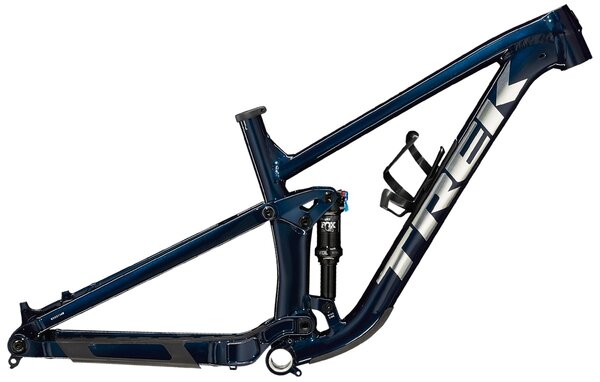
Top Fuel AL is an aluminum full suspension frameset ideal for building up a seriously fast, seriously fun down-country mountain bike. It's made for multi-tasking, so you can spec it to shred singletrack, crush flowy trails, and more. It's right for you if... You want to build up one single full suspension bike that's super fun to ride on a wide variety of trails. You're looking for a frame that's designed for both efficiency and shred-ability. The tech you get A lightweight Alpha Platinum Aluminum frame internal storage, Mino Link adjustable geometry, a 120mm Fox Performance Float shock with 2-position DPS damper, Knock Block 2.0 headset, 35mm Bontrager Elite stem, and internal cable routing. Designed for a 120mm fork, but can handle up to 130mm of fork travel. Fits 2.4" tires. The final word If you want a high-value foundation for a full suspension bike that's fast and fun on both flow trails and technical descents, Top Fuel AL is the place to start. Why you'll love it - Alpha Platinum Aluminum is lightweight and trail-tough - Efficient and capable: you can build up this frameset to suit a wide range of trails and terrain - Mino Link lets you make small adjustments to your geometry quickly and easily, even mid-ride - A sleek internal storage compartment gives you a versatile spot to stow tools and gear - New, removable Knock Block has a bigger steering angle to keep cables and hoses safe without sacrificing turning radius
Geometry (Low)
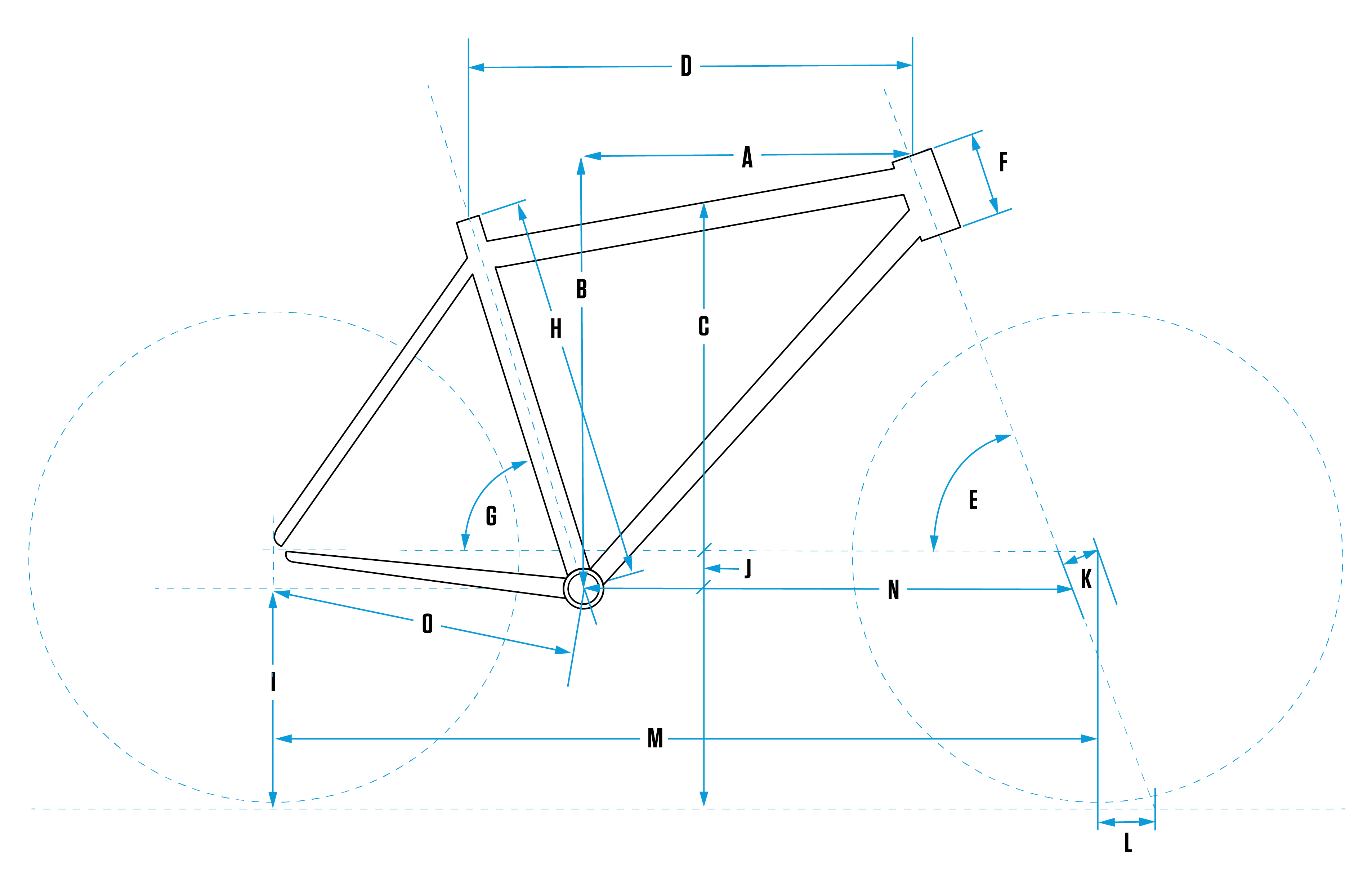
Geometry (High)

Due to supply-chain issues, Specs are subject to change without notice.
* Subject to change without notice.

Part Numbers

Trek bikes range: which model is right for you?
- Sign up to our newsletter Newsletter
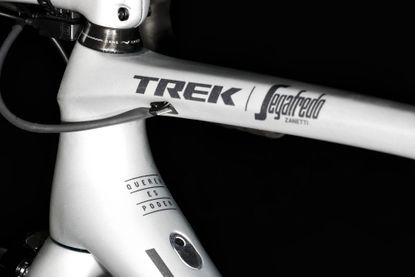
The humble beginning of Trek bicycles took place in the "red barn" - once a carpet warehouse - in Waterloo, USA. The first bikes were steel touring frames , but within three years the brand had expanded substantially.
Eventually outgrowing the barn, Trek moved into a much larger headquarters - still in Waterloo - in the year 1980. From there it began to manufacture road racing bikes, then in 1983 created its first mountain bike before moving into accessories come 1984.
Having started out in steel, Trek moved into developing aluminium bikes in 1985. The first Trek branded full carbon frame came in 1989 - the Trek 5000 had a frame weight of 1.5kg. It was built by an outside manufacturer and discontinued after a year. Trek made its own efforts at carbon, with an in-house production, in 1992 to much greater success.
>>> Trek mountain bikes: which model is right for you?
Now, Trek offers the Madone (aero bike), Domane (endurance bike), Emonda (lightweight race bike) and Checkpoint (gravel bike) as well as the Boone cyclocross and Speed Concept time trial machine.
Trek's OCLV Carbon
You can trust Cycling Weekly. Our team of experts put in hard miles testing cycling tech and will always share honest, unbiased advice to help you choose. Find out more about how we test.
Trek's carbon bikes have always used their own patented 'OCLV carbon' - this stands for Optimum Compaction Low Void. It believes this carbon creates the best compromise between low weight and high strength and stiffness.
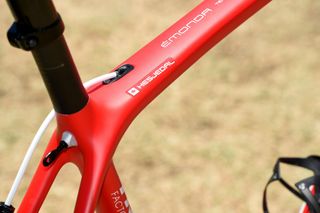
Optimum Compaction refers to the way sheets of carbon are layered into the mould, and optimised via heat and pressure - in Trek's opinion the two treatments are administered to the perfect ratio. Low Void refers to the minimisation of space between the layers of carbon, which might otherwise reduce strength and durability.
In 1995, Trek opened an independent facility inWhitewater, Wisconsin. The idea being that the Waterloo factory would work in frame development only. For those who want to customise their ride, the'Project One' custom paint programme arrived in 2001.
Trek's pro cycling support
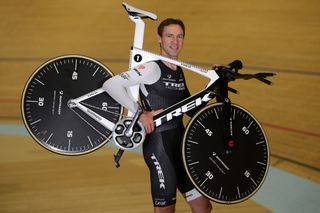
Trek supported now disgraced American cyclist, Lance Armstrong, through his peak years. In 1997, it helped him sign with their sponsored team, US Postal Service Pro Cycling. He won his seven editions of the Tour de Frances on bikes bearing the brand name, but all of said wins were later taken from him following doping violations.
In 2014, the brand sponsored the Trek Factory Racing Team, now calledTrek–Segafredo. In that role, it provided bikes for high profile winners such as Fabian Cancellara and Alberto Contador,as well as Jens Voigt, and notably his Hour Record in September 2014.
In 2020, Trek continued to support the Trek-Segafredo men's and women's race outfits, two highly successful teams.
Trek's acquisitions
Over the years, Trek has made a number of high profile acquisitions. The most famous, perhaps, Gary Fisher bicycles - the mountain bike brand which it took over in 1993.
Later came Bontrager Cycles in 1995 and Electra Bicycle Company in 2014. Bontrager, now Trek's component and apparel brand, maintains the same name as does Electra, the creator of leisure bikes and accessories.
Useful links for road bike shoppers…
Trek's road bike models
Trek is able to offer a wide range of different bikes, each tuned to a slightly different purpose. Some model families are available in a selection of standards (SLR premium carbon, SL carbon, ALR premium aluminium and AL aluminium), and then these come with assorted levels of componentry to suit your price bracket.
To add even more depth to the range, Trek offers many models in two different 'fits'. The Madone and Émonda come as standard in an H2 (traditional) fit, but there are versions in what it calls 'H1' fit. This is more aggressive, shaving off about 30mm on the head tube to create a longer, lower ride. The Domane comes in an H2 'Endurance' fit, with a few models in 'Pro Endurance', again with a longer and lower stance on offer.
Here's a look at the key model families...
With each product is a ‘Buy Now’ or ‘Best Deal’ link. If you click on this then we may receive a small amount of money from the retailer when you purchase the item. This doesn’t affect the amount you pay.

Trek Domane
Our expert review:
Reasons to buy
Reasons to avoid.
The Trek Domane was introduced in 2012. It was created to offer a comfortable ride, the key feature being an IsoSpeed decoupler which separated the seat tube from the top tube, thus reducing vibrations and fatigue.
In 2016 it gained theFront IsoSpeed, which helps to reduce vibrations at the front end without impacting handling. This came alongside a new slider, which alters the level of dampening offered by the rear.
In its most recent update , the Domane took notes from the Madone with an aero fork profile, whilst becoming more versatile thanks to clearance for 38mm tyres (without mudguards, 35mm with). It also gained a downtube compartment for stashing tools (or snacks!).
Though comfort is important to the Trek Domane, it's still a racing frame, and its prowess has been demonstrated by UCI WorldTour riders at major one-day Classics, such as Strade Bianche and the Tour of Flanders. The top Domane bikes come with an H1.5 fit, which was developed with the Trek-Segafredo teams to offer the optimal balance between aerodynamics and endurance.
The Trek Domane - available as a men's build or with women's specific componentry - is a fast selling model, which comes in a range of frame materials.
The Domane SLR uses the lightest carbon Trek offers, the SL is one step down, whilst the AL uses aluminium and is the cheapest of the range.
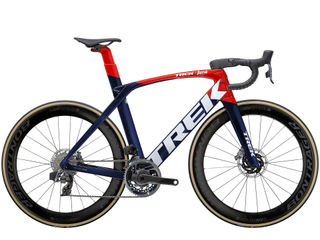
Trek Madone
The Trek Madone is quite another beast, and the bikes come built for men and women; the latter's models with women's saddles and narrower handlebars . With an aggressive geometry and stiffness to boot, it's a road race hero, and aerodynamics have become part of its lifeblood. When we tested five aero bikes , head to head, the Trek Madone came out fastest.
Modern Trek Madone's feature a high level of integration, with the cables tucked away yet reachable via an access point at the top of the down tube.Wind tunnel testing has helped Trek to create theirKVF (Kammtail Virtual Foil) tube shapes, used on the frame and fork. These unconventional tube shapes are designed to further reduce drag, helping the rider/bike unit to slice through the air efficiently.
Because being bumped around doesn't make you faster, the Madone also features an IsoSpeed decoupler at the seat tube and more recently an adjustable one at the head tube, which offers greater compliance whilst still being integrated to prevent adding drag.
The newest model, according to Trek, can offer 17 per cent more compliance through to 21 per cent more stiffness, depending upon your chosen setting. A damper at the seatpost is also said to cut rebound by 13 per cent. All of these stats add up to a bike that can be comfortable and stiff at the same time - and one that earned a place in our 2018 Editor's Choice awards.
The majority of the bikes come in a more relaxed 'H2' geometry, save for the Madone SLR, which is in an 'H1.5' fit - this is designed to allow riders to achieve an H1 fit or an H2, depending upon their set up.

Trek Émonda
Adding more depth to the Trek family is the Trek Émonda, launched in 2014. Designed to be a climbing bike, newer adaptations are capable of negotiating mixed terrains - with disc brakes available and tyre clearance to 28mm.
>>> Trek Émonda range explained
Trek continues to work on developing the Émonda, dropping the weight of the top end Trek Émonda SLR to 640g in a size 56cm (665g with discs) and 1091g for the Trek Émonda SL (1149g with discs). The weight difference is largely achieved by the use of700 Series OCLV carbon on the SLR, as opposed to 500 series on the SL.
The aluminium model has seen some major work and the result earned it a place in the Editor's Choice 2019 awards. The key characteristic we loved was the way it simply didn't look, or ride, like aluminium. A lot of this is down to Trek's 'Invisible Weld Technology' which increases the surface area of the frame, adding to strength and reducing weight. The ALR model's frame weight comes in at a competitive 1112g, or 1131g with discs, and it uses the brand's 300 Series Alpha Aluminium.
The carbon models are available in 'SLR' build or 'SL', the former being the lightest and the latter more affordable. The majority of Trek Émonda bikes cone in an 'H2' fit, but they can be purchased in an 'H1' geometry, if you choose the top end 'Race Shop' version.
There are a few nods to neatness and integration around, such as the use of 'Blendr Integration' which seamlessly mounts Bontrager’s cycling computer, Ionbike lights or even Garmin computers directly to the handlebars. On SLR versions there's ‘Control Freak Cable Management’ which allows for shifter and brake cables to be housed through the frame.
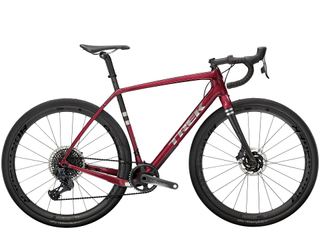
Trek Checkpoint
With gravel and adventure bikes a fast growing category, the Checkpoint is Trek's offering to fill that sector. The crucial element here is that both the SL and ALR frame options come fitted out with 35c gravel tyres, and can accommodate rubber up to 45c. They've all got internal cable routing, to ensure much stays out, whilst the higher end models use 'Control Freak' routing which is neater.
>>> Best gravel bikes: the top models reviewed
If you opt for the carbon SL model, you get vibration dampening from an IsoSpeed decoupler at the rear, too. To provide stability and confidence on light trails as well as comfort on all-day adventures, the geometry is not as aggressive as the road bikes elsewhere in the range. Such all-day rides warrant plenty of kit, so there's mounts for racks and mounts. Similar to elsewhere in the range, there's AL, ALR and SL models.
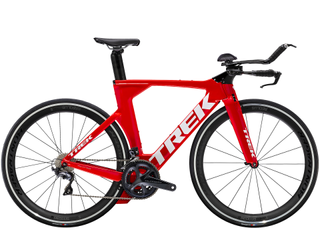
Trek Speed Concept
Trek's Speed Concept time trial bike has been raced by the pros yet is still seen on the amateur race scene as a popular option.
>>> Check out Fabian Cancellara's 2016 Speed Concept
The frames use 500 Series OCLV Carbon, boasting the KVF (Kammtail Virtual Foil) tube shapes described in the Madone, plus a carbon fork with integrated brake and stem - the key goal being cutting through the air quickly.There's space to fit Trek's SC Draft Box and SC Sped Box, largely used by triathletes carrying snacks.
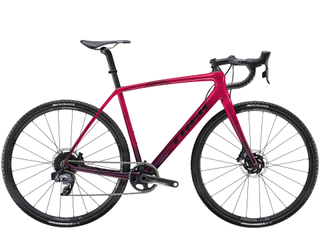
Trek Boone 5
Trek's got plenty of experience in the muddy realm of off-road cycling - and they've got a selection of cyclocross bikes. The Trek Boone 7 model comes with hydraulic disc brakes, a one-by crank and 12-speed cassette and they've all got Bontrager's own 33c cyclocross tyres.
The frame material is Trek's 600 series OCLV carbon, and there's front and rear IsoSpeed decouplers to help riders negotiate the mud without excess transfer of vibration. Combining the mud ready tyres, disc brakes, 'cross focused cable routing and geo into an aluminium package is the Trek Crockett family.
They key differentiation is the frame material, which is300 Series Alpha Aluminium, and there's no decoupler. However, it's still a performance bike that's ready to race.
Thank you for reading 20 articles this month* Join now for unlimited access
Enjoy your first month for just £1 / $1 / €1
*Read 5 free articles per month without a subscription
Join now for unlimited access
Try first month for just £1 / $1 / €1
Get The Leadout Newsletter
The latest race content, interviews, features, reviews and expert buying guides, direct to your inbox!
Michelle Arthurs-Brennan the Editor of Cycling Weekly website. An NCTJ qualified traditional journalist by trade, Michelle began her career working for local newspapers. She's worked within the cycling industry since 2012, and joined the Cycling Weekly team in 2017, having previously been Editor at Total Women's Cycling. Prior to welcoming her daughter in 2022, Michelle raced on the road, track, and in time trials, and still rides as much as she can - albeit a fair proportion indoors, for now.

The ultra-distance benchmark that pits riders against a 4,000km self-supported Europe-wide trek reaches double figures
By James Shrubsall Published 27 April 24
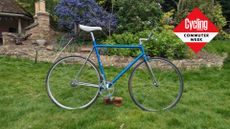
Charming, simple, and always a great workout, this is the perfect town bike
By Joe Baker Published 27 April 24
Useful links
- Tour de France
- Giro d'Italia
- Vuelta a España
Buyer's Guides
- Best road bikes
- Best gravel bikes
- Best smart turbo trainers
- Best cycling computers
- Editor's Choice
- Bike Reviews
- Component Reviews
- Clothing Reviews
- Contact Future's experts
- Terms and conditions
- Privacy policy
- Cookies policy
- Advertise with us
Cycling Weekly is part of Future plc, an international media group and leading digital publisher. Visit our corporate site . © Future Publishing Limited Quay House, The Ambury, Bath BA1 1UA. All rights reserved. England and Wales company registration number 2008885.
Trek 4300 Mountain Bike Review: Is it worth it?
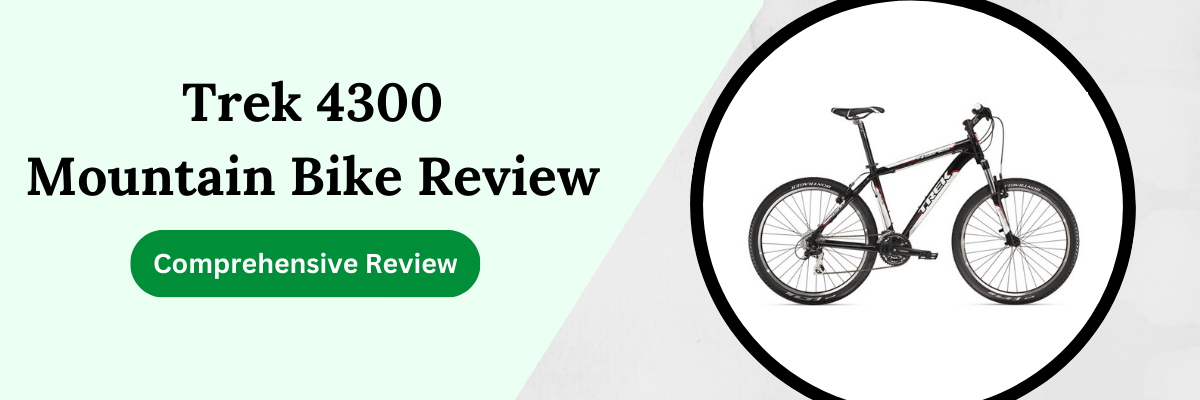
Looking for a reliable and affordable mountain bike that can handle rugged terrain? The Trek 4300 might just be the bike for you.
As a mountain bike, Trek 4300 is built to take on any adventure. Thanks to a durable aluminum frame, wide range of gears, and powerful brakes.
In this article, we’ll take a closer look at the Trek 4300 mountain bike, its features, and what makes it stand out from the competition.
Read on to find out if the Trek 4300 is the right mountain bike for you.
Trek 4300 Mountain Bike At A Glance
Trek 4300 is a hardtail mountain bike with a lightweight and sturdy Alpha aluminum frame, which makes it easy to handle. While the Marlin 5 is made for trail riding, it’s also versatile and can double as a commuter bike.

The Shimano drivetrain and powerful disc brakes offer great versatility on all types of terrain. While the front suspension provides excellent balance and stability on rougher roads or trails, ensuring smooth rides.
It also comes with double-walled rims and puncture-resistant 26×2.0″ tires, making it a reliable choice for trail riding.
Trek 4300 is the perfect combination of affordability and quality, which is a great choice for beginner riders looking to hit the trails.
- Sturdy and lightweight aluminum frame
- Responsive brakes and smooth shifting
- Comfortable riding position
- Adjustable saddle and handlebars
- Complex 3X drivetrain
- Small 26-inch wheels
Unfortunately, this bike has been discontinued, but Trek has impressive newer models with better designs which are excellent alternatives to the 4300 Trek mountain bike.
We recommend Trek Marlin 5 and Schwinn Traxion as great alternatives, you can scroll down to see our brief review of these bikes.
Trek 4300 Mountain Bike Features
Frame and fork.
First things first, the frame is a crucial component of any bike. In the case of the Trek 4300, it’s made of aluminum, which is a popular choice due to its durability, affordability, and lightweight.
In fact, the original 4300 model used Trek’s Alpha Aluminum frame that’s tough enough to handle rugged trails with ease. As the model progressed, Trek introduced the Alpha Gold Aluminum material for the frame of the later versions of the 4300.
This updated version has a more aggressive race geometry for speed, with internal cable routing for durability, and rack mounts for versatility.
You’ll also find that it has a replaceable derailleur hanger. Now, these upgrades made the bike more versatile and allowed it to handle a wider range of terrain.
Moving on to the fork, the Trek 4300 is a classic hardtail mountain bike with a front fork. This means that the front wheel is equipped with a suspension system that can absorb shocks and vibrations, making for a smoother ride on moderate terrain.
The suspension fork has 70-100 mm travel, depending on the specific model, and it’s designed to handle mountain trails. However, it’s important to note that the suspension fork isn’t long enough to handle descents on rough trails.
So while it can certainly absorb some bumps, it’s not enough for really difficult trails or downhill riding. But don’t worry, this bike can still take a lot of abuse. After all, it’s a mountain bike, and it’s designed to handle dirt trails.
Gears and Brakes
Gears and brakes are some of the most important components of a mountain bike, especially if you plan on hitting tough trails or climbing hills.
Let’s take a closer look at the gear and brake systems on the Trek 4300 mountain bike.
In the first few generations of the Trek 4300, you could find a 3x8spd drivetrain with 24 gears.
But if you’re looking for something a bit more efficient, the later models of the Trek 4300 were fitted with the Shimano Acera M390 9-speed drivetrain. This gives you a wider range of gears for better control on hard trails.
Now, let’s talk about brakes. If you carefully look through all the different versions of the Trek 4300, you’ll find that some of them had rim brakes and some others had disc brakes.
The older models were fitted with rim brakes, while the later models featured the Shimano M395 hydraulic disc brakes, which gives a much better braking power at a great price.
Wheels and Tires
Most mountain bikes we see now have 29-inch wheels, but the Trek 4300 had 26-inch wheels and 26×2.20 tires, which actually are very agile and will quickly pick up speed.
In later models, these tires were improved to be puncture resistant and could withstand increased tire pressure.
We consider bigger wheels to be better for mountain riding, but small wheels aren’t that bad either because they are more agile, tend to accelerate faster and will easily move around tight corners. And these features are great for technical riding.

But the bigger 27.5 and 29″ wheels actually provide more stability and comfort, which is why they are now preferred for mountain biking.
Despite the small wheels, the double-walled rims and 32-spoke design of the Trek 4300 are pretty solid and tough enough to withstand years of abuse on the trails.
At the end of the day, the wheels and tires on the Trek 4300 are a great combination for riders who want to tackle technical terrain and need a bike that can handle quick acceleration and tight cornering.
While the market may be shifting towards larger wheels, the Trek 4300 is still a great option for those who value nimble handling and puncture resistance.
Saddle and Handlebars
The saddle is an important component of any bike, especially when it comes to mountain biking.
While the standard saddle on the Trek 4300 may not be the most comfortable, the 31.6mm seatpost offers plenty of adjustment for a customized fit.
You can even upgrade the saddle to one that suits your preferences for maximum comfort.

The handlebars of the Trek 4300 are a different story, though. Made from durable alloy, these handlebars are built to withstand the rigors of off-road riding.
With a 31.8mm diameter and 15mm rise, the handlebars provide a comfortable and stable grip while you ride.
The stem of the Trek 4300 is also designed for both comfort and control. With a 31.8mm clamp diameter and a 10-degree rise, the stem ensures a comfortable riding position while keeping you in control of the bike.
When you combine the Bontrager Riser handlebar and the Bontrager Approved stem on the Trek 4300, you get a comfortable and stable ride.
Size and weight
When it comes to finding the right fit, the Trek 4300 Mountain Bike has got you covered. With a wide range of frame sizes available, from 13″ to 22.5″, you’re sure to find the perfect fit for your body type.
Actually, you may find sizes ranging from 13, 16, 18, 19.5, 21.5, 23.5″. But since these bikes have been discontinued by Trek, finding them in the exact size you want may be a challenge.
One thing to keep in mind is that the bike weighs around 28.2lbs (12.8 kg), which might not make it the lightest bike on the market. I believe this is due to the front fork, which adds weight but also adds extra shock absorption for a more comfortable ride.
However, this bike is sturdy enough to support riders up to 265 lbs of body weight.
Ride quality and performance
The Trek 4300 Mountain Bike offers fun and confident rides on the trails, whether you’re hitting the trails or cruising around town.
While it’s considered an entry-level mountain bike, don’t let that fool you. It’s a reliable bike that can be used for commuting, leisurely rides, or for hitting some challenging trails.

The comfortable riding position and triple chainring setup make it easy to tackle steep hills and rough terrain. Plus, the high-quality suspension system keeps things smooth and comfortable, no matter what kind of surface you’re riding on.
Trek 4300 has durable components that are built to last, so you don’t have to worry about things breaking down quickly.
The responsive brakes and smooth-shifting gears give you complete control and make riding this bike a breeze. And, even in wet or muddy conditions, the disc brakes offer reliable stopping power.
One of the best things about the Trek 4300 is its versatility. While it’s certainly a capable mountain bike, it’s also a great choice for commuting or everyday riding.
Best Trek 4300 Alternatives
As Trek 4300 mountain bikes are now discontinued, you cannot buy them brand new. However, Trek has a range of trail bikes that offer superior build quality and performance.
These models are more advanced and come at a higher price point than the budget options available from brands like Schwinn and Mongoose, but the investment is worth it as the quality is unmatched.
In my opinion, the Trek Marlin 5 and Schwinn Traxion are great alternatives for the Trek 4300 mountain bike.
Trek Marlin 5
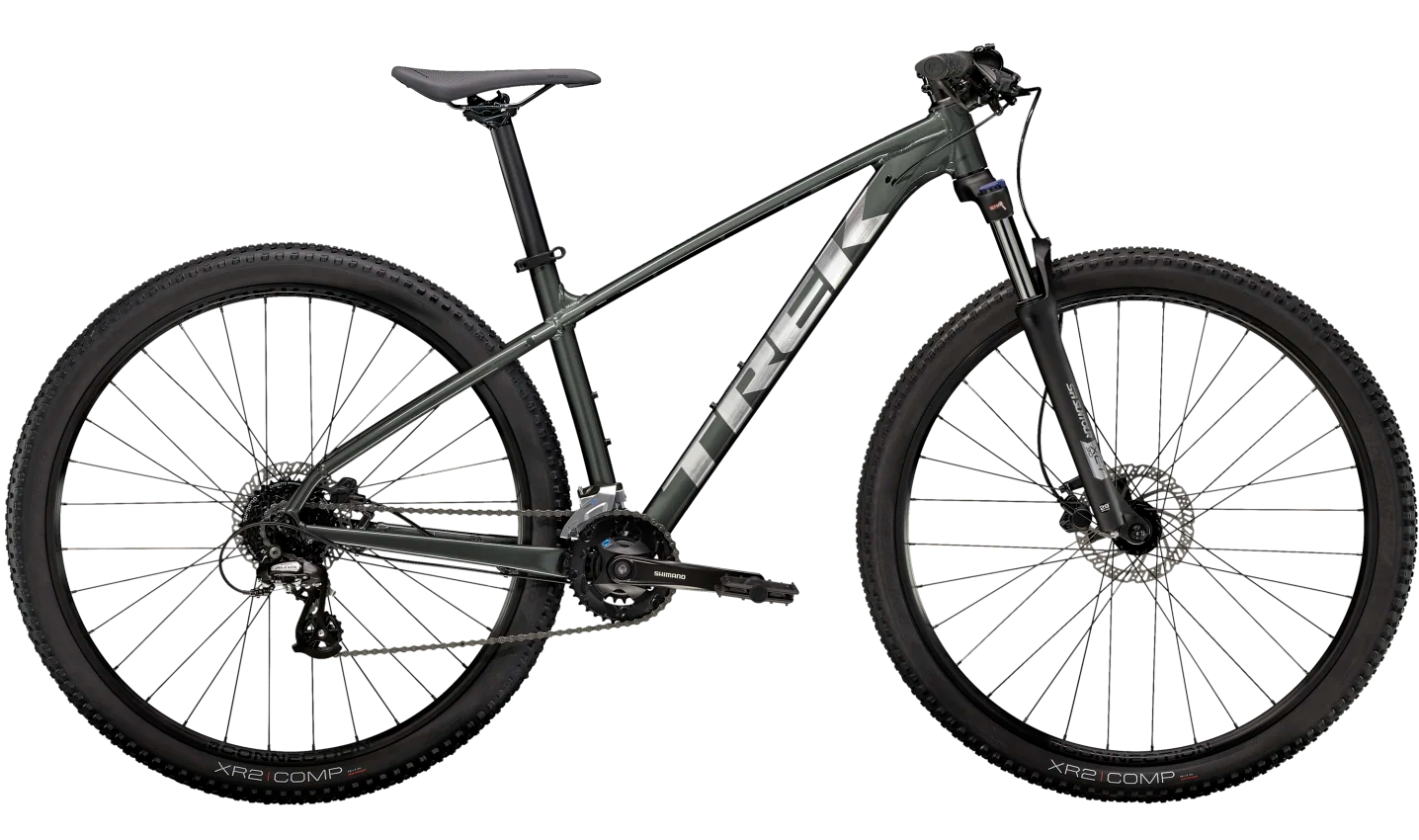
Trek Marlin 5 is a trail mountain bike that’s built to gracefully handle daily adventures on rough terrains. It has a lightweight aluminum frame with a 2×8 drivetrain for smooth riding and shifting and powerful hydraulic disc brakes which provide fast and precise stopping.
While the Marlin 5 is made for trail riding, it’s also versatile and can double as a commuter bike. This bike has a stunning frame with internal routing for the brake and shift cables, which can extend the lifespan of your wires by shielding them from the environment.
It’s the perfect bike for new trail riders and comes in seven frame sizes to fit riders of all heights. Marlin 5 is elegant and comfortable, with a ton of features that are typically reserved for more pricey bikes.
Schwinn Traxion

The Traxion MTB is equipped with a remarkably solid aluminum full-suspension frame that easily picks up speed and maintains it very well.
This bike provides comfortable rides and handles bumps well, regardless of where your trail adventures take you. Thanks to the wide knobby tires, sturdy double-walled aluminum rims, and a superb trail-taming Schwinn suspension fork.
The 24 speed shifters also ensure fluid gear shifting, which makes for a fun and pleasant riding experience. In addition to that, the mechanical disc brakes lock into place instantly when applied, and this ensures precise and efficient stopping.
The wheels have all-terrain tires and alloy rims for strength and low weight. Plus, you can easily adjust the height of the saddle using the quick release seat post to get your best fit.
Related Post: Schwinn Traxion Mountain Bike Review
Finally, is Trek 4300 MTB a good buy?
The Trek 4300 mountain bike is a reliable and versatile bike that can handle a variety of terrains and riding styles.
With its durable aluminum frame, wide range of gears, and powerful brakes, this bike is a great choice for both beginners and experienced riders.
Trek 4300 offers a solid balance of performance and affordability. And if you’re looking for a reliable and budget-friendly mountain bike, the Trek 4300 is definitely worth considering.
You likely won’t find a brand-new Trek 4300, but the alternative options we included above are great choices too.
You may also like:
- Best Budget Mountain Bikes Under $400
- Best Budget Mountain Bikes Under $300
- Best Mountain Bikes for $1500 and below
Dial up your biking experience.
BikeCrunch’s content is for informational and educational purposes only.
As an Amazon Associate, we earn from qualifying purchases. However, this does not impact our reviews and comparisons. We try our best to keep things fair and balanced, in order to help you make the best choice for you.
© BikeCrunch

Carbon Vs Aluminum Bike Frame: Which is Better?
By: Author Zachary Friedman
Posted on Last updated: February 10, 2024
Categories Bikes and Cycling
Home » Bikes and Cycling » Carbon Vs Aluminum Bike Frame: Which is Better?
When it comes to choosing a bike frame, one of the most important considerations is the material it is made of. This guide outlines the pros and cons of carbon vs aluminum bike frames to help you choose which material is better for your next bike. We’ll compare the weight, durability, handling, efficiency, comfort, cost, looks, longevity, and more. This guide covers both mountain bikes and road bikes. I’ve ridden both frame materials extensively over the years. In this guide, I’ll share my experience.
Generally, carbon bikes are the better choice if you’re looking for a bike that is lighter, more comfortable, more responsive, and more efficient. Aluminum bikes are better if you’re looking for a bike that is cheaper, more durable, and safer.

Pros of Carbon Frames
- Lighter weight because the material is stronger and less dense
- Stiffer and more responsive. This improves handling
- More comfortable/better ride quality
- Carbon frames can last longer because they don’t fatigue
- Carbon fiber frames can be repaired if they crack
- More efficient because they are lighter, more aerodynamic, and more rigid
- No corrosion
- Higher-end and more technologically advanced
Cons of Carbon Frames
- More expensive
- Durability can be an issue. Carbon frames can crack from a light impact in some cases. You can also accidentally crack a frame by overtightening components
- Harder to carry luggage because you can’t mount racks and panniers to most carbon frames
- Bad for the environment because carbon fiber is not very recyclable
- Safety can be an issue because carbon frames can fail without warning if they are compromised
Pros of Aluminum Frames
- More durable. Aluminum can withstand a harder impact without cracking or failing because it is less brittle
- More environmentally friendly. Aluminum is highly recyclable
- You can mount luggage and use your frame for touring
- Safer because aluminum is less likely to fail unexpectedly
Cons of Aluminum Frames
- Harsher ride because the frame is more rigid
- Aluminum frames often can’t be repaired if they crack
- Aluminum frames don’t last as long because the metal fatigues over time
Bike frames are most commonly made of carbon fiber, aluminum, steel, or titanium. The majority of modern mountain bike, gravel bike, and road bike frames are made of either carbon fiber or aluminum. High-end bikes and custom-made bikes are usually made of steel or titanium.
Carbon Fiber Bike Frames
Carbon fiber is basically a plastic that is reinforced with super strong fibers. The material was originally developed for use in the aerospace industry where parts need to be as light and strong as possible. It offers an incredibly high strength-to-weight ratio. It has a higher tensile strength than steel. In addition, it is also extremely rigid.
Carbon fiber is made by processing a polymer into strings or filaments of carbon atoms that measure 5-10 microns in diameter. Thousands of these filaments are combined to form a tow or ribbon. Tows are bonded together with an epoxy resin. The carbon and resin material is called a composite. Composites are layered into a laminate.

This material is then shaped into bike frames using molds and heat. Manufacturers use a number of different techniques. Some frames are made by bonding together individual carbon fiber tubes with a type of glued insert. Some high-end carbon bikes use modified monocoque construction. This means that the head tube, downtube, top tube, and seat tube consist of one continuous piece.
There is a lot of variation in the way that carbon frames are built as well as the way the carbon fiber itself is made. For example, the type of resin used, the thickness of the layers, the construction style, the way the material is heated, the direction of the fibers, the grade of carbon fiber, and the density and types of fibers used all play a role in the ride characteristics, durability, stiffness, and comfort of the finished frame.
Aluminum Bike Frames
Before carbon fiber became affordable and accessible to cyclists, aluminum was the most common frame material. The material is lightweight, stiff, affordable, and easy to work with.
Aluminum itself isn’t strong enough for building bike frames. It must be alloyed with other metallic elements, like magnesium, zinc, or silicon, to increase the strength and durability. 6061 and 7005 are the two most common aluminum alloys used for frame building. Of the two, 6061 is slightly superior due to its lower weight.
To reduce the weight, aluminum bike frames are generally butted. Butting involves removing unnecessary material from the inside of the frame tubes. In other words, making the tubes thinner where they don’t need as much strength. Butting makes the bike 3-4 pounds lighter, more compliant, and more responsive. The drawback is that the process adds cost.
After the tubes are shaped and butted, they are welded together with TIG welds. Finally, the frames are heat-treated for strength.

These days, manufacturers can also manipulate aluminum with a process called hydroforming. Hydroforming involves placing the aluminum tubes in a mold then injecting the mold with fluid at incredibly high pressures. These tubes form to the mold.
Frames can also be hydroformed after they are welded to fine-tune the shape. Hydroforming can optimize the aluminum frame shape for aerodynamics, stiffness, and comfort. This process can be used to mold the frame into complex shapes that can’t be achieved by hand.
Carbon Fiber Vs Aluminum Bike Frames

Frame Weight
Carbon bike frames are lighter than equivalent aluminum frames. In fact, carbon fiber is the lightest bike frame material in use today. A lighter bike allows you to climb and accelerate faster and maneuver more easily because there is less weight to move around.
Many manufacturers offer complete 15 lb (6.8 kg) carbon road bikes. This is the minimum bike weight according to the UCI rules. Carbon frames themselves weigh as little as 700-1000 grams. 20 lb complete carbon mountain bikes are commonly available as well.
Complete aluminum road bikes, on the other hand, weigh around 18 pounds on average. That’s 3 pounds heavier. Top-of-the-line aluminum frames weigh about half a pound more than carbon frames. Aluminum mountain bikes weigh around 1 pound more than comparable carbon fiber mountain bikes.
Carbon fiber frames are lighter than their aluminum counterparts because the material is less dense. The density of modern carbon fiber is about 1.9 g/cm^3 compared to aluminum which has a density of about 2.3 g/cm^3. Carbon fiber has an incredibly high strength-to-weight ratio.

Of course, carbon fiber bikes aren’t always the lighter option. Different grades of carbon fiber exist. Lower-end carbon fiber frames use fillers and more resin. This lowers costs but increases the weight.
A Modern aluminum frame will be almost as light. In fact, a low-end carbon frame could weigh more than a high-end aluminum frame.
Because both frame materials are so light, the weight of the components also plays a major role. An ultralight carbon frame fitted with heavy, low-end components might end up weighing more and performing worse than an aluminum frame fitted with better components. In this scenario, both bikes might end up costing the same.
A carbon bike with carbon bars and carbon wheels will be far lighter than an aluminum bike with aluminum handlebars and wheels. It will also have a far higher price tag.
For most riders, the weight difference is pretty insignificant. In fact, most of us could stand to lose the extra 1-3 pound difference between the frame materials. This would provide better performance gains and cost thousands of dollars less than buying a lighter bike.
Winner: Carbon fiber
Carbon frames offer a more comfortable ride than aluminum frames. The reason is that the material does a better job of absorbing shocks and dampening vibrations from the road.
Generally, you want your frame to be stiff laterally so you don’t waste energy flexing the frame from side to side as you push down on the pedals. Vertically, you want some flexibility for shock and vibration absorption. This makes the ride more comfortable while riding over bumps or rough roads.
Manufacturers can engineer carbon fiber frames in a way that makes them stiff in some places and somewhat flexible in other places. This is possible because carbon fiber can be fine tuned much more than aluminum. Manufacturers can varying the thickness of the carbon fiber, direction of the fibers, use different types of resin and filaments, and more.
For example, high-stress areas, like the bottom bracket, can be made incredibly stiff. Other areas, like the seat stays, can be made more compliant and flexible. This creates a comfortable frame without sacrificing efficiency or responsiveness. The lower density of carbon fiber also helps with vibration absorption. The improved ride quality is more noticeable on road frames than mountain bike frames.
Aluminum frames usually have a harsher and less refined ride than carbon frames. Because aluminum is a relatively soft metal, the frame tubes must be fairly thick to make the bike strong and durable. Aluminum frame tubing is thicker than carbon, steel, or titanium frame tubing. This results in an incredibly stiff frame.
Stiffer material makes for a harsh ride because the shocks and vibrations from the road transfer straight through the frame to your body. Rigid aluminum frames can’t offer as much dampening as more flexible carbon frames. For this reason, aluminum frames aren’t ideal for off-road riding or longer rides such as touring.

Having said this, there have been some major improvements in aluminum bike frame technology over the past 20 years that have greatly improved comfort. For example, the process of hydroforming allows frame builders to vary the wall thickness of aluminum tubes throughout their length.
This process allows manufacturers to form the frame thinner in areas where some flexibility is desired and thicker where strength is needed. The frame can be laterally stiff while still absorbing some vibration. Modern high-end aluminum frames are almost as comfortable as carbon frames.
Really, the frame material only plays a minor role in the overall comfort of the bike. Tires, suspension systems, saddles, grips, pedals, and the bike’s frame geometry have a much bigger influence over comfort. A properly fitting saddle and comfortable grips can make all the difference.
Wide, high-volume tires with low air pressure absorb most road noise. Suspension systems absorb the majority of shocks. The frame geometry is another important factor to consider. For example, a race bike with an aggressive riding position will be less comfortable than a hybrid bike with an upright seating position.
Ride Characteristics: Frame Stiffness, Handling, and Responsiveness
When building a bike frame, manufacturers have to strike a compromise. The bike needs to be stiff so it handles predictably and responsively. At the same time, the frame needs to have some give so the ride isn’t too harsh.
When you take a hard corner, you want your bike to maintain its line without flexing and derailing and sending you on an unpredictable path. You also don’t want the frame to flex excessively and waste energy. When you hit a bump in the road, you don’t want your teeth to shake out of your head because the ride is so harsh.
Carbon frames have superior ride characteristics, including handling, responsiveness, and comfort. Mostly because the material allows manufacturers to strike a better compromise between stiffness and compliance. Carbon fiber offers frame builders the ability engineer and fine-tune the frame with incredible precision so the finished bike has the exact desired ride characteristics.
For example, manufacturers can vary the number of layers of carbon fiber to make some sections thicker than others. They can also change the direction of the fibers. The raw carbon fiber material can be made with different densities of filaments or different types or amounts of resin. Other types of fibers can also be mixed with the carbon filaments to change the behavior of the material.
All of these options as well as computer modeling are available to engineers when designing and building carbon frames. They can change the stiffness and flexibility of a particular section to optimize the frame for handling, responsiveness, comfort, and all other aspects of ride quality.

Aluminum is a bit more limiting material to work with. The tubes can be butted and the thickness can be varied through hydroforming. Manufacturers can adjust the shape of the tubing as well. This allows for a good amount of control over the ride quality, stiffness, and responsiveness. Just not quite as much as carbon fiber.
Having said this, the difference isn’t all that great. Both materials can make stiff and responsive frames. Particularly with modern techniques. After riding for a few hours on either frame material, you would quickly grow accustomed to the bike feel and ride quality. For most riders, the difference in ride quality is marginal.
Because aluminum is a weaker material than carbon fiber, you would expect it to be less durable. In practice, this isn’t the case because aluminum is less brittle. Over the years, aluminum has proven to be an incredibly durable and reliable bike frame material.
Generally, an aluminum frame can handle a harder impact force than a carbon frame without cracking or breaking. The frame may suffer a cosmetic dent but still remain rideable. For this reason, many cyclists who ride in disciplines where crashing is common, like many forms of mountain biking, choose to ride aluminum frames. They can just take more of a beating.
This allows the rider to attempt more challenging trails without having to worry as much about destroying the frame. It’s also easier on the budget. If a frame gets cracked, it’s much cheaper to replace than an expensive carbon frame.
Having said this, if you crash hard enough, you can destroy an aluminum frame. If the aluminum cracks, the bike is unsafe to ride because the frame could fail catastrophically without warning. Dents in aluminum can also create weak spots which can compromise the frame. It can be hard to identify whether a dent is a cosmetic or structural issue. If you’re unsure, you’ll want to take the frame to a professional to have it inspected for safety.
Under normal riding conditions, carbon fiber frames are incredibly strong and durable. After all, carbon fiber is 5 times stronger than steel and has one of the highest strength-to-weight ratios of any material. Problems arise when carbon frames experience a sudden impact force that is concentrated to a small area of the frame.
Because the material is fairly brittle, the frame can crack or break surprisingly easily. A crash hard enough to dent a metal frame could cause a carbon frame to crack, rendering it unrideable. A comparable metal frame may still be rideable after suffering the same impact force.
Historically, carbon fiber hasn’t been the most reliable frame material either. There are plenty of stories out there of carbon frames failing prematurely or cracking during a minor crash. You’ll want to inspect the frame periodically and after an accident.

The most common failure points on carbon frames are the bonded junctions. These are areas where tubes that were made separately during manufacture were stuck together. To be safe, you’ll want to periodically inspect your rear dropouts where the seat and chainstays meet, the head tube where it meets the down tube and top tube, the bottom bracket area, and the area around the seat post clamp.
Areas with glued inserts can also be weak spots. Inspect the bottom bracket threads, headset race, and rear dropouts. You should also look at the bottom of the down tube and chainstays. Rocks get kicked up and can cause damage to the tubes, weakening them. You may want to apply some type of frame protection on these areas.
Cracks can be difficult to spot. It can be helpful to run a cloth along the frame tubes. Broken or lose fibers can catch on the cloth. If you suspect that an area is cracked, you can tap around on it with a coin. A dull sound means the area could be weakened. A crisp sound means the material is in good condition. If you’re unsure, check with a professional.
If you spot any cracks, you’ll need to get them repaired or retire the frame. It’s not safe to ride a cracked carbon frame because they can fail without warning.
Carbon fiber bikes these days are much better than they were in the past. Modern materials and manufacturing techniques have made the material much more durable. For example, modified monocoque construction has made tube junction failures incredibly uncommon. This is because the bike, including the headtube, downtube, seat tube, and top tube, is made as a single piece. This eliminates some of the most common bonded junction failure points.
A note about accidental damage: One major drawback to carbon fiber is that it’s pretty easy to accidentally crack it. If you over-tighten components when installing them, you risk cracking your frame. You can’t just crank down until a bolt or screw is tight like you can on a metal framed bike. To be safe, it’s best to use a torque wrench and tighten everything to the manufacturer’s specifications. You’ll have to spend a bit more time and take more care when working on your carbon bike.
Winner: Aluminum
Repairability: Can You Repair Carbon and Aluminum Bike Frames?
One of the biggest benefits of carbon fiber frames is that if you crack your frame in an accident or just notice a crack developing from heavy use, it can be repaired in most cases. In fact, carbon fiber frames are often easier to repair than metal frames.
The repair process involves removing the damaged section and recreating that section with new carbon fiber. If the damage is minor, a simple patch can be used.
Carbon frame repair is a job that’s best left to a professional frame builder who knows what they’re doing. DIY repair options are available as well but are only recommended for minor repairs. Check out this guide to repairing a carbon bike for more info. Bike manufacturers may try to tell you that it’s impossible to repair a broken carbon frame in hopes that you buy a new bike instead. When repaired correctly, the frame is as good as new.
Aluminum frames, on the other hand, can’t be repaired in most cases. The reason is that you can’t simply bend aluminum back into shape and re-weld it like you can with steel. When you weld aluminum, you must re-temper or heat-treat the whole frame to strengthen the metal. This involves heating then cooling the entire aluminum frame in a controlled manner. This process is more expensive than just buying a new frame. If you skip this step, the weld probably won’t hold.
Also, once a crack or dent has formed in the aluminum tubing, it is difficult to determine the structural integrity of the frame. Another spot could have weakened as well. It’s difficult to tell by looking at the frame. If your aluminum frame cracks, you should replace it.
Having said this, you could surely find someone who would be willing to TIG weld your broken aluminum frame to attempt a repair. You may get thousands more miles out of the frame or it may fail the next day. If you decide to do this, remember that you’re taking a chance. A catastrophic frame failure is a possibility.
Tip: Many major manufacturers guarantee their frames for a certain amount of time. If your frame cracks, you may be able to get it replaced for free. Be sure to check your warranty before going out and buying a new frame.
Aluminum is the cheapest bike frame material. It’s cheaper than steel, titanium, and carbon fiber. Aluminum frames often cost half as much as carbon frames.
The main reason is that aluminum frames can be mass-produced in a factory. Many of the manufacturing processes can be automated. It takes far fewer man-hours to make an aluminum frame and the raw material is cheaper. Fewer specialized tools are required as well.
The low price is the reason that alloy frames were introduced in the first place. They brought down the cost of bicycles considerably. To see how cheap aluminum frames can be, look at the bikes at a Walmart or any big box store. You’ll notice that they are almost all aluminum and incredibly cheap.
Due to the lower price, aluminum is a good choice for cycling events that are hard on frames or events where there is a high likelihood of crashing, like downhill or freeride mountain biking. If the frame gets damaged, it is much less expensive to replace. Amateur racers who buy their own bikes may also enjoy the cost savings.

Carbon frames are more expensive because building them is a labor-intensive process. It takes more man-hours and much of the work must be done by hand instead of a machine.
For example, carbon fiber layup must be done by hand. This increases labor costs. Carbon fiber is a difficult material to work with. It takes some skill. Building a carbon frame also requires specialized molds and equipment that add to the cost. The raw material is expensive as well. Carbon fiber material costs more than aluminum. All of this contributes to the high price of carbon frames.
To meet a lower price point, some manufacturers use a lower grade of carbon fiber that uses more epoxy and fillers. These frames are heavier and may not offer any benefits over aluminum. If you’re on a tight budget, you’re probably better off staying away from carbon frames or buying used.
You’ll also want to consider the components the bike comes with if you’re buying a complete bike. When comparing carbon and aluminum framed bikes that both cost the same, the aluminum bike will have higher-end components.
The components play a major role in the bike’s performance and ride quality. An aluminum bike may be the better buy at lower price ranges. You might be better off getting a slightly lower-end frame so you can afford higher-end components. There are trade-offs.
Frame Efficiency and Aerodynamics
Carbon frames are more efficient than aluminum frames. The increased efficiency allows you to travel further using the same amount of energy that you would on a comparable aluminum frame. You’ll probably maintain a higher average speed as well. This is probably the reason that the pros all use carbon frames these days.
Carbon frames are more efficient for three main reasons:
- Carbon frames are lighter- It takes less energy to accelerate, climb, and maintain speed with a lighter bike. You’re simply moving less mass around when you ride. When riding a heavier aluminum frame, you’ll tire out more quickly and ride slightly slower.
- Carbon frames are more rigid- When you pedal hard, bike frames want to flex from side to side. When this happens, energy is being used to flex the frame rather than push you forward. Flexing a frame laterally doesn’t accomplish anything. It’s just wasted energy. Carbon fiber frames are designed for torsional stiffness so they don’t twist as you pedal. This way, you use your energy more efficiently. The power transfer from the pedals to the rear wheel is efficient. Compared to their carbon counterparts, aluminum frames are slightly less stiff. When you pedal, the frame flexes torsionally. This wastes som energy flexing the frame that could be used to drive you forward.
- Carbon frames offer better aerodynamics- Carbon fiber can be molded into pretty much any shape. This allows manufacturers to mold the frame tubes into more aerodynamic designs that reduce wind resistance. This saves a considerable amount of energy when riding at speeds above 10 mph. Aluminum frames can’t be quite as aerodynamic. Because aluminum isn’t as strong as carbon fiber, the tubes need to be slightly thicker to make the bike strong enough. The extra thickness in the tubes creates air resistance that slows you down.

Of course, efficiency really only matters to professional cyclists. Recreational riders probably won’t notice a difference or won’t care. The difference is pretty minimal. Both carbon and aluminum can make incredibly lightweight, stiff, and aerodynamic frames.
Frame Longevity: How Long Will Carbon and Aluminum Frames Last?
In theory, carbon frames last longer because carbon fiber doesn’t fatigue like aluminum. As long as you take good care of your bike while transporting it and don’t crash too hard, a carbon frame can last a long time. Almost indefinitely.
Having said this, even though carbon fiber is an incredibly strong material, it is more brittle than aluminum. It can’t handle as hard of impacts without cracking. If you participate in a cycling discipline that is particularly demanding on frames, there is a good chance that your carbon frame will crack during an accident and fail prematurely.
Aluminum, on the other hand, fatigues over time. After enough miles, the material eventually cracks and fails. How long your aluminum frame lasts depends on the type of riding you do, how you treat it, and the quality of the aluminum and welds. If you’re hard on your aluminum frame, it may fail after 5 years. If you treat it properly, you could get decades of use out of it.
Winner : Aluminum
Carbon fiber frames may be more dangerous than aluminum frames. The reason is that it isn’t immediately obvious when a carbon fiber frame is structurally compromised. You could miss a hairline fracture during an inspection or the damage could be covered by the frame’s finish. Carbon fiber can fail catastrophically and without warning. Imagine bombing down a hill at 30 mph when your head tube separates from your down tube and top tube.
For a real-world example, check out this article about a carbon bike failures and lawsuits. Several people have been seriously injured when their bike shattered underneath them. While this is unlikely, it is possible. Carbon handlebars have also been known to fail unexpectedly.

Aluminum frames don’t fail in the same way. The material tends to give you some early warning signs that it is going to break. The frame may crack and bend slightly before completely failing. You may hear some creaking or notice some changes in the ride quality. It is also easier to spot cracks in aluminum than it is in carbon fiber.
To be safe, you should thoroughly check your bike frame for cracks at least once per season and after a crash. You should do a quick inspection after every wash and if you hear a creak or unfamiliar sound while riding. Be extra thorough around the common failure points outlined in the durability section above.
To inspect a carbon frame, begin by looking for scratches in the paint. If you spot any scratches that appear deeper than the paint, use a coin to tap around the scratch. Listen for a change in pitch as you tap around the area. If the carbon is broken underneath, the tap will sound dull. You can also gently press on any areas where you suspect that the frame is cracked. If they feel softer, the carbon is broken. For more info, check out this guide to inspecting a carbon frame.
To inspect an aluminum frame, look for any deep dents or cracks on the tubing. Also look closely at the welds to make sure there isn’t any cracking or crimping. Make sure the wheels are aligned. If you find any issues, the frame could be compromised.
Which Frame Material is More Environmentally Friendly?
Most cyclists care greatly about the environment. For some of us, it’s the reason we ride a bike instead of drive or take the bus. One great feature of aluminum is that is incredibly recyclable. In fact, it is one of the most recyclable materials out there. For this reason, aluminum frames are much more environmentally friendly than carbon fiber frames.
For example, according to this article from Aluminum.org, almost 75% of the aluminum produced in the US is still in use. Aluminum can be recycled indefinitely. After you’ve gotten years of enjoyment out of your aluminum frame, it can be melted down and recycled into an endless number of products including soda cans, building materials, or a new bike frame.
Unfortunately, carbon fiber is not an environmentally friendly material. The truth is that most of it ends up in landfills. The reason is that carbon fiber is not really recyclable. It can’t be simply melted down and reused like metals.
The recycling process that exists today involves burning away the polymers so the carbon filaments can be reused. This is basically burning plastic. As you can imagine, this isn’t a very green process. Larger pieces are sometimes re purposed into other products.
Corrosion and Degradation
Corrosion isn’t really a concern with either carbon or aluminum frames. This means you don’t have to worry about your frame getting wet or exposed to salty sea air, chemicals, or road salt and rusting. Carbon fiber, not being a metal, doesn’t rust or oxidize at all.
Aluminum alloy contains very little if any iron so it doesn’t rust either. Having said that, aluminum does corrode. Interestingly, corrosion is somewhat beneficial for the material. When aluminum alloy gets exposed to moisture, a hard film of aluminum oxide forms on the surface. This material is quite strong. Much stronger than rust. It also protects the underlying aluminum from further corrosion. This means that an aluminum frame won’t corrode away over time.
Of course, even if the frame can’t corrode, that doesn’t mean that other components can’t as well. You’ll want to keep an eye on your chain, spokes, rims, handlebars, crankset, derailleurs, and any components that contain steel parts. Most bikes also use steel bolts that can corrode over time. If you ride near the ocean, it’s a good idea to keep an eye out for rust. The only bicycle frame material that rusts is steel.
One issue with older or lower-end carbon fiber frames is that UV light could cause them to degrade over time. The carbon fibers themselves do not degrade but the resin used to hold them together could in some cases. This can cause the frame to become brittle and eventually break. This problem has mostly been solved on newer and higher-end carbon fiber frames. If you’re buying a brand new bike, this isn’t even worth worrying about.
Carrying Luggage
If you plan to do any bicycle touring or bikepacking, you’ll want to choose an aluminum frame over carbon. The reason is that aluminum is a strong enough material to support racks and panniers without damaging the frame. In fact, many companies make dedicated touring or bikepacking bikes with aluminum frames.

If you plan to tour on your bike, make sure that it has the proper braze-ons or eyelets for mounting racks. For more info, check out my guide to choosing a touring bike.
Carbon fiber frames, on the other hand, aren’t really suitable for carrying luggage. Most carbon frames can’t accept racks and panniers because they put too much stress on the frame tubes. They can crack or break. For this reason, carbon frames are not recommended for bicycle touring or bikepacking.
Having said this, there are a few options for carrying luggage on a carbon framed bike. The best option is to use a trailer. These attach to the rear axle or seat post and put very little stress on the bike’s frame. For more info, check out my guide to the different types of bike trailers or check out my trailer vs pannier pros and cons list.

You can usually use bikepacking bags safely on a carbon frame as well as long as you don’t overload them. Bikepacking bags attach directly to the frame with straps and buckles. No bolts are required. You’ll still want to be careful about not overloading the bike.
Bike Frame Technology, Frame Design, and Optimization
Carbon fiber is a high tech material that gives framebuilders nearly unlimited options for fine tuning and optimizing the frame to their exact desired specifications.
For example, engineers can change the thickness of the carbon fiber with extreme accuracy by varying the number of layers. They can vary the direction of the carbon fiber. Different types of resin can be used in the manufacture of the carbon to change the characteristics of the material. They can vary the density of the carbon filaments or add different fillers to change its characteristics. There are an incredible number of variables that can be adjusted to optimize the bike for performance and comfort.
For this reason, carbon fiber bikes are considered to be higher end. Pretty much every bike being raced professionally in both road and mountain biking is made of carbon fiber. Almost every high-end bike is carbon these days. That says something about the material. For some riders, carbon frames are also a bit of a status symbol because they are so expensive. If you like to use the best, most advanced gear that the cycling industry has to offer, you can’t go wrong with a carbon frame.

Even though aluminum is an easier material to work with than carbon fiber, it can’t be manipulated and fine tuned quite as much. Aluminum can be butted and hydroformed to change the shape and thickness of the tubes. Different aluminum alloys are also available with different characteristics. Some are stiffer than others.
These options gives frame builders some control over the ride characteristics of the finished aluminum frame but they do need to make some compromises. You might have to sacrifice some comfort or efficiency.
Aluminum is often associated with lower-end bikes. After all, it’s the cheapest bike frame material. Some riders consider their bike to be a bit of a status symbol. They want to ride the best and most modern equipment Carbon and titanium bikes are considered higher-end.
My Experience
I’ve ridden both carbon fiber and aluminum frames extensively over the years. When I ride my bikes, I’m usually either touring or riding recreationally. I enjoy riding trails near my home. For the type of riding I do, aluminum is the better choice.
The main reason is the durability. With an aluminum frame, I don’t have to worry as much about causing damage during a minor accident. When I ride my carbon bike, I’m always paranoid that I will crack the frame, even though I know that modern carbon frames are very durable. I don’t have this fear when I ride my aluminum bike. Aluminum can take a lot more abuse. I’ve never broken an aluminum frame.
I also do quite a bit of touring. Carbon fiber isn’t really an option for touring bikes because you can’t mount luggage on most carbon frames. Aluminum is a great material for touring bikes. It’s lightweight and can handle the extra weight of racks and panniers.
The cost is also a major factor for me. I have a limited budget to work with, unfortunately. Aluminum frames are far cheaper than carbon.
Other Bike Frame Materials
Even though aluminum and carbon fiber are the two most popular options in use today, you still have two different materials to consider. For some types of cycling, steel or titanium are better choices.
Steel Bike Frames
Steel is the original bike frame material. As the saying goes ‘steel is real’ In fact, it was the only modern frame option up until the mid-1970s when the first aluminum bikes became widely available. In recent years, steel frames have declined in popularity. Mostly due to their heavy weight.

Steel is an alloy of iron. It is usually mixed with carbon and traces of other elements to increase strength and reduce weight. Like aluminum, steel can also be butted to save weight, just like aluminum. There are two types of steel used for bike framebuilding.
Chromoly steel is the strongest, lightest, and most common. Chromoly is a steel alloy made by combining steel with chromium and molybdenum. Adding these elements increases the strength-to-weight ratio of the steel. Several different versions of chromoly exist. The most popular is 4130. Hi-tensile steel is a heavier and cheaper type of steel that is used to build lower-end bike frames.
To join the tubes, manufacturers either weld, braze, or use lugs. Welding bonds the frame tubes by melting them together with a filler material. Generally, TIG welding is used on bike frames. Brazing sticks the frame tubes with a molten filler material. The frame tubes themselves do not melt. Lugs are sleeves that fit around the frame tube. The frame is brazed to the lugs to hold the bike together.

The main advantage that steel bikes offer over any other material is the smoother ride. Steel has some flex. It’s not completely rigid. This greatly dampens vibrations and makes for a springy and comfortable ride. For this reason, steel is a popular choice for touring bikes and gravel bikes. Steel is also easy to repair if it cracks. Pretty much any welder can fix a broken steel frame.
The main drawback to steel is the weight. Steel is the heaviest bike frame material in use. This makes the bike slower and less efficient than carbon or aluminum. Steel can also rust if it’s not properly taken care of.
Check out my steel vs aluminum bike frames guide for more info.
Titanium Bike Frames
Titanium is a favorite of custom frame builders. This high-end material is stronger and significantly lighter than steel. In fact, it has the highest strength-to-weight ratio of any metal. It is also resistant to corrosion and fatigue.
Titanium frames really offer the best of all worlds. This is probably the reason the material is so commonly used in the aerospace and defense industries where strength, weight, and reliability are all prioritized.
The physical properties of titanium make it an incredibly long-lasting material. A well-built titanium frame should last a lifetime. In fact, many manufacturers even offer a lifetime guarantee against defects.
Titanium is also known for its smooth ride quality. Many riders find it more comfortable than steel or carbon fiber. For this reason, titanium is an excellent choice for mountain, touring, or road bikes.
The only real drawback to titanium bike frames is the cost. They are incredibly expensive. The material itself is expensive. There is also quite a bit of labor involved. Titanium is a fairly difficult material to work with.
A number of different titanium alloys exist. Some are harder to work with than others. For building bike frames, titanium is often alloyed together with aluminum and traces of other elements.
Titanium frame tubes are welded together, just like steel or aluminum. The process is made slightly more complicated because titanium reacts with oxygen. Titanium bike frames can also be lugged.
For more info, check out my guides to titanium vs carbon fiber bike frames and titanium vs steel bike frames.
One other less common bike frame material to consider is bamboo. For more info, check out my guide to bamboo bikes.

Final Thoughts
When choosing between a carbon fiber or aluminum bike frame, the main differences come down to weight, durability, comfort, and price. There are trade-offs between these four. There really isn’t a best material.
When you choose a carbon frame, you’re prioritizing weight and comfort over durability and price. When you buy an aluminum frame, you’re prioritizing durability and price. You’ll have to compromise somewhere. Of course, your personal preference also comes into play.
Consider how often you crash, whether you’re an elite rider or more casual, how much weight matters, and your budget.
If you’re still undecided, head to your local bike shop and give both frame materials a try to see which you like. You may find that you really like the light weight of a carbon frame. Maybe you find that you prefer the extra cost of carbon isn’t worth it.
Whichever frame material you end up going with, hopefully this guide helps you choose the best bike for your riding style.
Where do you stand on the carbon vs aluminum bike frame debate? Share your experience in the comments below!
More from Where The Road Forks
- Flat Pedals Vs Clipless: Pros and Cons
- Types of Bicycle Handlebars
- 1X Vs 2X Drivetrain
- Fat Bike Vs Mountain Bike: Pros and Cons
Zachary Friedman is an accomplished travel writer and professional blogger. Since 2011, he has traveled to 66 countries and 6 continents. He founded ‘Where The Road Forks’ in 2017 to provide readers with information and insights based on his travel and outdoor recreation experience and expertise. Zachary is also an avid cyclist and hiker. Living as a digital nomad, Zachary balances his professional life with his passions for hiking, camping, cycling, and worldwide exploration. For a deeper dive into his journey and background, visit the About page. For inquiries and collaborations, please reach out through the Contact page. You can also follow him on Facebook.
Sharing is caring!
Sign me up for the newsletter!
Tuesday 9th of August 2022
Great article, thank you! Have been reading a lot of forums and have not found any answer one way or another. This article summarizes things very nicely, and probably just saved me from spending a $1k trading my aluminum frame for a carbon one. Thanks!
wheretheroadforks
Thanks for reading!
Wednesday 29th of June 2022
CAAD12, aluminium alloy bike with carbon fork and carbon wheels here. Decent article but seems in favour or carbon bikes. If you are a pro cyclist then by all means ride carbon. For average riders a good aluminium bike is a far better choice as carbon will easily crack and you won’t know it until it’s too late. The bike just falls apart. Everyday things happen and aluminium will handle much better. 4000 plus miles on my CAAD12 and will last me for years. Getting carbon wheels was the best upgrade highly recommend getting them.
Monday 4th of July 2022
I agree about the durability. Carbon frames are pretty easy to damage. I think an aluminum frame with a carbon fork and carbon wheels is a great compromise.
Saturday 7th of August 2021
good article-I lurned a few things- but what about an aluminum fram and a carbon fork and carbon seat stay-bike those kind are pretty common as well and light-usually less than 22# I found a carbon China-bike for less than $1500-from Savadeck bikes it weighs a little over 20#-have you seen it
Wednesday 11th of August 2021
I haven't seen that particular bike but I think an aluminum frame with a carbon fork is a good compromise. It's a great way to save some weight and money.
Graham Terry
Thursday 8th of July 2021
I am 71 and have been riding for 30 years never spent a lot of money on a bike I still try and ride at a good pace never had carbon I am on the fence to buy aluminium again or go carbon. Great article.
Wednesday 14th of July 2021
I think if money isn't an issue, carbon bikes are nice. For me, they aren't worth the extra cost. I don't ride competitively so I don't really care about a bit of extra weight.
Wednesday 12th of May 2021
I'm not sold on the need (or true benefit) for a 15# carbon bike, like a Canyon Ultimate SLX compared to say an 18# alloy Cannondale CAAD13. I have a Cannondale Hybrid from 2008, which is basically the same frame as a CAAD of the same era, 23 lbs. as equipped with MTB type cockpit, triple crank, 8 speed freehub and 700x37c tires with tubes. I had signed up for the 2021 Assault on Mt Mitchell, 102 miles with 11,000 ft of climbing so I was considering a lighter bike to help out on the climbing physics, so I test rode a used Trek Domane 4.5 OCLV ( I think, it was carbon with the iso-de-coupler thingy), which was in the 18-20 lbs range. I couldn't really tell if it was that much smoother riding and up on the hoods, probably no faster than the Cannondale hybrid which cost one fourth as much as the carbon bike. The interesting thing was that in comparing the carbon Trek to my old 26 lbs 1984 Schwinn Le Tour Luxe made of 4130 steel (the first bike I bought after college 37 years ago), it was no faster on two Strava road segments that I regularly ride. Ultimately, I decided to stick with my old bikes, and then Covid killed the Assault, so I avoided spending $1400 on a used bike that probably wouldn't have made that much difference in performance. The old Schwinn rides smooth and, with it, I have made the top ten on short segments near my house where the competition is all guys half my age on modern road bikes. I even have a KOM on one lightly traveled segment where I rode both my Schwinn and Cannondale back-to-back and amazingly got the exact same time on both rides that day.
Thursday 3rd of June 2021
That's interesting that you got the same time. I would have thought there would at least be a few seconds difference with such a big weight difference.
Cycling made Simple.
Made By Cyclists
Discover the Unbeatable Features of Trek 7000
October 23, 2023
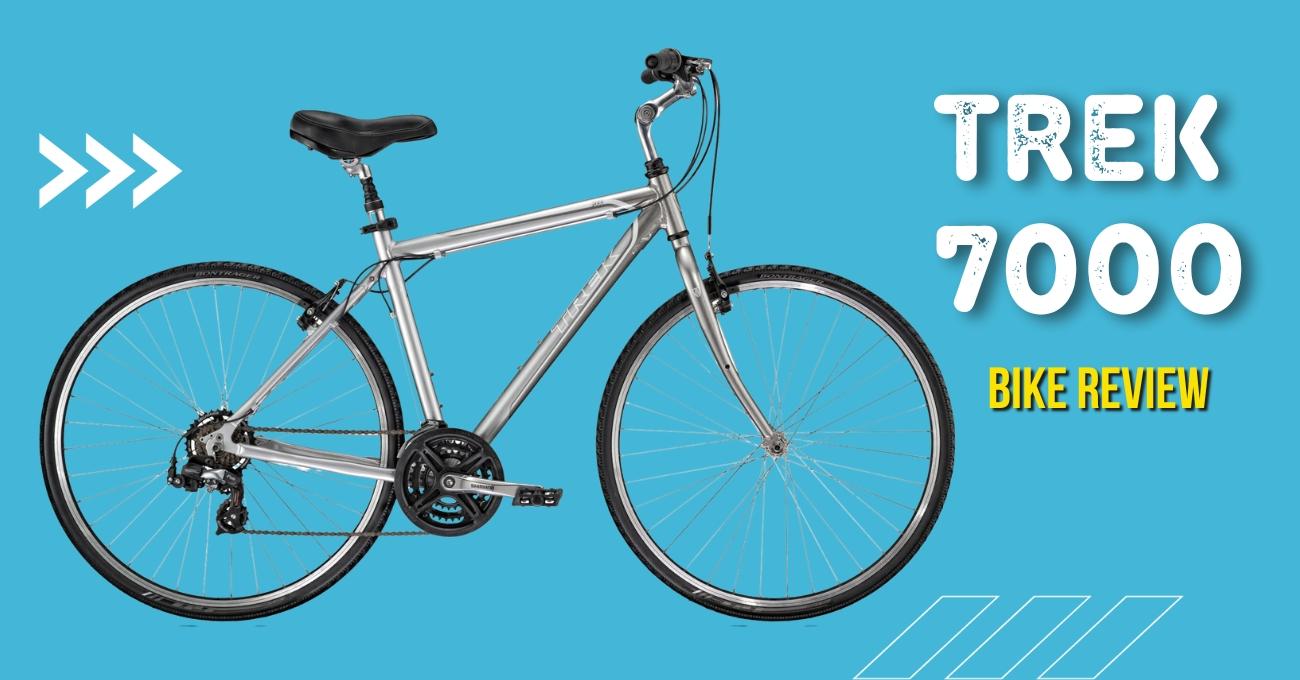
Key Takeaways
- The Trek 7000 showcases an ideal blend of lightweight aluminum construction and robust durability.
- Its versatile design guarantees top-notch performance and comfort from urban roads to challenging trails.
- With a perfect union of cutting-edge tech and quality components, it stands as a commendable choice for cycling enthusiasts.
This article may contain affiliate links where we earn a commission from qualifying purchases.
In the cycling world, few names evoke as much respect as Trek. The Trek 7000 stands as one of them because of its amazing features.
The Trek 7000 has an aluminum frame, contributing to its lightweight nature, making it easy for riders of all levels to handle. The comfortable seat post, rear derailleur, and smooth pedals ensure a comfortable ride on trails and terrains. This is a versatile mountain bike with solid durability.
This guide dives into a comprehensive review of this iconic bicycle, analyzing its unmatched features, from the intricacies of its frame to its sophisticated drivetrain and braking system. Whether you're a seasoned cyclist or a newcomer, this deep dive thoroughly explains what makes the Trek 7000 a revered choice among biking enthusiasts.
TABLE OF CONTENTS
Trek 7000 Bike Overview
The Trek 7000 is a versatile mountain bike for casual riders and those looking to hit the trails. This is a solid place to start looking for riders who love bikes with durability.
With its combination of quality components, comfortable ride, and stylish design, the Trek 7000 is an excellent choice for those who want to explore the great outdoors on two wheels.
It's known for its well-rounded features, such as durability and ease of use, and it comes with a medium price tag that doesn't break the bank. So, what should you know about the Trek 7000?
What We Loved
Frame and fork.
The aluminum frame of the Trek 7000 offers a lightweight yet durable foundation for this bike. It's an improvement over the earlier models, built with Alpha ZX aluminum. The high-tensile steel fork features curved blades, ensuring a smooth and comfortable ride on various terrains.
The Trek 7000 boasts a reliable drivetrain, including a Shimano M131 crank, a Shimano TX51 rear derailleur, and SRAM MRX 7-speed twist shifters. These components work together to provide smooth gear changes and excellent performance on various trails.
Wheels and Tires
This mountain bike comes with Bontrager 550 36-hole alloy rims and Bontrager H4 700x35c tires, which provide excellent traction and durability on different surfaces. The wheels and tires are perfect for those who want to tackle off-road adventures or simply enjoy casual rides around town.
Comfort and Size
The Trek 7000 is available in a range of sizes to accommodate riders of different heights. We particularly appreciated the comfortable saddle and easy-to-grip handlebars, making for an enjoyable ride that accommodates various riding styles.
What Could Be Improved
While the Trek 7000 features decent stock brakes, some riders may prefer to upgrade to higher-quality brakes for better stopping power and control. This is especially important for those who plan to tackle more advanced trails or ride in wet conditions.
Accessories
Although the Trek 7000 is a great bike on its own, we believe some riders may want to add accessories like a rear rack, fenders, or upgraded pedals to further personalize their bike and improve its utility.
Trek 7000 Distinctive Features
Comfortable design.
As casual riders, we can't help but appreciate the Trek 7000's comfortable design. The saddle is specifically designed to provide a comfy ride, making it ideal for those long days on the trails.
The bike also has the option to add fenders, a rear rack, and other accessories that make it even more user-friendly. We definitely enjoy riding this mountain bike.
Lightweight Frame
The Trek 7000 mountain bike features a light yet strong aluminum frame. This lightweight property greatly affects our ability to ride longer and tackle uphill climbs easily. The lightweight frame makes it much easier to handle and maneuver while riding.
Smooth Ride Quality
When it comes to ride quality, this bike truly shines. The Trek 7000 is equipped with reliable components such as the rear derailleur and brakes. Its tires are designed for various terrains, providing excellent grip and traction. The bike's fork ensures a smooth ride by absorbing shocks and vibrations.
Core Strengths of the Trek 7000 Bike
Superior durability.
One of the main reasons why we love the Trek 7000 mountain bike is its superior durability. The aluminum frame is made of high-quality materials that can withstand the test of time.
With proper care and maintenance, this bike can serve both casual riders and mountain biking enthusiasts for years.
Efficient Performance
Another core strength that makes the Trek 7000 an excellent choice is its efficient performance. This mountain bike is designed to handle various terrains, making it perfect for those who love to take on new trails.
With a wide gear range, riders can easily tackle hills and enjoy a comfortable ride even on uneven surfaces. The tires on this bike are also designed to provide excellent traction, ensuring a smooth and safe ride.
Advanced Technology
Trek is a brand known for utilizing advanced technology in their bikes, and the Trek 7000 is no exception. The smooth welds on the frame and the durable aluminum material make it a light yet robust mountain bike.
The components of the bike, such as the drivetrain and brakes, are also designed to provide top-notch performance during rides. The high-quality aluminum material used in the frame ensures a durable and lightweight bike that can handle challenging trails.
The smooth welds are not just for aesthetics. They also contribute to the frame's overall strength and durability. The Trek 7000's wide gear range allows you to easily ride up hills and tackle various terrains.
Trek 7000 Frame and Build Quality
The Trek 7000 prides itself on an advanced aluminum alloy frame, ensuring a lightweight yet robust structure. This material choice provides an optimal balance between agility and sturdiness.
The frame's geometry, tailored for both comfort and performance, caters to varied rider preferences. Noteworthy is the meticulous welding technique which offers seamless joints, enhancing the overall aesthetics and durability.
With anti-corrosive properties and rigorous testing, the Trek 7000 ensures longevity, even in the toughest of conditions, justifying its reputation in the biking community.
Trek 7000 Drivetrain and Braking System
The heart of the Trek 7000's performance lies in its precision-engineered drivetrain. Sporting top-tier components ensure seamless gear shifts with a wide range to cater to steep climbs and fast descents.
The bike boasts a modern derailleur system, delivering crisp transitions between its multiple gears. Complementing the drivetrain is its efficient braking system. Equipped with hydraulic disc brakes, the Trek 7000 offers rapid stopping power, ensuring safety even in wet conditions.
Compared to competitors, its responsive drivetrain and potent braking mechanism position it as a frontrunner in its class, providing an unmatched riding experience.
Suspension and Handling
Central to the Trek 7000's appeal is its state-of-the-art suspension system. Equipped with responsive front shocks, it promises a smooth ride even on rugged terrains. These suspensions are adept at absorbing shocks from bumps, providing cyclists with a jolt-free experience.
Its geometry is specifically designed to offer improved handling on diverse terrains - from city roads to mountain trails. Thanks to the bike's lower center of gravity, riders can expect unparalleled stability.
All these features collectively ensure that regardless of the path taken, the Trek 7000 guarantees a ride that's both comfortable and controlled.
How Durable Is The Trek 7000?
The Trek 7000 is a well-built mountain bike designed to withstand rough terrains and provide a comfortable ride for casual riders. The durability of this bike primarily lies in the materials used for its construction.
The frame of the Trek 7000 is made from high-quality aluminum, which provides the bike with a lightweight and sturdy structure. This material contributes to the bike's durability and enables it to handle tough trails without sustaining significant damage.
The components of the Trek 7000, such as the rear derailleur, brakes, and drivetrain, are also carefully selected to ensure a long-lasting performance. Quality tires are crucial for the durability of any mountain bike, and the Trek 7000 is no exception.
The tires used in this model are designed to provide excellent grip, even on challenging surfaces, ultimately enhancing the bike's longevity. The wheel design is super durable for off-roading too.
Is The Trek 7000 Worth Buying?
As mountain bike enthusiasts, we believe the Trek 7000 is worth considering, as it has built a solid reputation over the years. Designed for both casual riders and those new to the sport, this bike is known for offering a comfortable ride while still providing durability and performance.
One of the components contributing to the comfortable ride is the aluminum frame, which is both lighter and stronger than many alternatives. This makes the Trek 7000 easier to handle and more capable of tackling various trail conditions.
Additionally, the wide gear range on this mountain bike allows for easier hill climbs and a more enjoyable overall experience. We like the fact that the Trek 7000 is suitable for casual riders, but it's also designed to handle more adventurous trails.
Before making a decision, research your own and read reviews from fellow cyclists better to understand the Trek 7000's riders' experiences. We think it’s a good buy, and we're confident you'll enjoy hitting the trails with this reliable mountain bike.

Why Road Cyclists Are Switching to Gravel Bikes

Why Fitness Enthusiasts Are Switching to Smart Cycling Trainers

Why Competitive Cyclists Are Switching to Aero Road Bikes

Why Eco-Conscious Riders Are Switching to Bamboo Bikes
About THE AUTHOR

Danny Lawson
Mountain biking is more than just a hobby for me - it's a way of life. I love the challenge and excitement that comes with it, and I'm always pushing myself to go faster and ride harder. Some people might think that mountain biking is dangerous, but I see it as the only way to live.
Trending Now

Why City Dwellers Are Switching to Folding Bikes

Why Budget-Conscious Riders Are Switching to Co-op Bike Brands

Why Mountain Bikers Are Switching to Fat Tire Bikes

Why Urban Commuters Are Switching to Electric Bikes

Project Description
Project name:, year of construction:, contractor:, total quantity:.

IMAGES
VIDEO
COMMENTS
Aluminum frames and components have been commonplace throughout the cycling industry for much of its history, but that doesn't mean there aren't extraordinary opportunities for advancement and perfection. With Alpha Aluminum, Trek has applied the most sophisticated concepts of metallurgy and stretched them to the absolute maximum—building ...
Reasons to avoid. -. High retail price. Cannondale's CAAD frames have long been considered the gold standard in aluminium race bikes, and the latest iteration the CAAD13 builds on that legacy. The ...
Trek Émonda ALR 5. $2,300 at Trek Bikes. Credit: Trek. Pros. A great riding aluminum frame with dialed fit and geometry. Mostly easy to service, adjust, and upgrade. Cons. Official max tire ...
The best aluminium road bikes in 2024. These are our favourite aluminium road bikes in 2023. This list compiles the top-rated alloy frame road bikes as reviewed by the experts at BikeRadar.
As it is, $1,800 / £1,600 and Shimano Tiagra 10-speed is where the range tops out. I think that's a shame as the Allez Sport offers a really nice ride. It might be a temporally challenged mixed ...
DESCRIPTION Frame Material: aluminum Frame Angles: Unspecified Sizes: 43cm, 50cm, 52cm, 54cm, 56cm, 58cm, 60cm, 63cm Colors: Brushed, White/Blue Fork: Trek Rear Shock: Not applicable Brake Levers: Shimano Sora STI Dual Control Handlebar: Bontrager Ergo Stem: aluminum Headset: 1 1/8" threadless Aheadset Front Der: Shimano Sora Triple Crankset: Bontrager Sport, 30/42/52 teeth
Shop for Trek mountain bike frames for a custom-built bike of your dreams. Low prices, fast free shipping over $100, and 100% satisfaction guarantee. ... Slash AL Frameset is the perfect platform for a fast 29er enduro or trail bike build. With a burly Alpha Aluminum frame, Trek's exclusive RE:aktiv shock, and a Knock Block 2.0 integrated ...
A lightweight Alpha Platinum Aluminum frame internal storage, Mino Link adjustable geometry, a 120mm Fox Performance Float shock with 2-position DPS damper, Knock Block 2.0 headset, 35mm Bontrager Elite stem, and internal cable routing. Designed for a 120mm fork, but can handle up to 130mm of fork travel. Fits 2.4" tires. The final word. If you ...
Having started out in steel, Trek moved into developing aluminium bikes in 1985. The first Trek branded full carbon frame came in 1989 - the Trek 5000 had a frame weight of 1.5kg.
The Trek 4300 mountain bike is a reliable and versatile bike that can handle a variety of terrains and riding styles. With its durable aluminum frame, wide range of gears, and powerful brakes, this bike is a great choice for both beginners and experienced riders. Trek 4300 offers a solid balance of performance and affordability.
The Trek 3900 is one of the models in Trek's entry-level mountain bike lineup from years past. For beginners looking to get into mountain biking or casual riding, the Trek 3900 offers several benefits. First, Trek is known for building sturdy frames. The 3900 model, in particular, features an aluminum frame, which is both lightweight and durable.
Aluminum mountain bikes weigh around 1 pound more than comparable carbon fiber mountain bikes. Carbon fiber frames are lighter than their aluminum counterparts because the material is less dense. The density of modern carbon fiber is about 1.9 g/cm^3 compared to aluminum which has a density of about 2.3 g/cm^3.
The Trek 7000 is a well-built mountain bike designed to withstand rough terrains and provide a comfortable ride for casual riders. The durability of this bike primarily lies in the materials used for its construction. The frame of the Trek 7000 is made from high-quality aluminum, which provides the bike with a lightweight and sturdy structure.
2023 Trek Domane AL 5 Disc, Size 58 cm, Very Good - INV-92051. 30 Day Guarantee / 24 Hr Processing. $2,003.40. $150.00 shipping.
Be ready to view the world from our frame. Established in 1978, Mimsa Aluminium is one of the prominent companies in the industry with over 40 years of industrial experience and aluminum applications which are suitable for any project ranging from large-scaled commercial structures to small-scaled private residences. Company Profile ->.
The 9th radio centre of Moscow was a high power shortwave and medium wave broadcasting facility at Elektrostal near Moscow.Its broadcasting frequency was 873 kHz with a transmission power of up to 1200 kilowatts. It was also used as radio jammer of "unwanted" stations.
Aluminium Entrance Frames. Glass Structures. Complementary Items. Lightweight Steel Structures. Certificates and Accreditations. Email Subscriptions. You can become an e-mail subscriber in order to be informed about the developments related to our company. Products. Aluminium Windows;
Adres: BOSB Mermerciler San. Sitesi 4. Cadde No: 7 34520, Beylikdüzü / İstanbul / TÜRKİYE